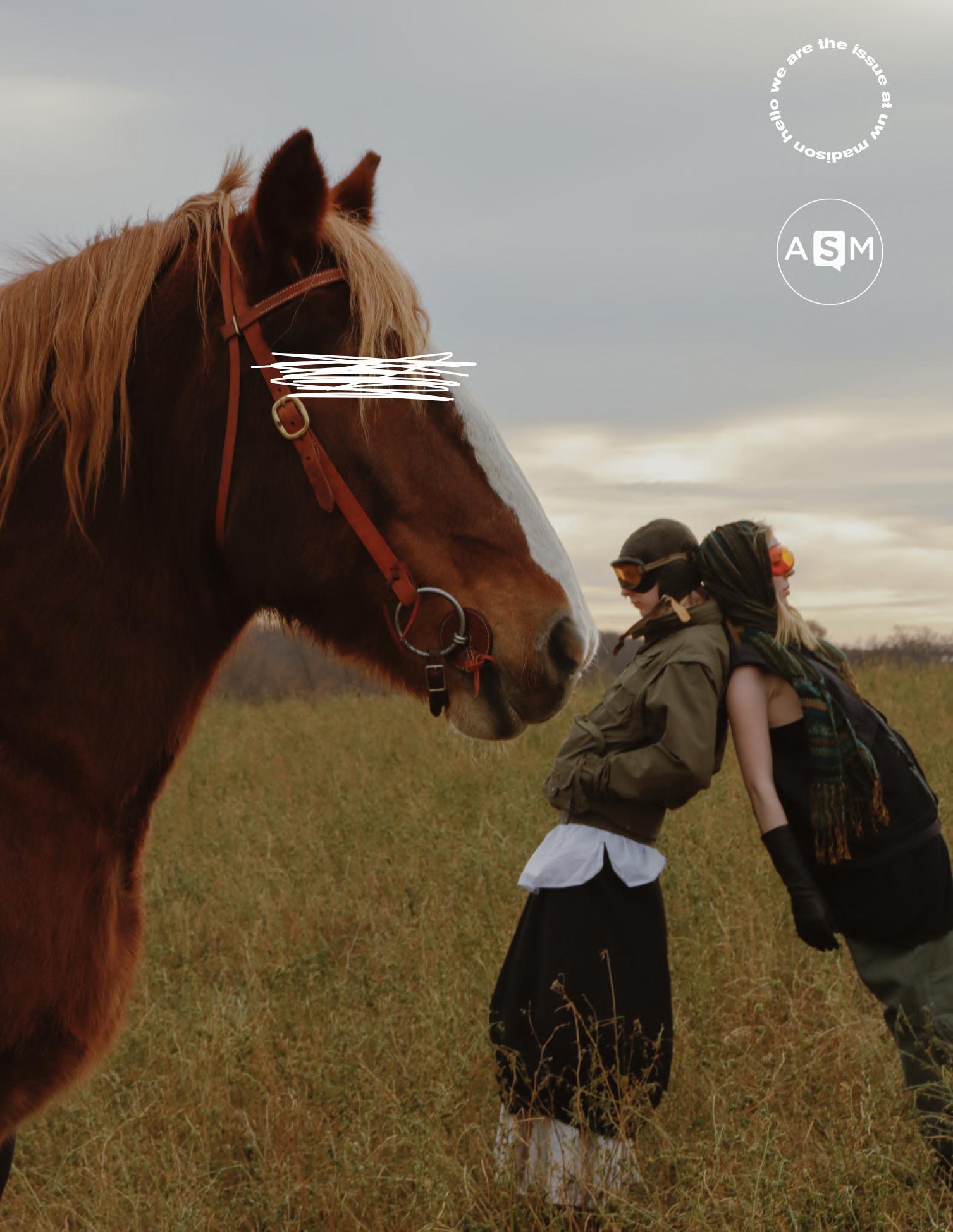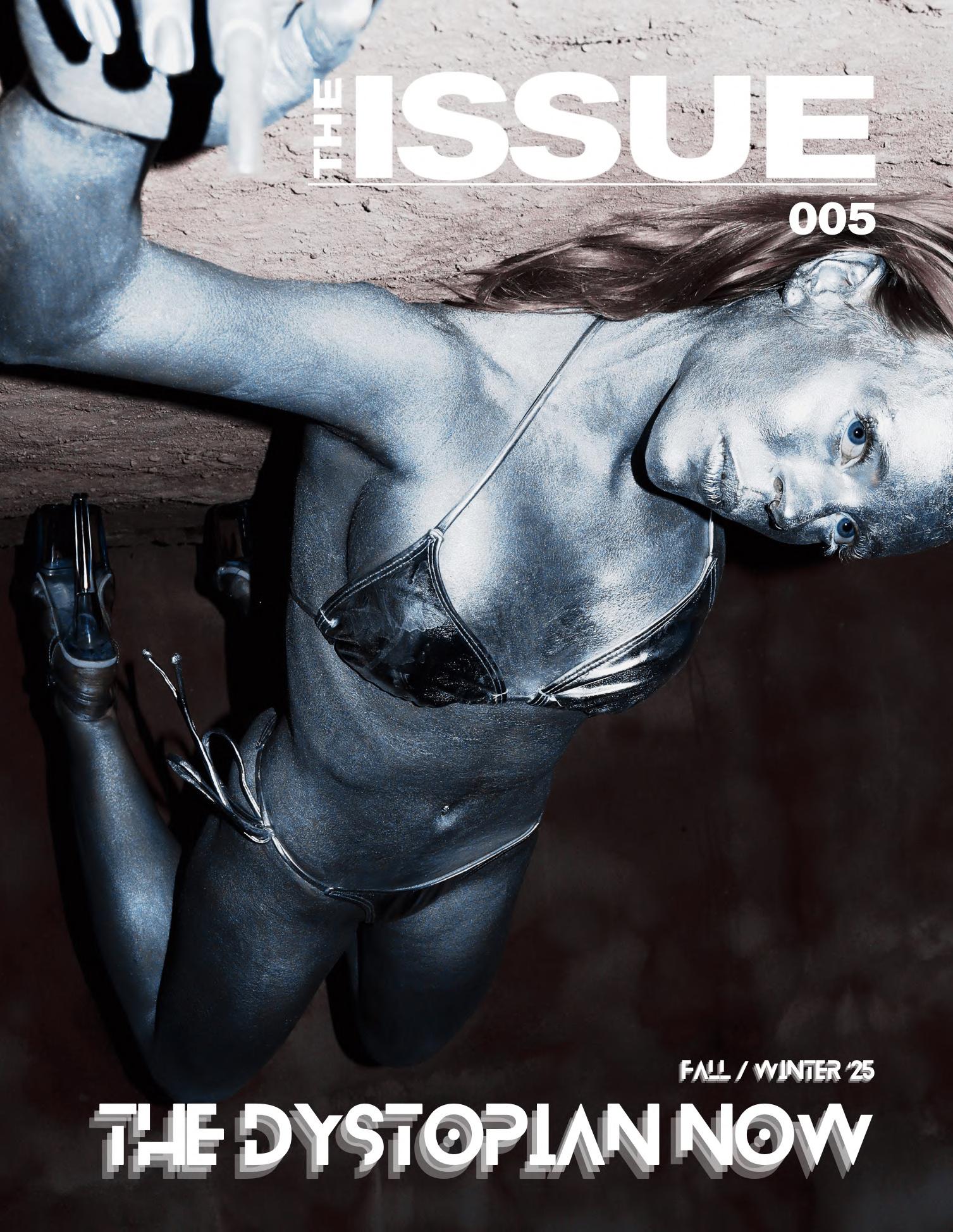

ISSUE.005 contents
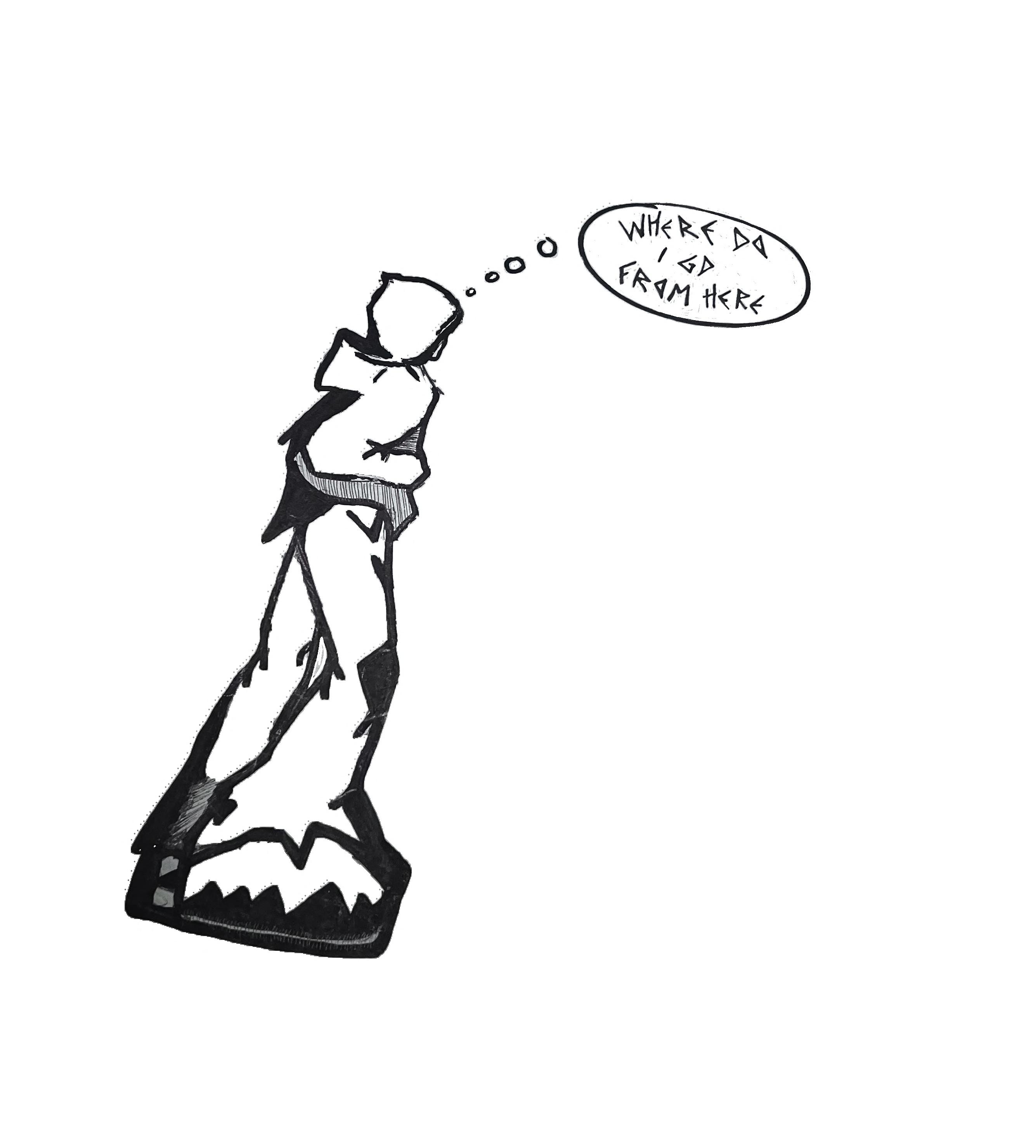
THIS PRINT ISSUE COVERS STORIES REGARDING SEXISM, RACISM, GENOCIDE, SOCIETAL COLLAPSE, AND THE END OF THE F*CKING WORLD (AND A FEW TWISTED THINGS IN BETWEEN). WE APOLOGIZE FOR ANY POTENTIAL INDUCED EXISTENTIAL DREAD. WE WELCOME YOU TO JOIN US IN SITTING WITH THESE STORIES.
this magazine has been passed through the hands of many. working and collaborating collectively as a community that makes up The Issue. our executive board exetends a huge thank you to our largest general body this organization has seen since its founding and we could not have pulled it off without your brilliant minds and dedication to produce something of such magnitutde.

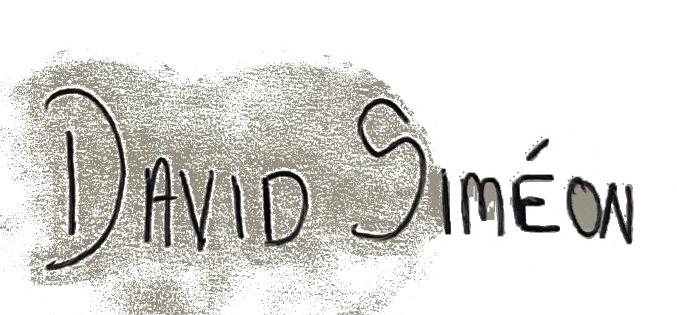
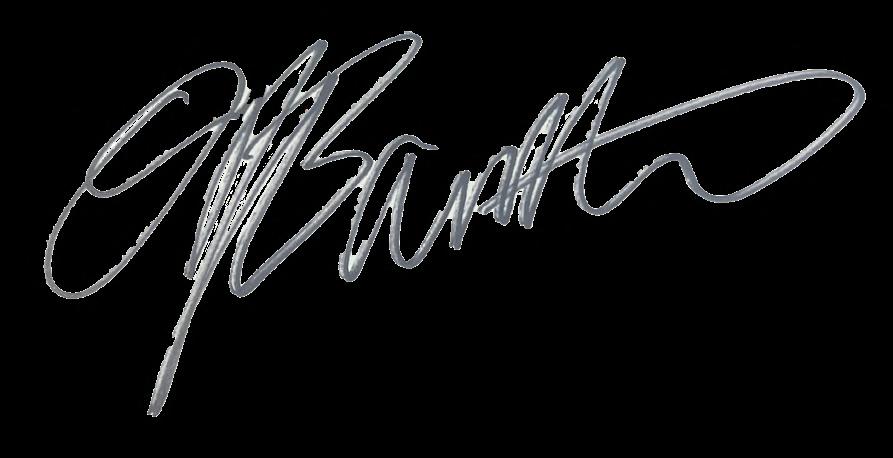
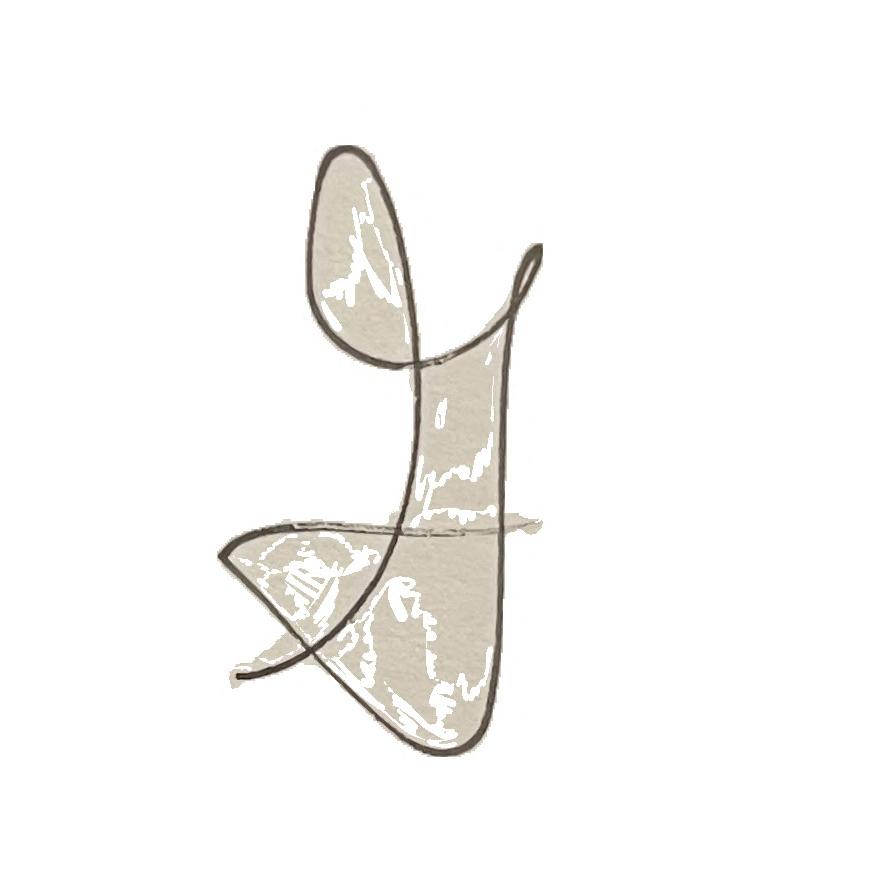


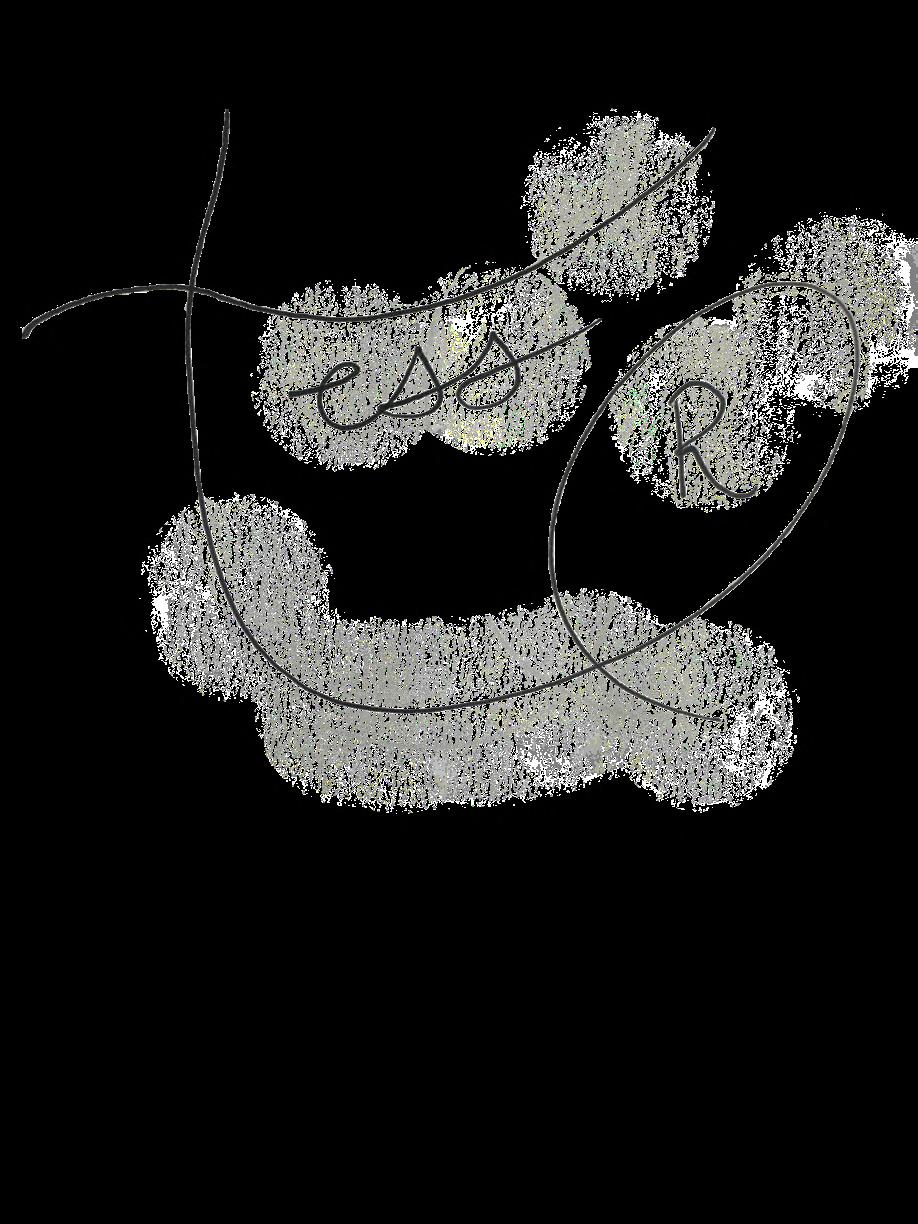
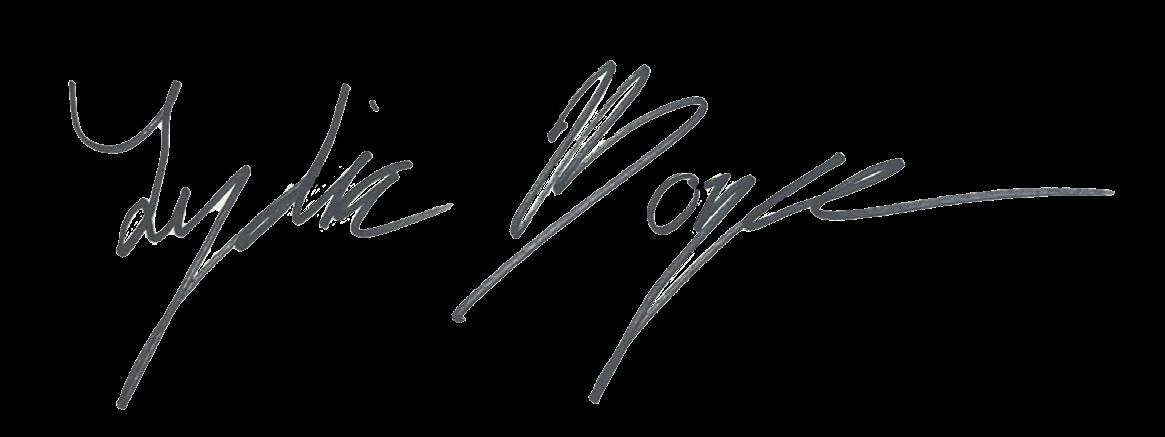
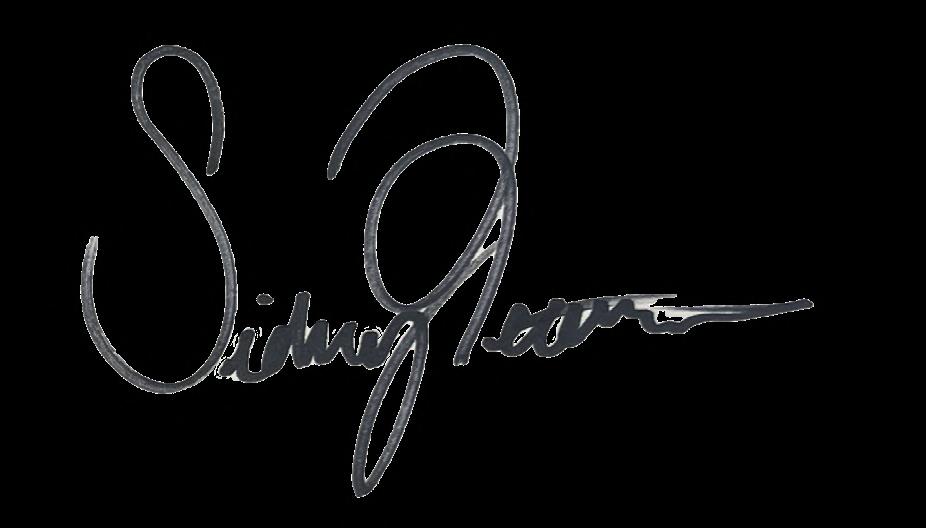


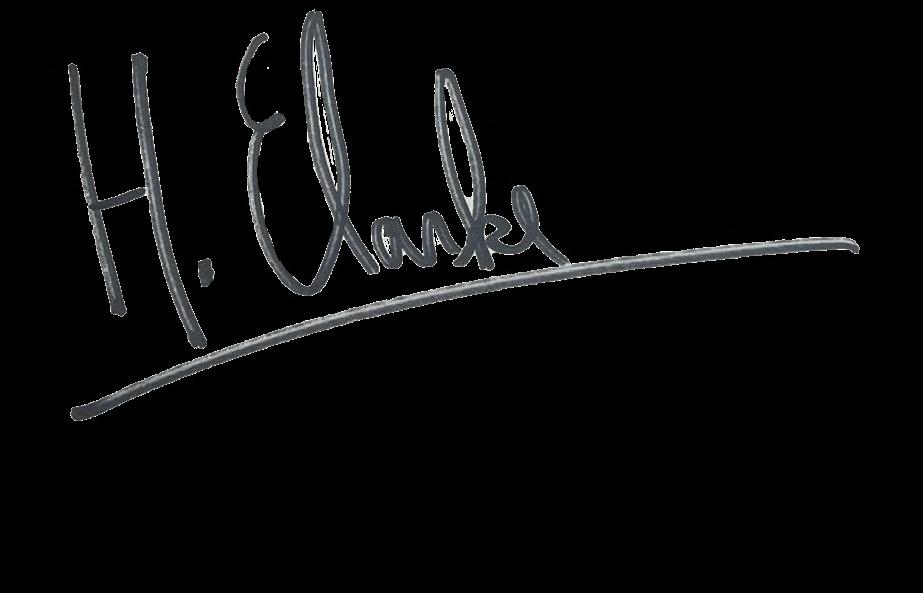
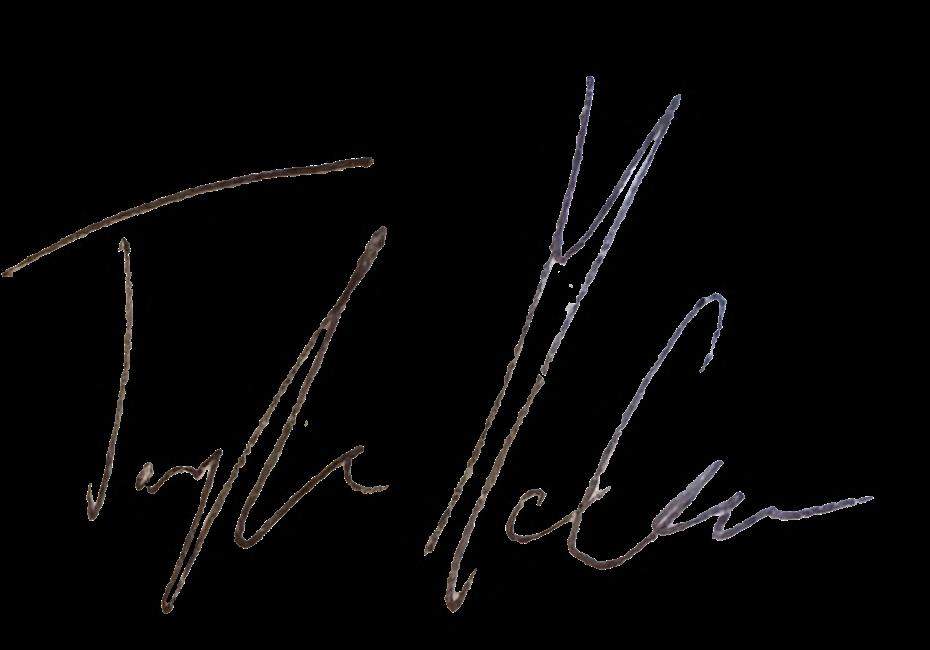
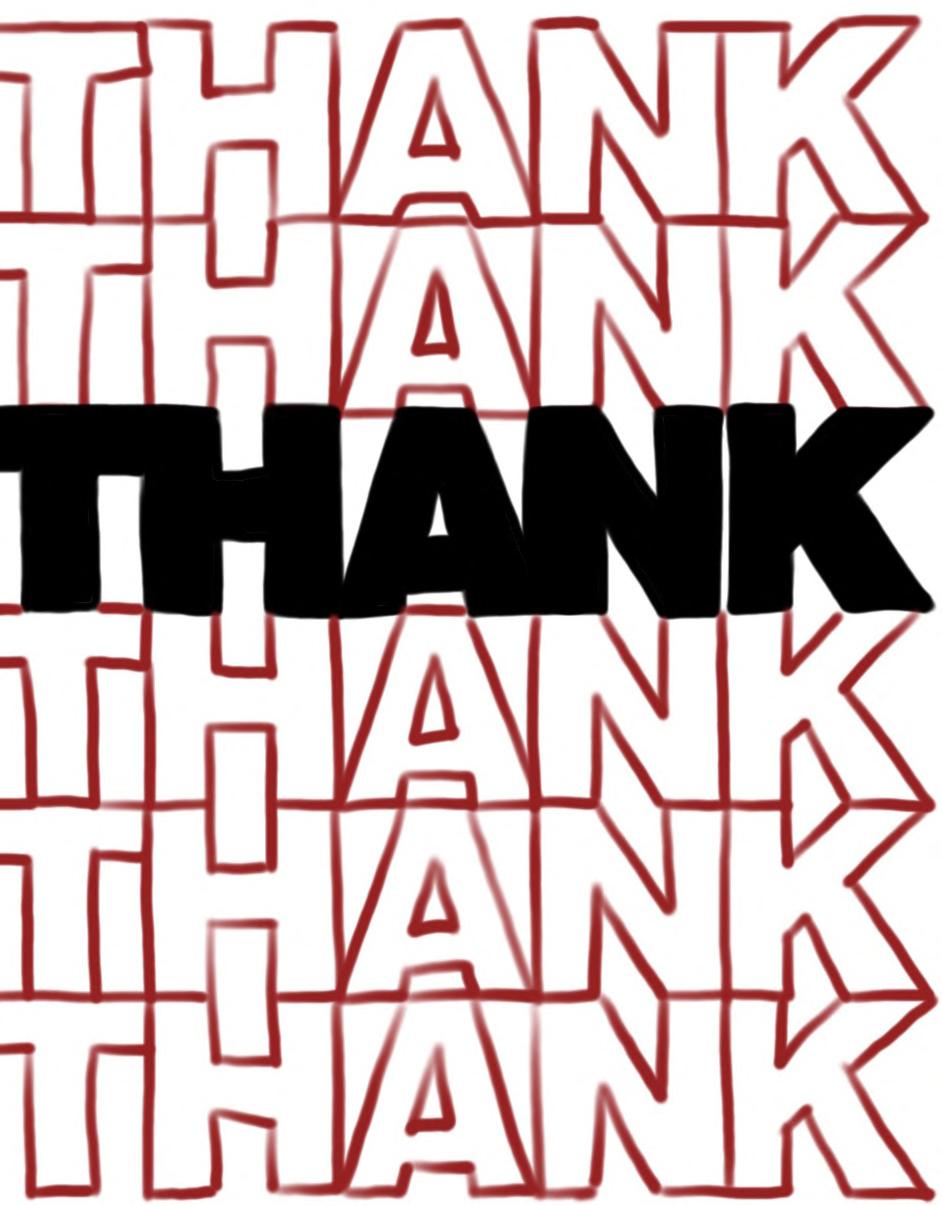
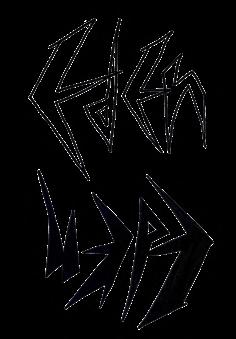
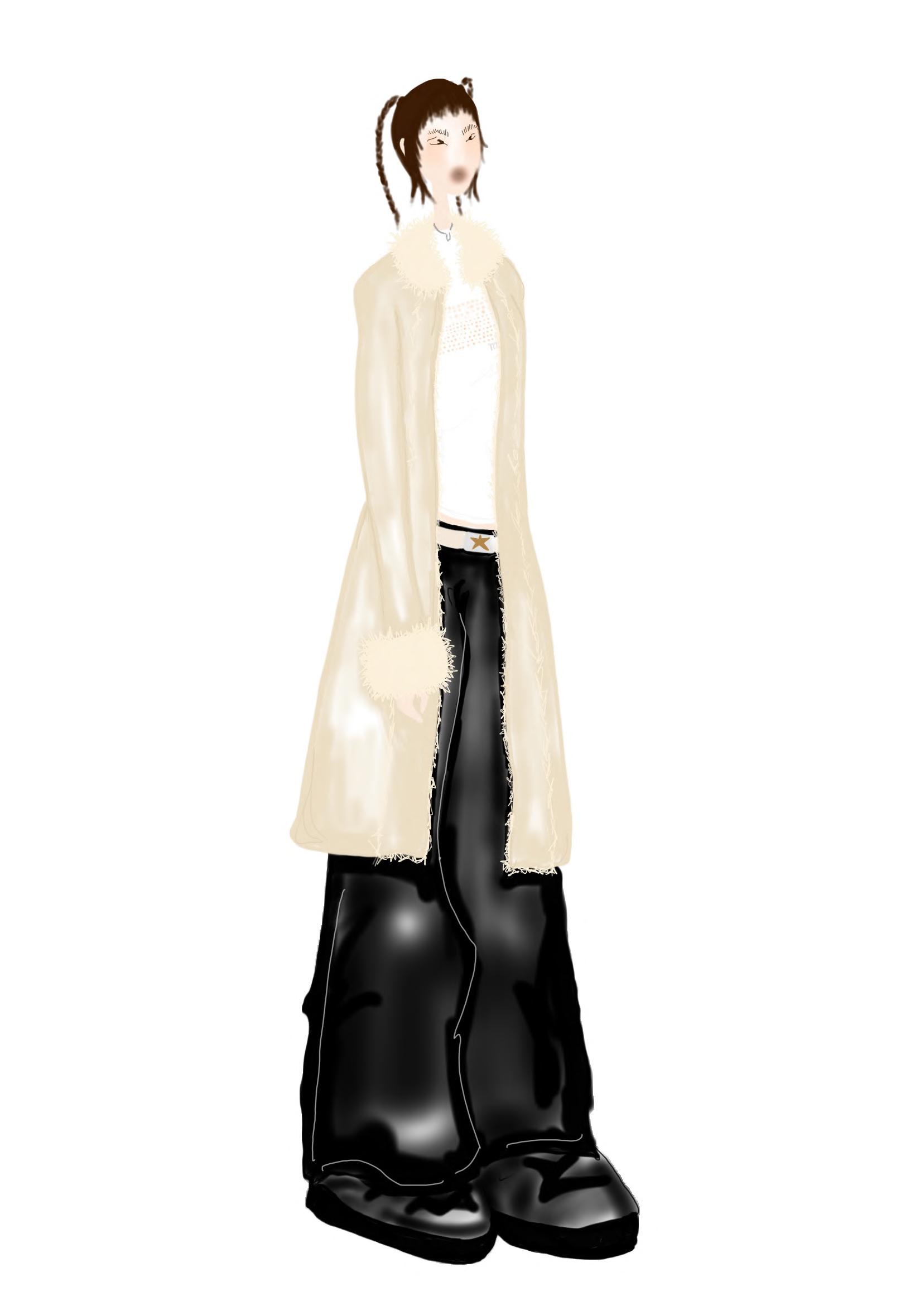
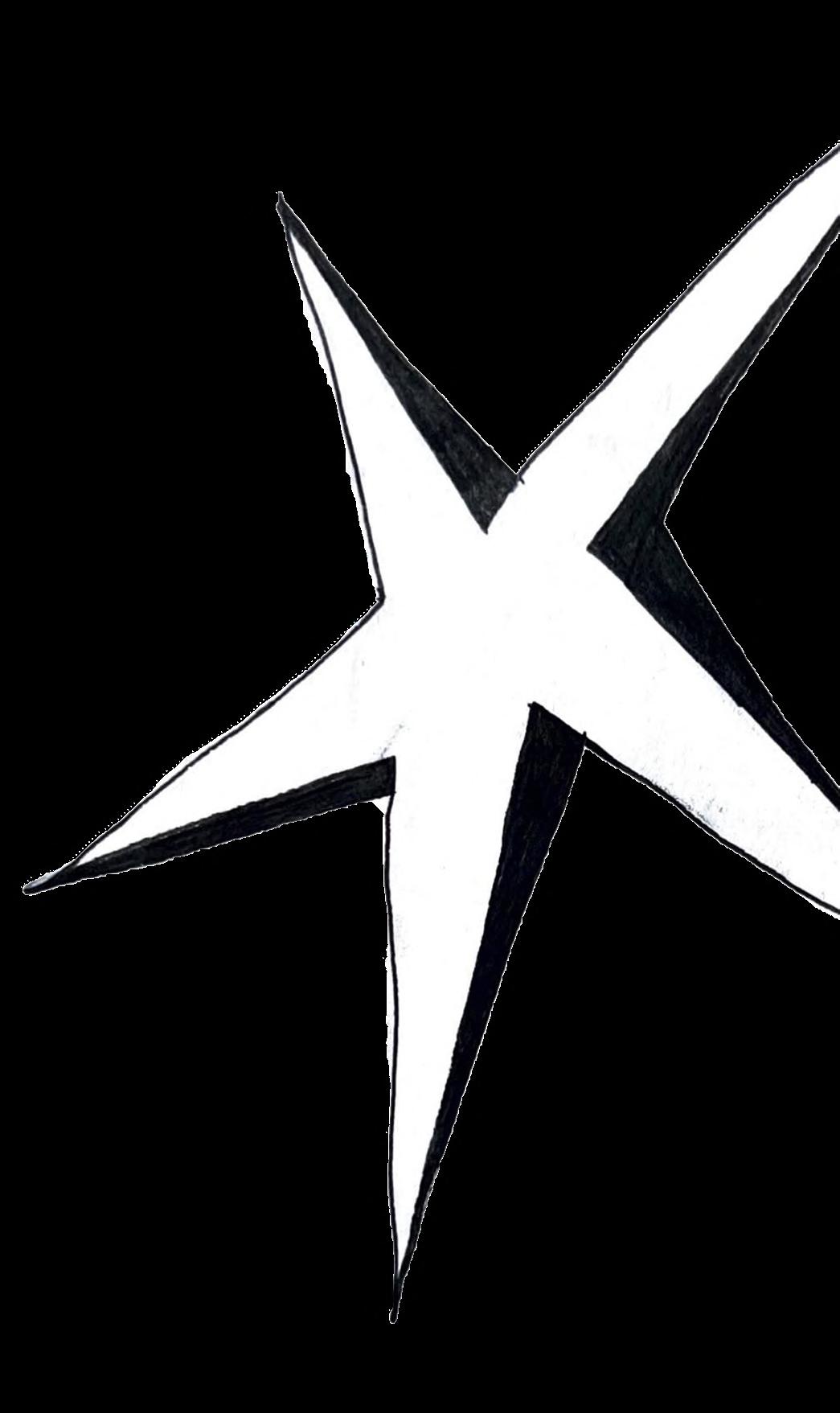
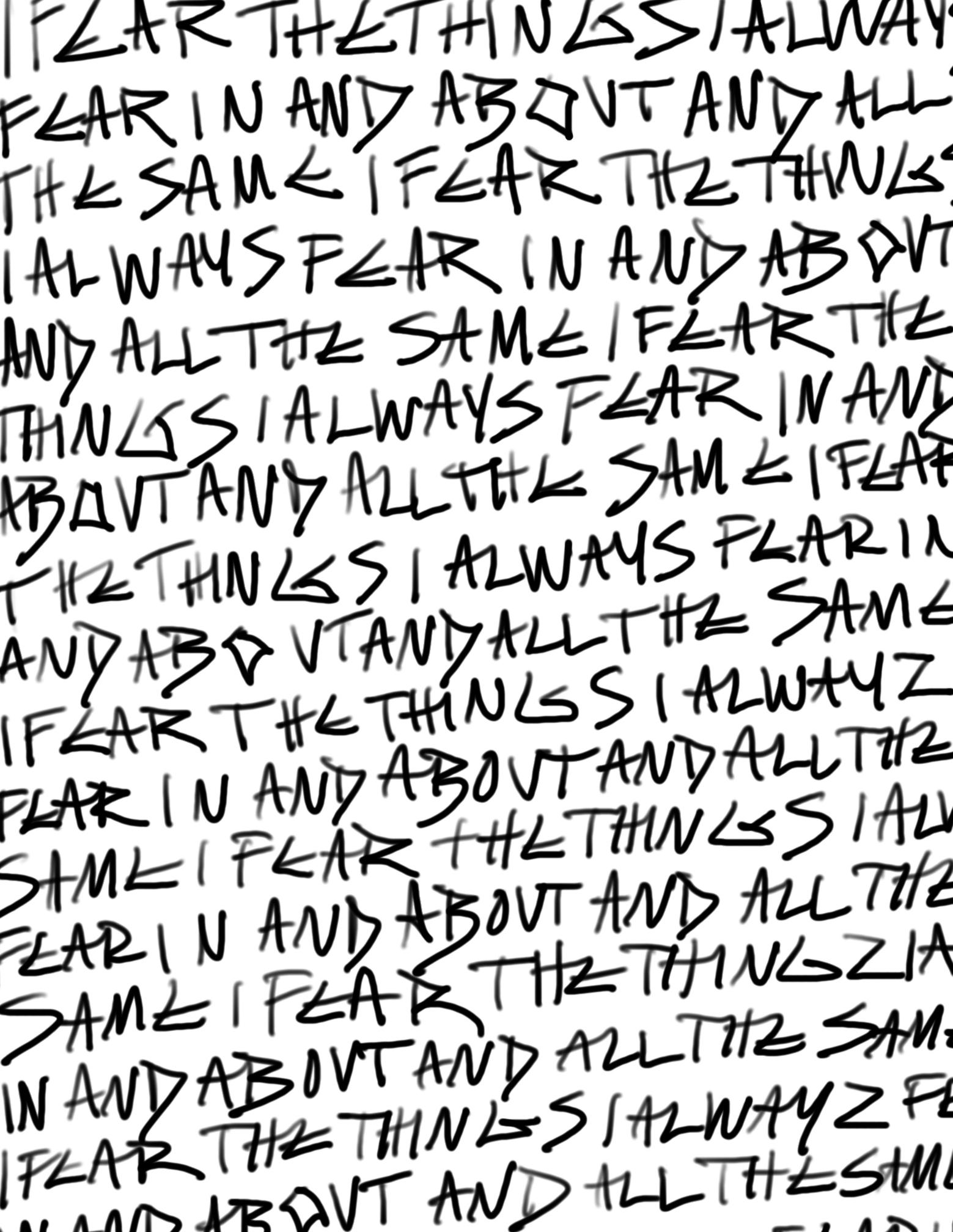
WELCOME BACK. WE HAVE A LOT TO UNPACK.
At the beginning of this year, we all felt the complete overwhelm and heaviness of life. It’s aura lingered in the air like fog. Consuming us all. Breathing in the contaminated air, we were unable to distract ourselves from the hateful and hurtful world we all live in. We’ve been monetized, desensitized, and marginalized.
Using eachother to remain standing, we poured every fragment of feeling we had left to dissect society as it plunges deeper into DYSTOPIA.
Everything is coming alive and changing... and it’s probably for the worse.
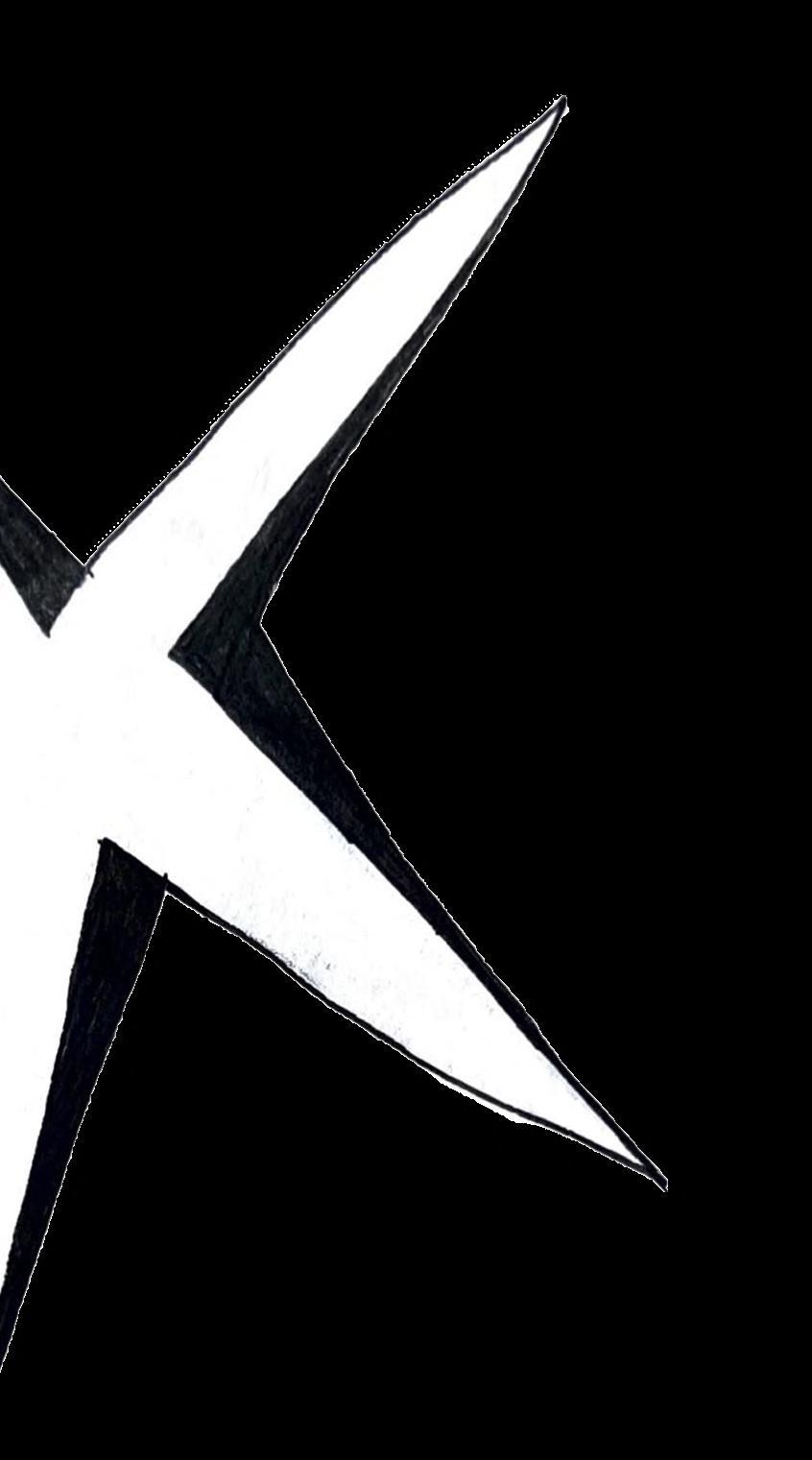
When we are all doomed to face the fate of our own human greed and necessities, blinded to forget where we come from and the changes we’ve made that have since been erased. At the end of all of this, there will be nothing but a mirror, a relfection of ourselves.
And I hope that makes you uncomfortable. It should!
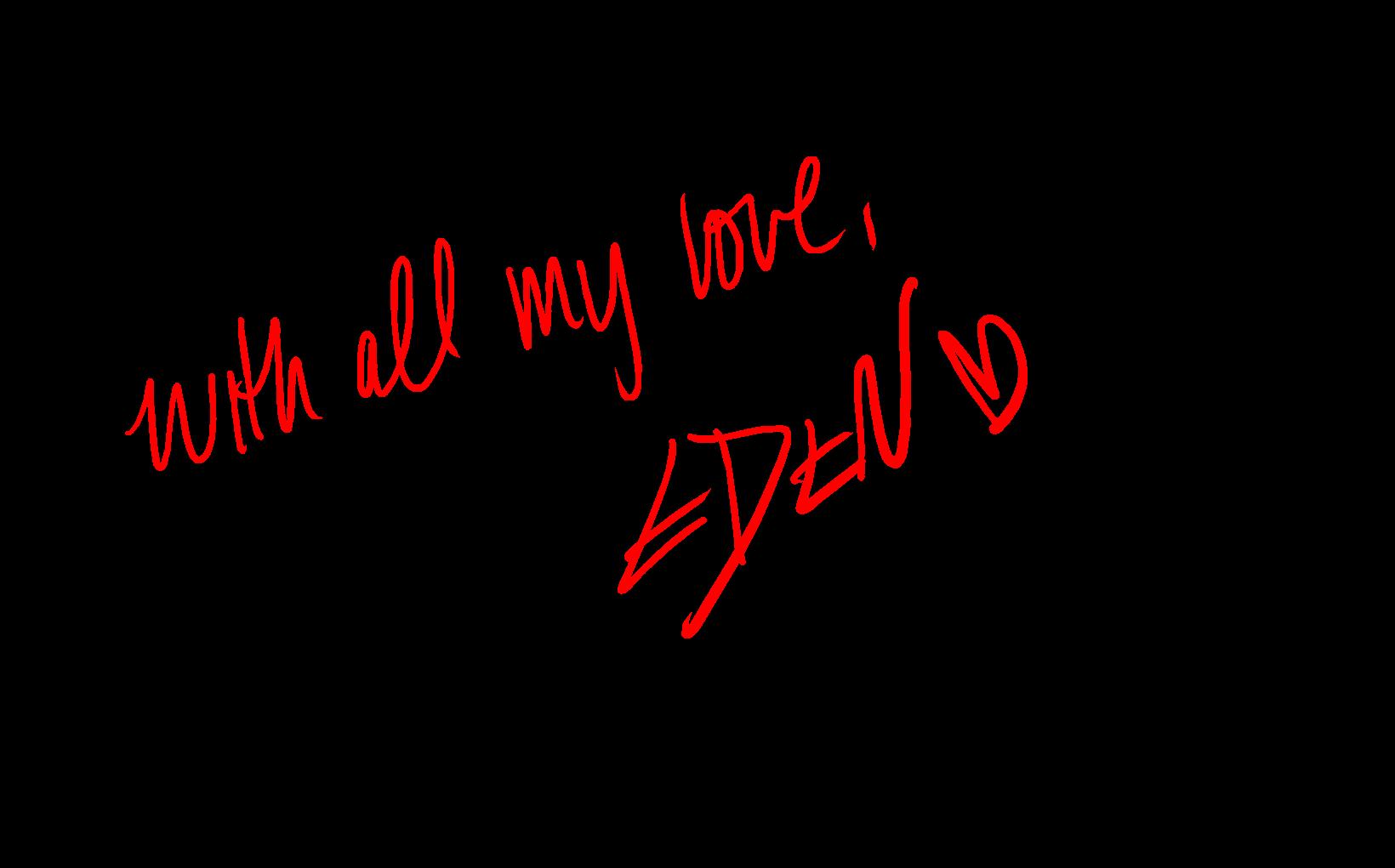
Enjoy this finely curated collection of words and images... or don’t. It’s up to you to keep reading.

An Address from the Sustainability Chair
As a student at the University of WisconsinMadison, I’ve combined two majors to pursue a unique path at the intersection of sustainability, creativity, and innovation. Majoring in Environmental Studies and Consumer Behavior & Marketplace Studies, my journey is defined by a deep committment to sustainability and a drive to inspire meaningful change in the fashion industry. I am particularily passionate about reshaping consumer habits and elevating sustainable practices within creative industries.
In 2022, I founded THR Studio, a sustainable fashion brand that exemplifies my dedication to combining innovation and environmental consciousness. With every collection, I explore new ways to upcycle, experiment with sustainable fabrics, and create designs that challenge the traditional fashion narrative.
At The Issue, my role as Sustainability Chair ensures that sustainability remains at the core of our magazine. This involves embedding eco-concious
practices into our photoshoots, projects, and overall creative practices. My role is not just about reducing our environmental footprint but also about inspiring a mindset shift, both within our team and among our readers.
One of my proudest achievements is curating “When Society Collapses” for our latest issue, The Dystopian Now. This three-part series of photoshoots explores the consequences of human actions on the environment and society. From overconsumption to toxic production methods and car-dependent infrastructure, each shoot is a visual call to action. Creative directing the overconsumption shoot gave me the chance to bring my vision to life and challenge our audience to rethink their relationship with consumption and the planet.
By combining my work at The Issue with my passion for sustainable fashion through THR Studio, I hope to demonstrate that sustainability is not just a goal, it’s a way to innovate, create, and lead with purpose.
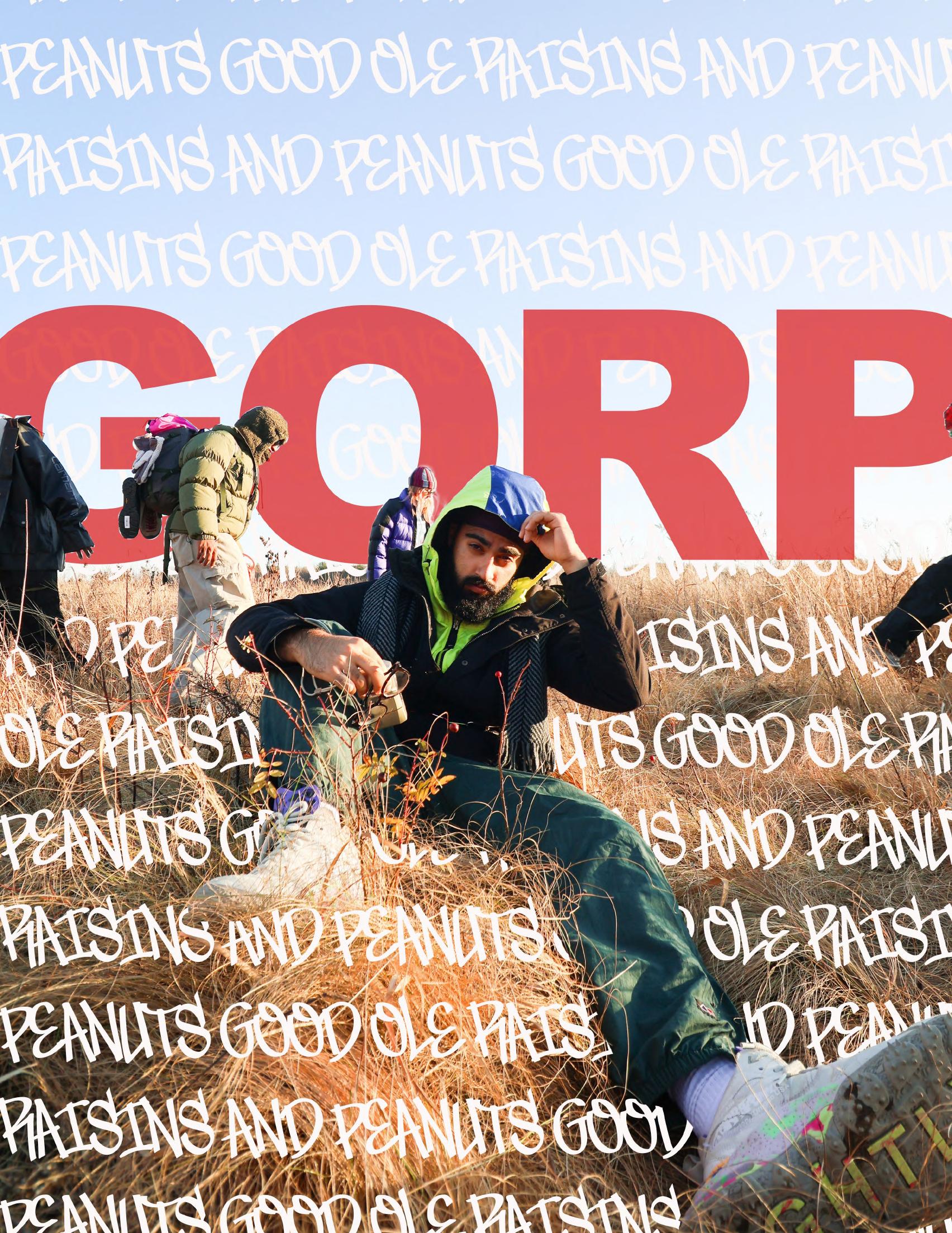
THE BROS DISCOVER AN ODYSSEY OUTERWEAR
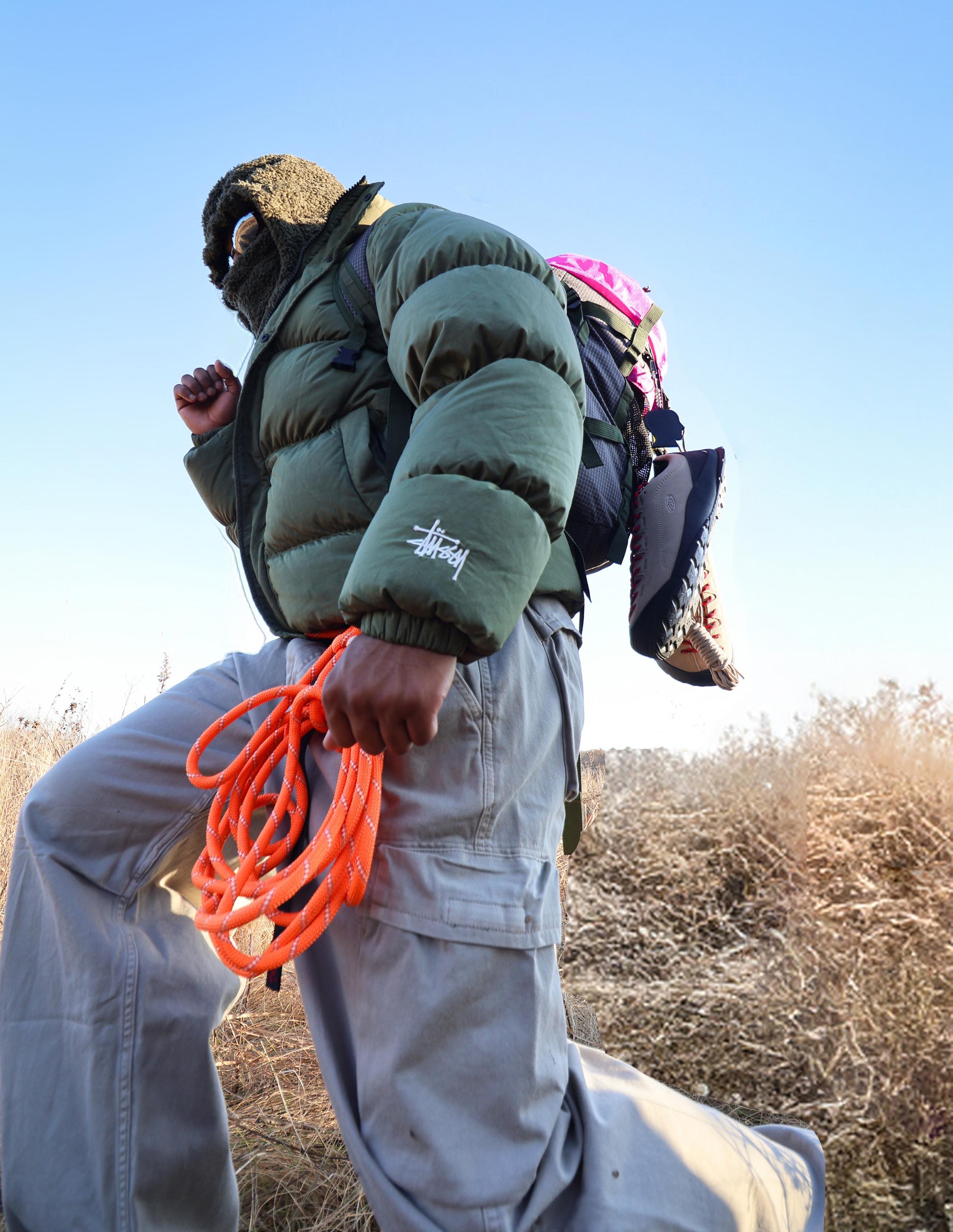
Prose by Mairi Shea Photos by Kaelin Silas Spread by Olivia Fedrizzi

There’s something specific about the smell of the great outdoors. Unlike the smells that we may encounter in college — the basement of UW-Madison’s finest fraternity, the sulfur that enshrouds Gordon’s Dining Hall, to name a few — the outdoors lets us inhale something different for a change. Yet, getting out in nature requires a certain vibe in my opinion; especially for our annual camping trip in Door County.
GORP:
First and foremost: the speaker. If Tommy’s JBL isn’t fully charged and ready to go with our playlist entitled, “The Bros Take NW (Northern Wisconsin)”, why even bother? It’s filled with 10 hours of exactly what we need to enjoy nature: The Grateful Dead, Johnny Cash then obviously Kendrick to end the night.
ODYSSEY OF OUTERWEAR
Then, we need JP’s dad’s old Jeep Wrangler– top off is essential; I crave feeling the wind through my mullet. It’s all looking good today. Free Bird plays next on the car’s speakers, and I’ve already forgotten about all the coloring homework I have to do for Marketing 330. JP’s driving, I’m on the aux, Mikey and Slater in the backseat, I couldn’t ask for more. Life feels… right.
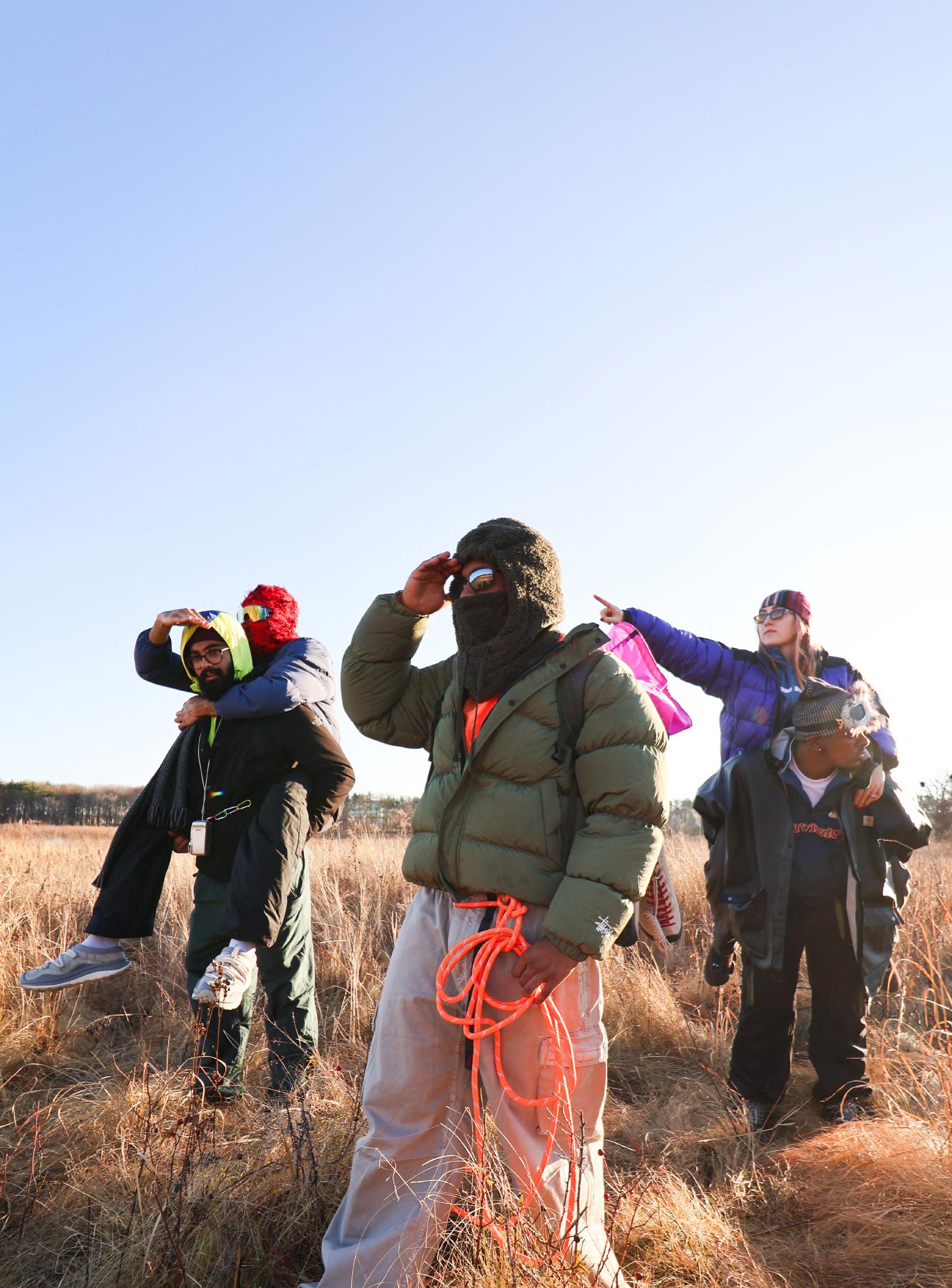
Anyways, the trip is going great, but, it’s not yet perfect. I’m cold. I’ve been cold since we left Langdon. But I can’t say anything to the boys because they’ll think I’m soft. I don’t know what to do! JP starts taking the next exit to hit the Culver’s drive through (obviously) and I notice there’s an Arcteryx outlet right next door– it’s calling me. I feel like Frodo when he first saw the Ring. My suffering is over.
I tell the boys I’ll be back in a minute, and I enter the glorious mansion of oversized jackets– my jaw is on the floor. I see the sickest royal blue puffer jacket I’ve ever seen; for lack of a better term, it goes so hard. I cop it without hesitation and return to the guys. JP immediately drops his butter burger: “Dude, where did you get that. It’s sick”. Mikey and Slater chime in with ooh’s and ahh’s, swooning over my latest find.
Styled by Kennedy Shepard & DaveSimeon
Modeled by Noble Mahan Kabir Chawla
GOOD OLE RAISINS AND PEANUTS

I gesture to the store, JP throws the car in park and they’re running. We’re all running to get them absolutely fitted up: we spend hours here. The clerk, Rachel, has quickly become our new best friend and will join us on the camping trip after her shift.
As we’re wrapping up our adventure in apparel, she asks, “Do you guys know what this is called? All the stuff you’re buying?”, “Drip?” we reply in unison, “No,” she exclaims, “It’s called GORP”. And suddenly we’re chanting:
“GORP “GORP GORP”

RAISINS
“GORP GORP GORP” GOOD OLE RAISINS AND PEANUTS
the remaining customers join in,
“GORP GORP GORP GORP”

“What does it mean?”, I asked Rachel. She enlightened us, “Good old raisins and peanuts”.
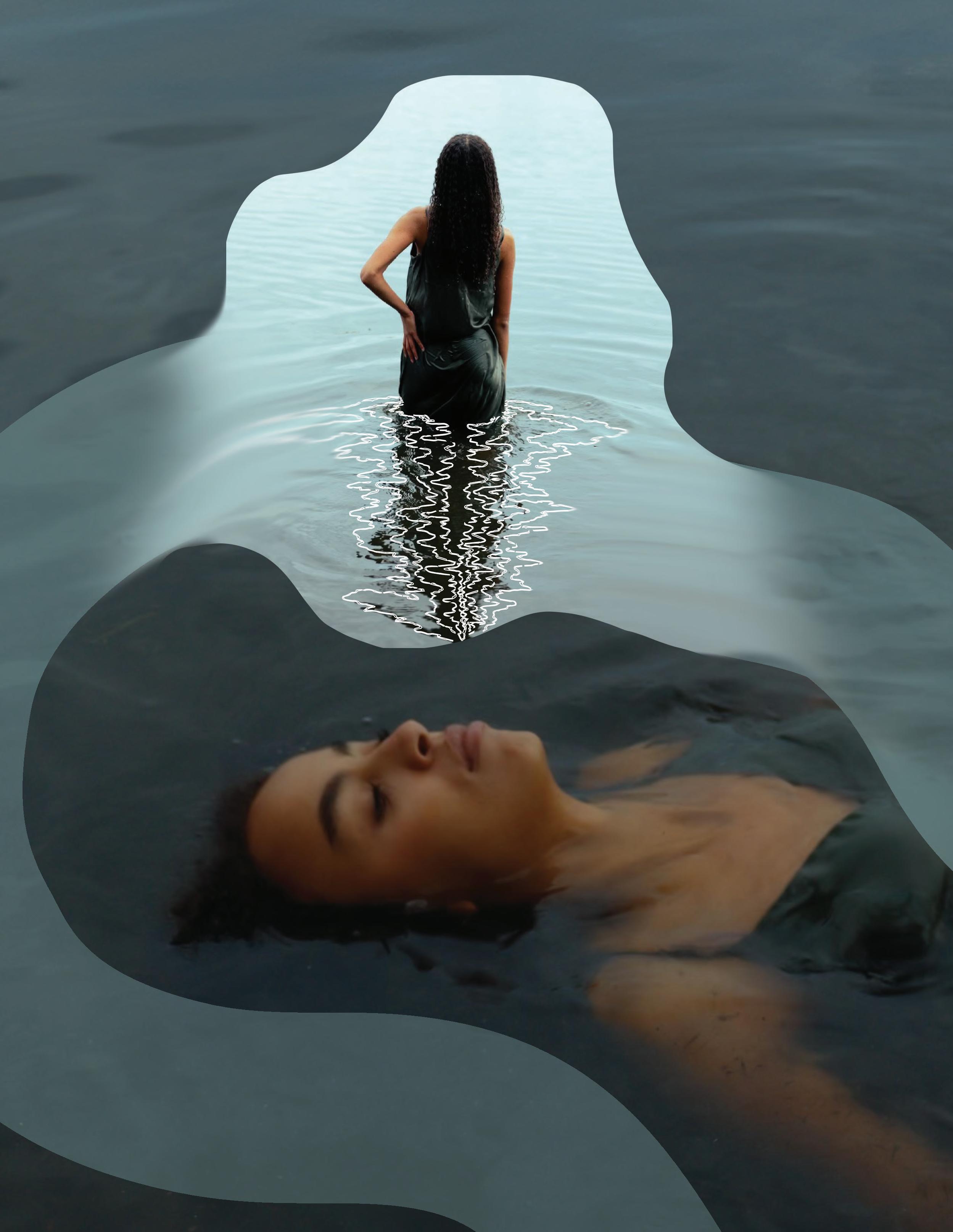
Poemby:MuizFroster

We hold mirrors in the palm
of our hands
Fingerstracingeverycrack,EveryImperfection
Obsessedwiththeendlessnessofself
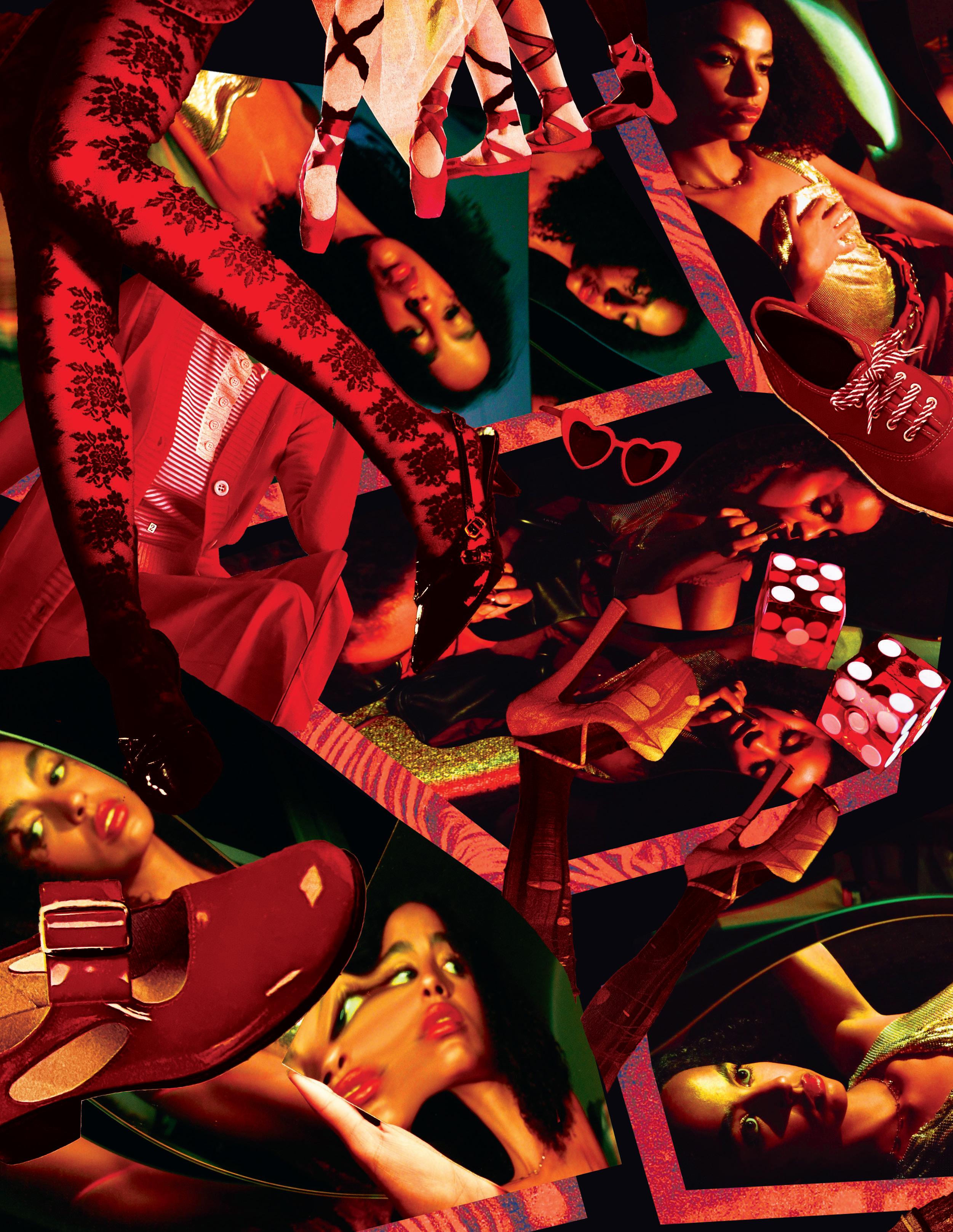
Infinite and loud
Infracturedglass,wemultiply
Whatoncewaswater, Soft,andforgiving
Isnowininfiniteframes
Jagged and cruel,
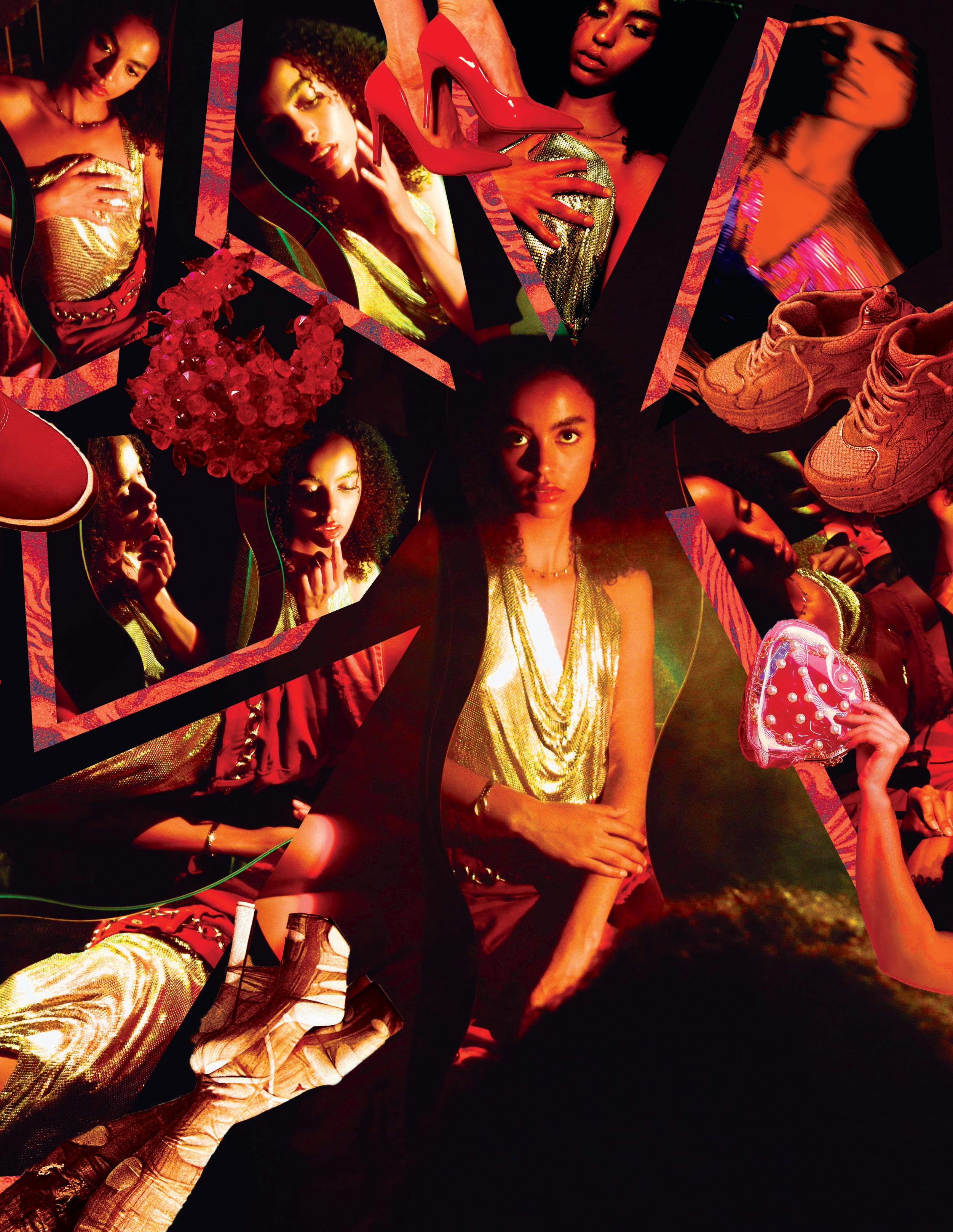
We pierce our skin on shards
Hoping to find more
But still finding less
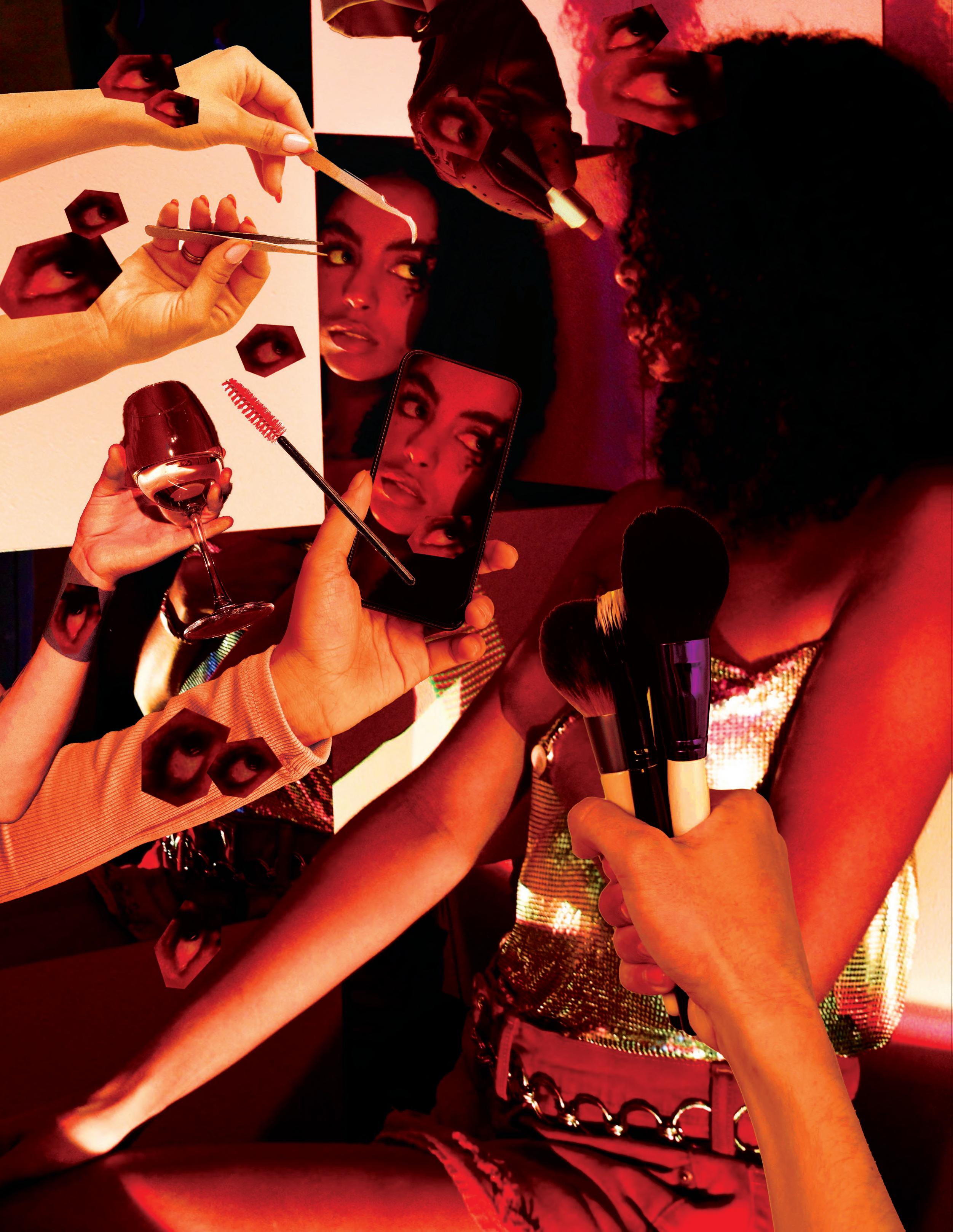
A thousand eyes, All yours Watching, judging
Is this what you wanted?
To see yourself a hundred times over
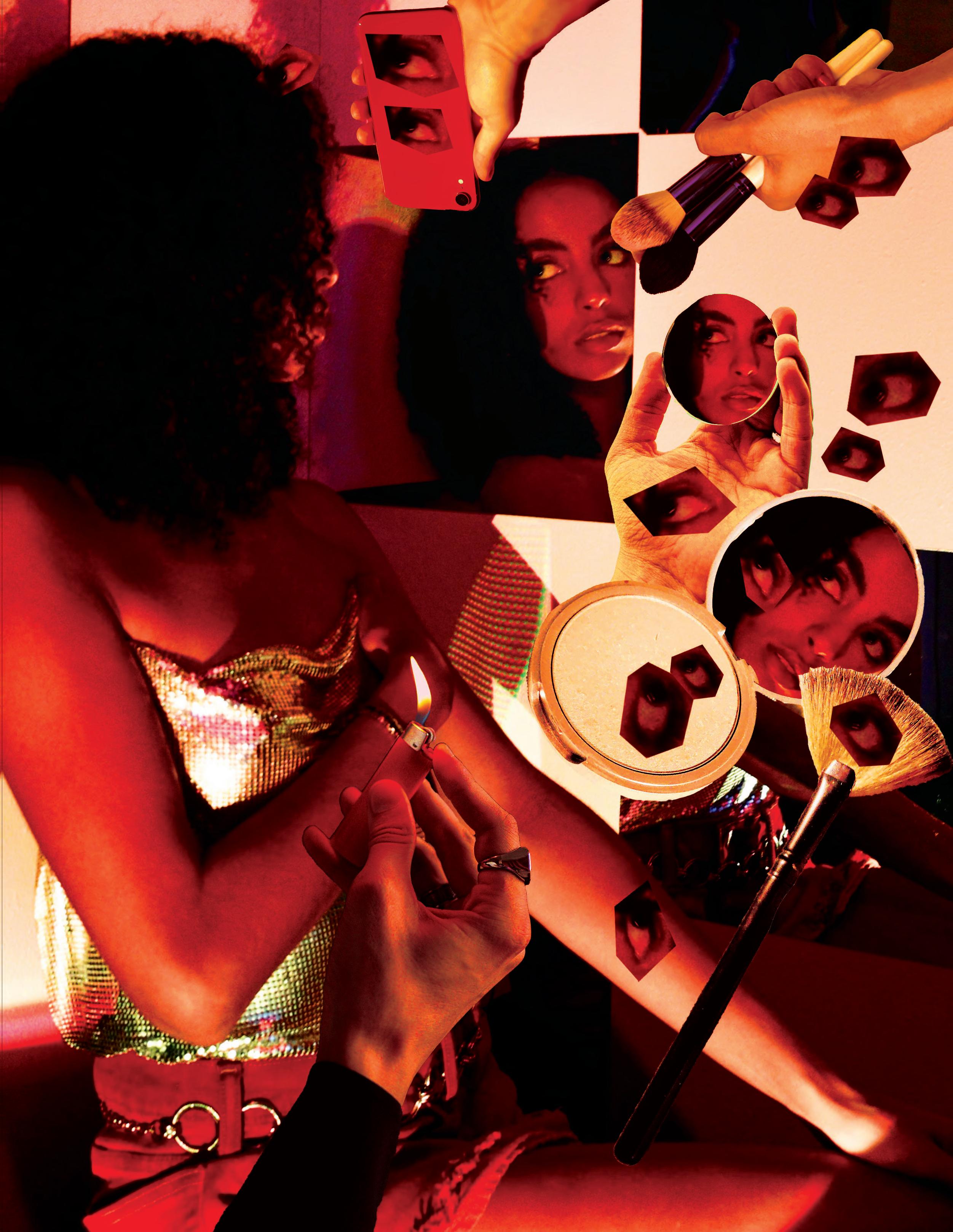
Every flaw magnified,
Every crack a symphony of scrutiny
You could walk away, but you don’t
Youwon’t Because the mirror does not let go And neither do you.
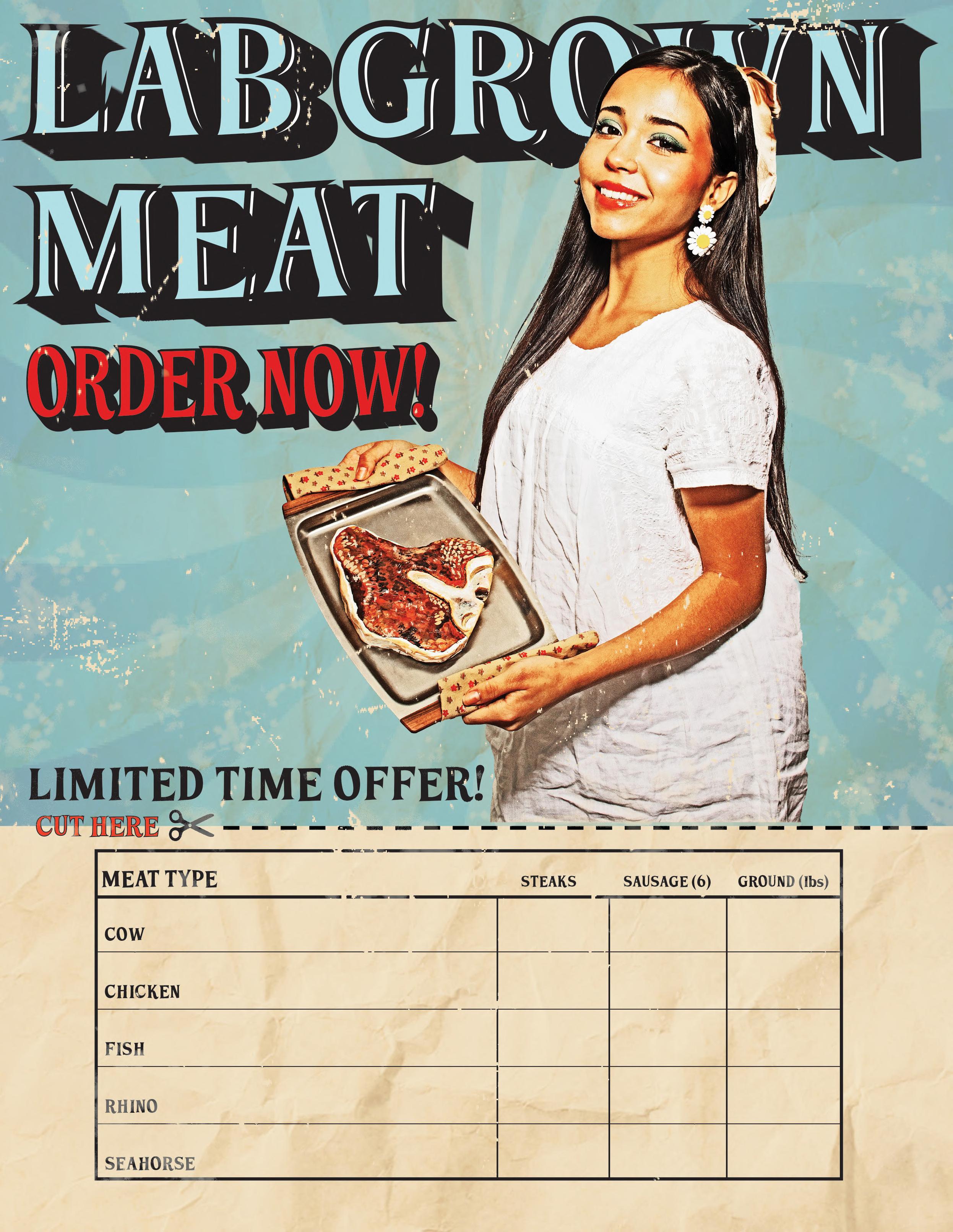

Imagine strolling down the gleaming aisles of your local supermarket, the familiar hum of fluorescent lights overhead. Your gaze scans over the usual; chicken breasts and pork chops. A new packaging catches your attention. Your eyes scan over the label boasting Seahorse Sausages. Your heart races and your eyes continue to wander down the shelf. Rhino Steaks-Ethically Sourced! No one else seems to bat an eye at this absurdity. To the average consumer, this is just another Tuesday in the meat aisle.
Welcome to the brave new world of lab-grown meat, where science fiction has stepped into your shopping cart.
First mentioned in a 1897 novel Auf Zwei Planeten, cultivated meat has been heralded as a step towards an advanced and pure future. Modern science can now bridge the gap between fantasy and reality and put cruelty free meat on the menu for the first time ever! The same delicious taste without any blood on your hands!
At a cellular level, cultivated meat is made from the same ingredients as the meat we consume today. A sample of living tissue is collected from a young animal, the cells are isolated, then placed in a reactor to multiply and form animal-derived meat without consciousness. This process creates genetically identical meat but bypasses the need for slaughter. There is nothing fake about this product!
With large technological changes and investments necessary to accommodate this new meat to the market, would it be worth the effort? Let’s dive right in.
The process requires living cells, and any cells could be swapped in to replace the stereotypical cow cells. This means that, theoretically, there could be a future where rhino steaks or seahorse sausages are sold en masse. The limitations are constantly being pushed further by 3D printing advancements, but being able to form the different fat layering and muscle tissues in mimicry of different animal cuts requires a little more work. Still, there is a real possibility that rare fantasy dishes could be enjoyed without wiping out
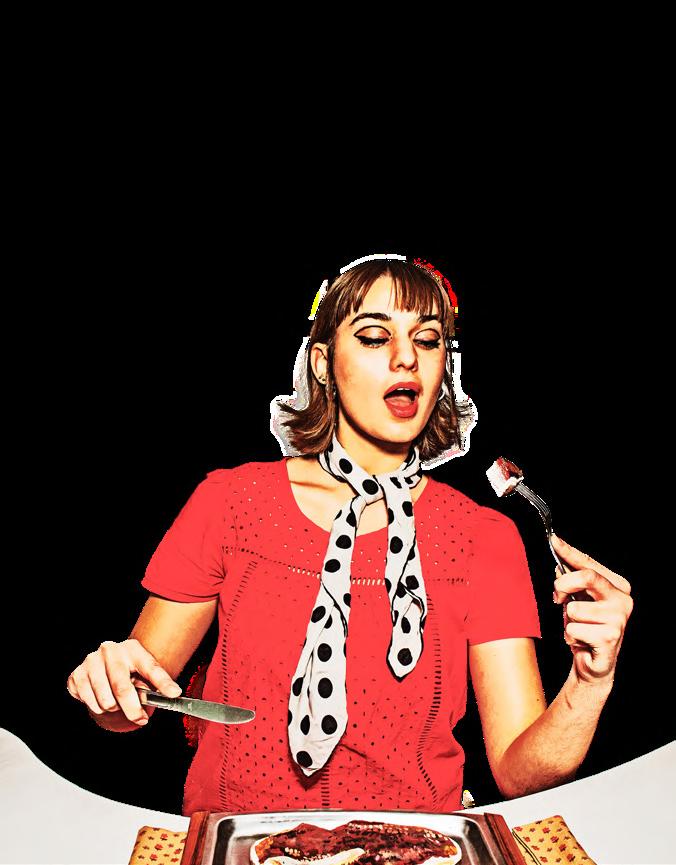
Animal behavior research has shown that animals are able to feel joy, pain, and fear. Knowing that, animal suffering can be prevented by the switch. This process addresses ethical concerns around factory farming cruelty, where animals are kept in cramped, inhumane conditions for the sake of profit. By taking a sample of cells and reproducing copies in mass, no animals are killed for the sake of feeding the world. This is a worthy endeavor not just because it’s better for animals, but because science supports it as a smarter choice for our health, the planet, and future food security.
Food safety and general health would benefit from this change. Traditional methods of slaughter face the risk of contamination with illnesscausing bacteria such as E.coli or Campylobacter. This bacteria is introduced to the meat through the puncture of internal organs. Because
lab grown meat does not produce digestive organs, the possibility of exposure is eliminated. Cultivated meat will also be free of growth hormones that livestock are given to increase growth factors. By negating these pitfalls, not only would our personal wellness be improved but the environment would benefit as well.
Greenhouse-gas emissions from traditional livestock accounts for 15% of global output. This number is created by cutting down vast amounts of wilderness to open up farmland suitable for cattle. The digestion process for these animals produces methane and the lack of trees to sequester the additional emissions compounds this issue. Labs could be built in environments that are not conducive to livestock, such as mountain ranges or in below freezing temperatures, leaving Mother Nature some breathing room. This will slow deforestation and can minimize transportation and gas consumption by being sourced closer to consumers.
The energy consumed by cattle from infancy to slaughter for the purpose of consumption is incredibly inefficient. The Good Food Institute has claimed cattle consumes roughly 25 calories of plant material for every calorie of edible protein they produce. Overconsumption of meat is linked to the over-consumption of grains, one of the primary drivers for deforestation and biodiversity loss worldwide. On the flip side of the coin, David Humbird from Open Philanthropy report states, theoretically, a mature cultured meat industry could achieve a ratio of three to four calories in for every calorie out. At nearly an 84% reduction of energy lost, this is a viable path to consider.
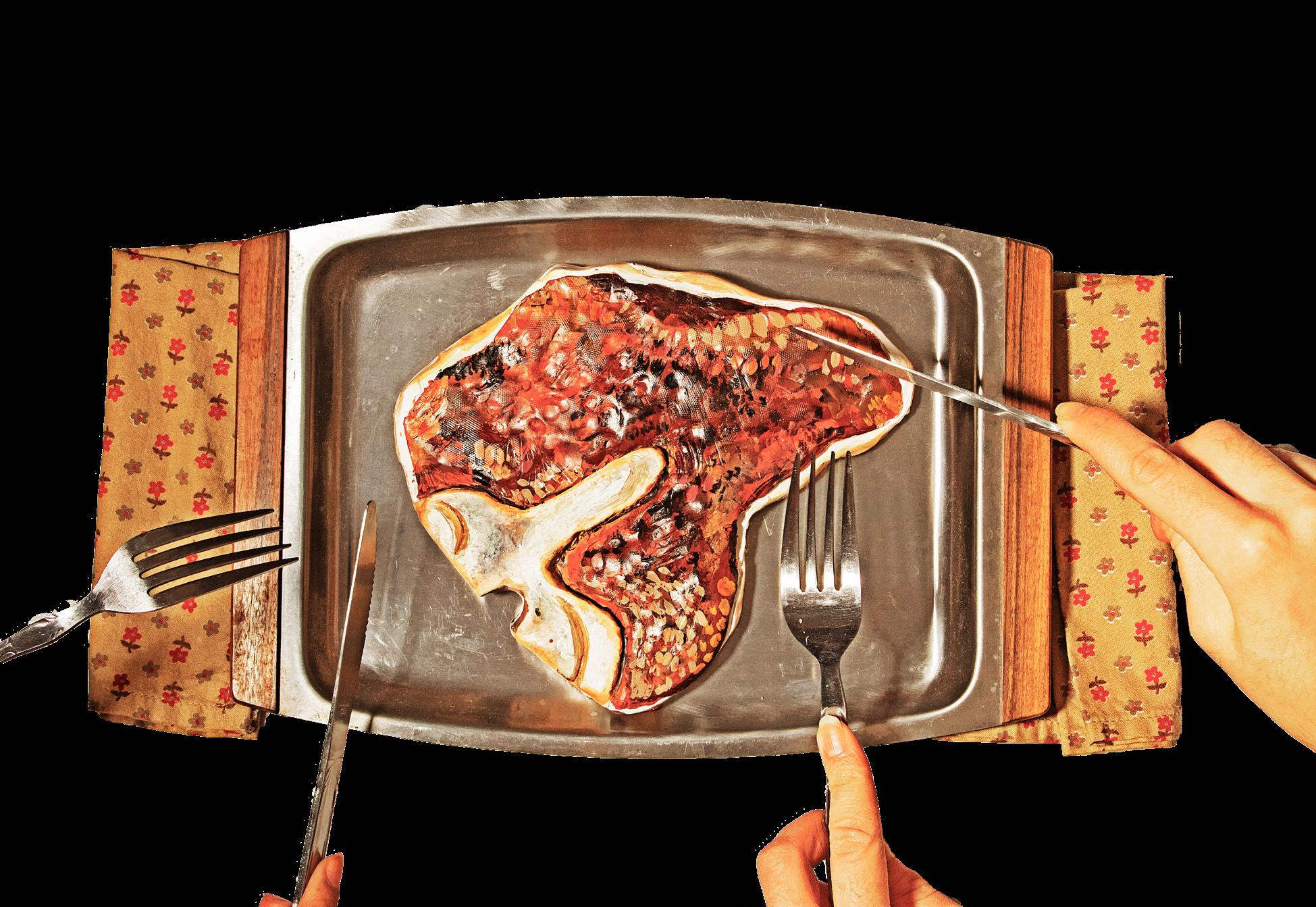
With such clear advantages, why is cultivated meat not found on grocery store shelves worldwide yet?
The Open Philanthropy reports predict a future that doesn’t look competitive with the modern day meat costs. Working with the assumption that the industry would produce the same amount of meat as the plant-based products sold now, a whopping 100 kilotons annually, facilities would still fall flat trying to create a cost-competitive product. Using large, 20,000 L reactors would result in a cost of about $17 per pound. Using smaller reactors could cost over $23 dollars per pound. This is a massive improvement from the previous $325,000 in 2013 when Mark Post created the very first lab grown burger, but it still puts it out of the price range of an average consumer’s interest.
While 100 kilotons of product would be a huge undertaking to bring to life, the fact is that it’s only about .0002, or one-fiftieth of one percent, of the 50,000 kilotons of meat produced in the U.S. each
year alone. The truth is that we currently consume an astronomical amount of meat, and that number is only expected to rise in future years. Statista Market Insight has presented the meat market as a $131.6 billion industry in 2024. This behemoth isn’t going to disappear overnight, but the scales can slowly tip in a new direction overtime.
What needs to be done to welcome cultivated meat to the stage? It might seem like there have been whispers about lab grown beef being right around the corner for years now. The science is there, but the prices are still too high to be competitive. Government funding currently subsidizes farming and traditional cattle raising. This backing could be switched or extended over to lab grown meat to help buffer the infrastructural and research costs. Voting for green candidates can help bring in a new mindset and break out of traditional slaughterhouse practices. We need governments to invest billions in research and commercialization to make this feasible.

Over a century ago, lab grown meat was just a thought in one far-seeing writer’s mind. As we stand on the cusp of this culinary revolution, it’s clear that science fiction is no longer just for novels and movies—it’s on our plates. This shift encompasses more than simply food production, it can change our relationship with ethics, nature, and consumption. One thing is certain: the next time you walk down the meat aisle, you might just see something that makes you pause—and perhaps even rethink what’s possible.


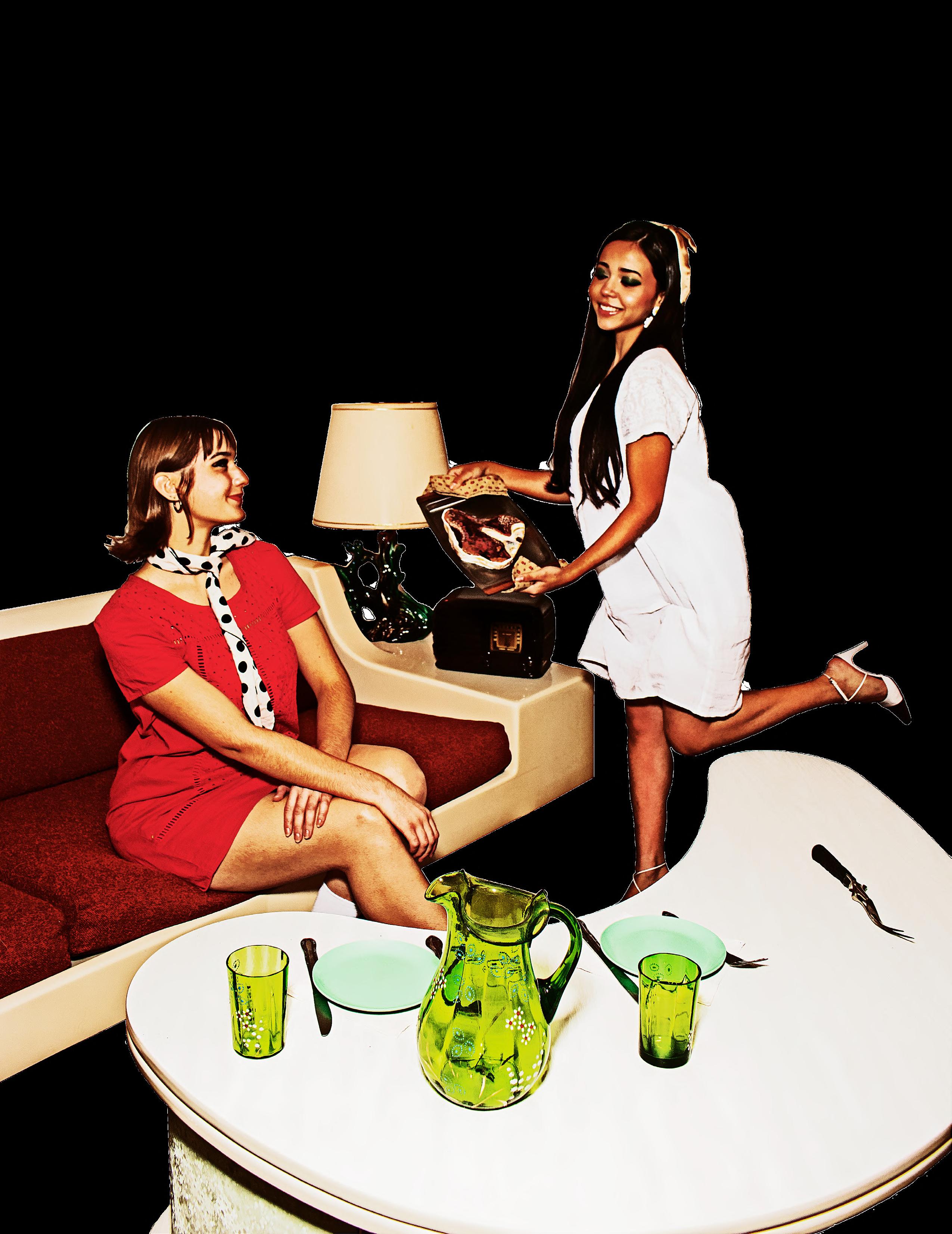
Credits: Rio Sokup, Oliver Braaten, Daniela Orozco, Daniela Senanayake, and Isidora Andric
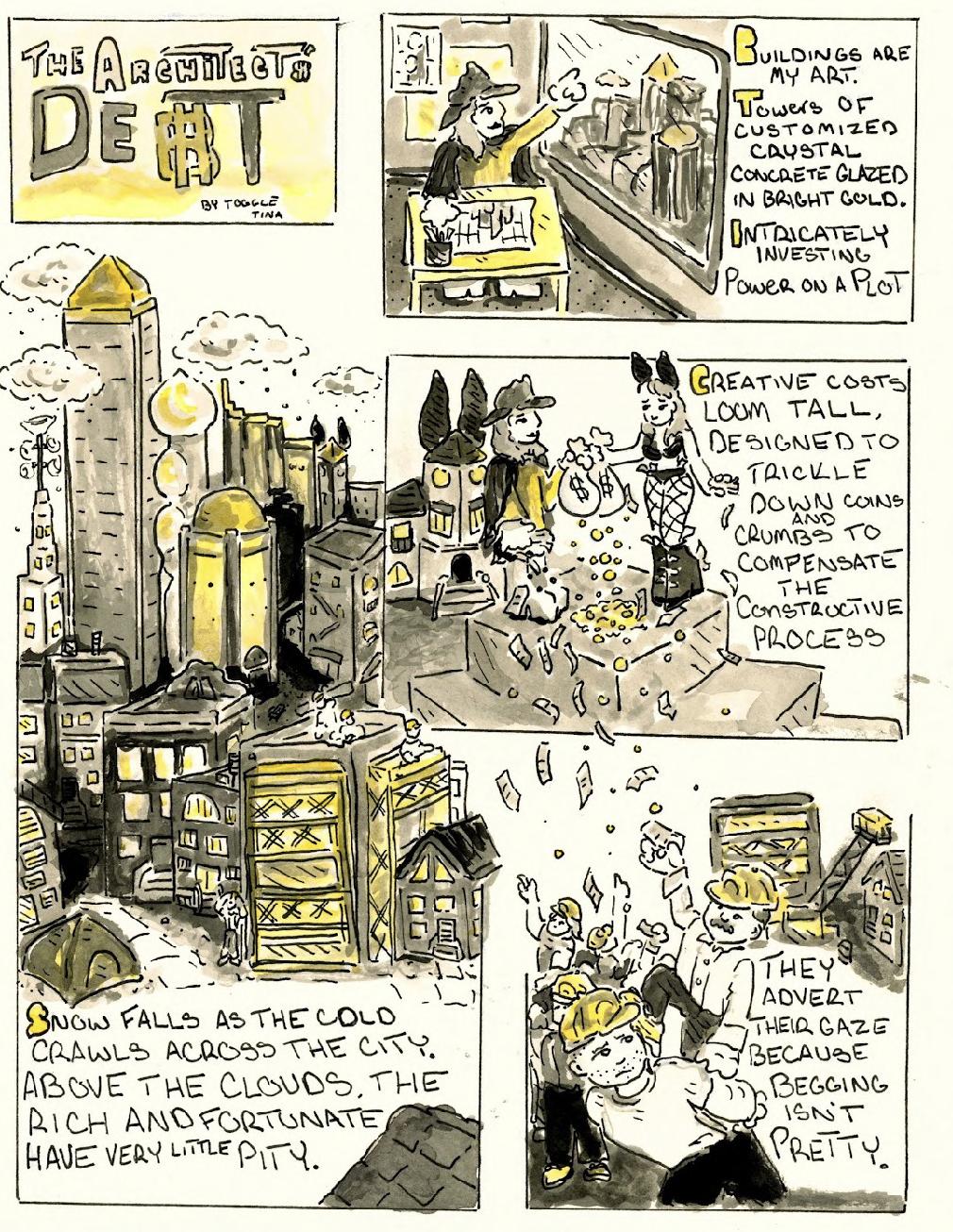
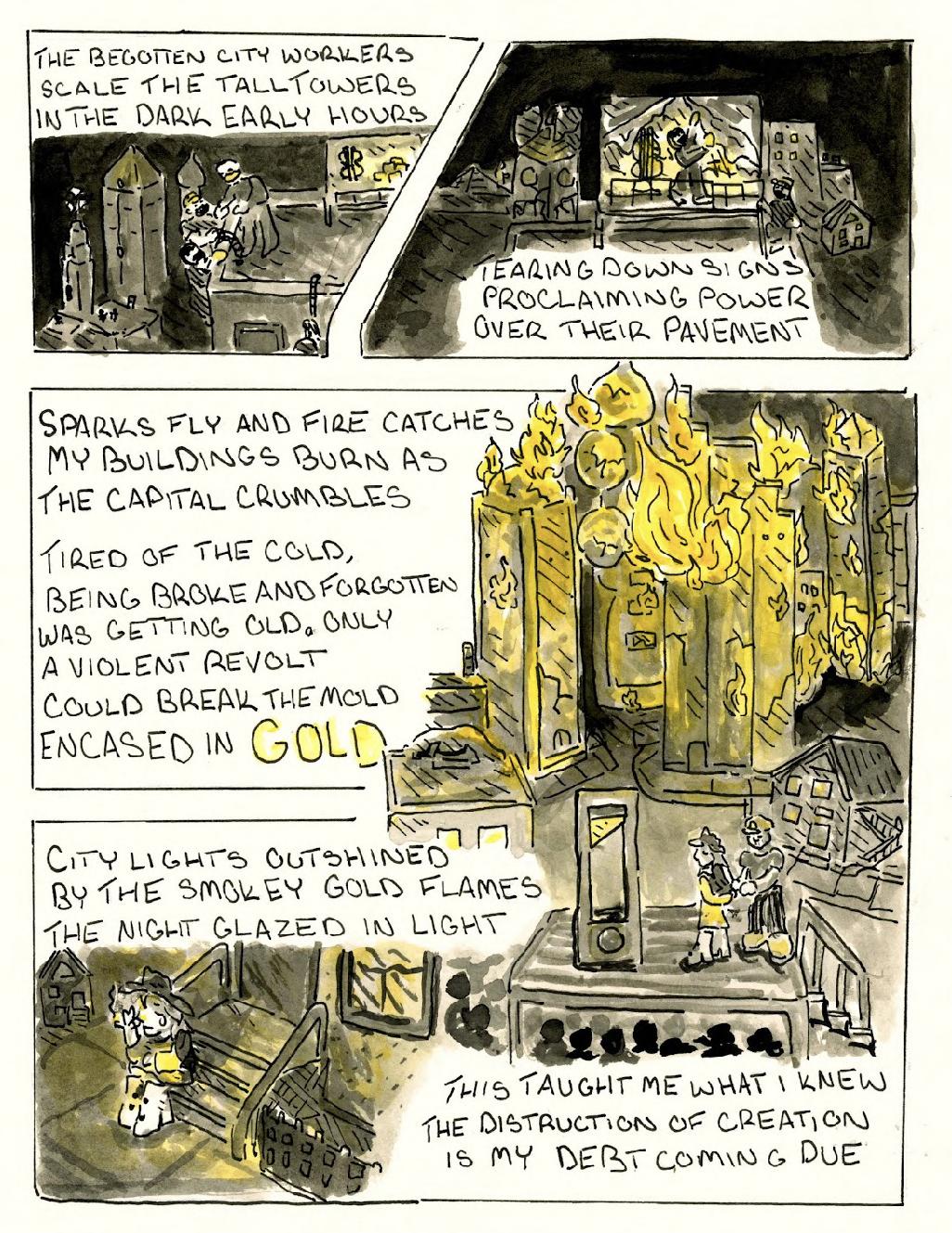
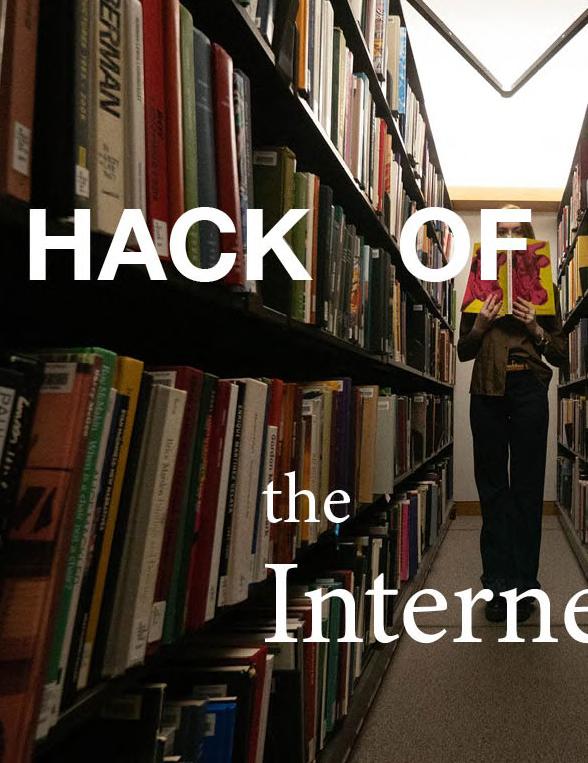
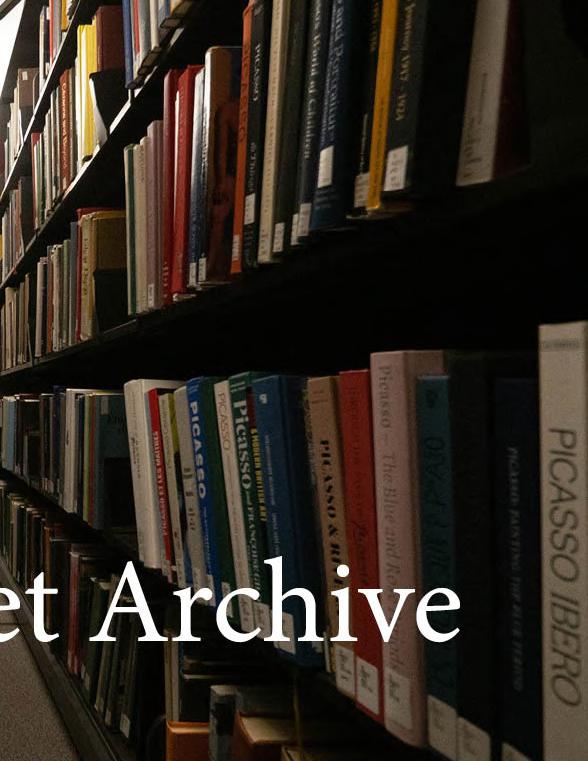
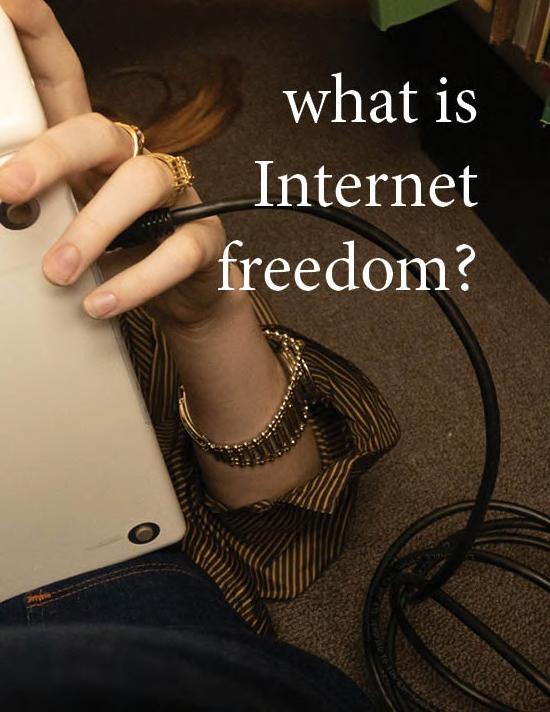


The internet is the largest collective source of information ever created. By recent estimates, it stores about 64 trillion gigabytes of data. For reference, the human brain can only store around 2.5 million gigabytes of information; around 0.00000391% of data on the internet. To sort through all of this information is difficult. There is no guarantee that search engines like Google return the links that are most relevant to your inquiry and ChatGPT may simply hallucinate and provide false information. Disinformation, misleading headlines, and straight-up lies threaten the internet’s ability to store reliable information. Sites like YouTube frequently delete uploaded content, and social media apps like X or Instagram are flooded with false and misleading posts.
There is, however, one place on the internet that strives to keep a vast wealth of information public and reliable. The Internet Archive is a sanctuary of information that houses millions of different forms of content.
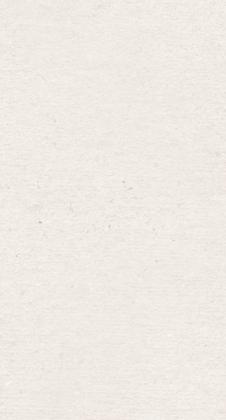
Anyone with a computer has access to over 43 million books and 13 million videos through the archive covering everything from feature length films from the 1930s to notable fashion runway shows from the ‘90s. There are few organizations that offer this much on the internet. And the best part: it is completely free to use. People are constantly adding media, as the archive expands in new directions of preservation.
Until recently, there was little restriction on what could be posted to the Archive. Many websites like YouTube follow strict copyright laws and take down videos frequently for violation of their terms of agreement surrounding usage of footage or music that they do not have the rights to use. These guidelines are followed in order to ensure any money made off a video goes to the music label and the artist. Archive. org has been much more lenient due to its position as a non-profit. This allows something such as the Nirvana live performance of “Negative Creep” to remain in the documentary 1991 The Year Punk Broke without it being removed.
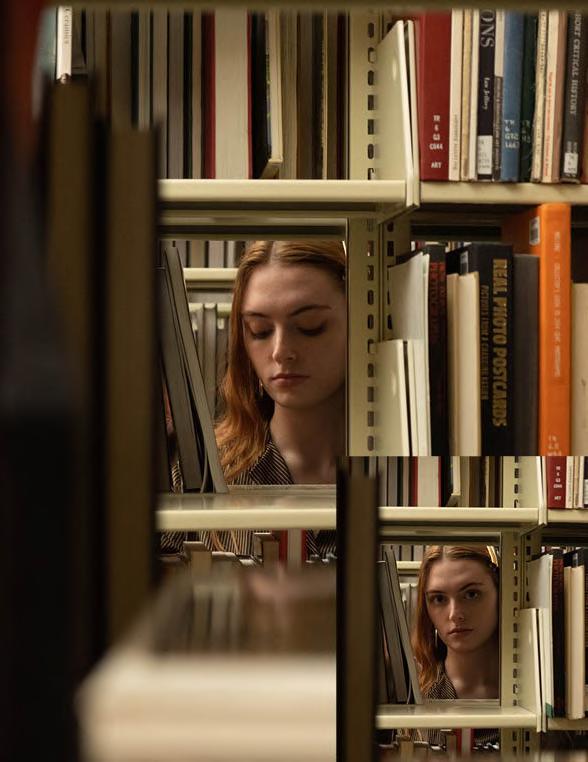
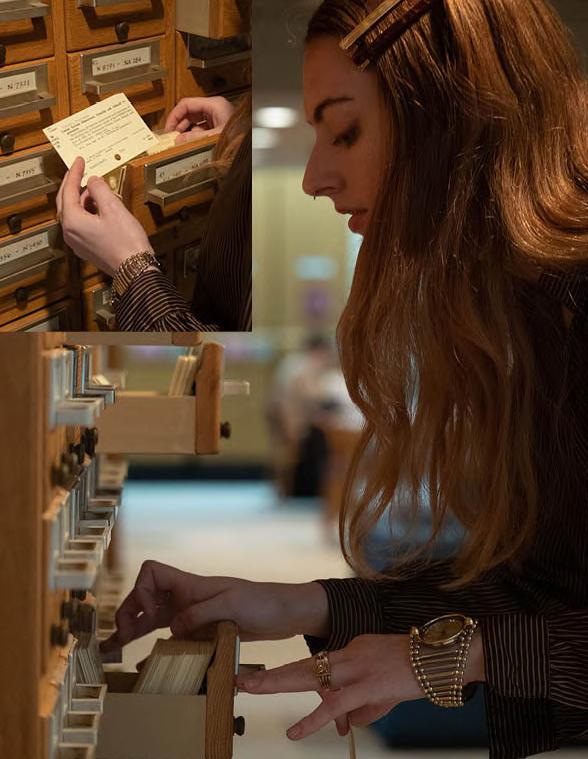


On Youtube, any form of the documentary still available to watch has removed the entire segment that includes the song, in order to comply with copyright laws. The ability to view a documentary that showcases a pivotal era in music culture is important for historians, but also anyone interested in the topic. Being able to view it in its full format is what sets archive.org apart from other preservation attempts on stricter websites.
Recently, DatPiff, a mixtape website that allowed artists to post their projects free of charge, decided to shut-down as it no longer had the traffic and popularity it once did. The likes of Lil Wayne and Frank Ocean posted their own mixtapes to the website as a means of gaining fans and spreading word about their music, all without the help of a major label. All of this musical history would have been deleted, but luckily, all data was given to archive. org, which posted it in a collection for preservation. It is the largest collection of rap mixtapes on the internet, with almost 400,000 entries. You can now enter an artist such as Frank Ocean and listen to the entire Nostalgia, Ultra project free of charge with great quality audio. There are many songs and projects that were only posted to online websites that have been deleted, meaning that the only available place to listen to them is through the Internet Archive. The beauty of the Internet Archive is not that it is

perfectly organized, but instead the fact that there are few restrictions that limit publication. There is almost too much information available, but this is not a bad thing. Picture the Archive as a messy library filled to the ceiling with towers of books. If you search long enough you will find what you are looking for. If someone cannot afford a textbook for a college class, there is a great chance that it is available on Archive.org free of cost. If we were to lose this vast source of knowledge and history, there would be no way to rebuild it. Online data tends to get lost as time carries on, and seemingly unimportant data can be written over to make space for new information.
The internet is a living and breathing history. History can be considered through many different forms, but many don’t realize that the internet is part of our history. The issue that occurs is if something were to happen to a post on X of extreme significance, or if the first announcement of the iPhone on Apple.com homepage no longer existed. This information only exists digitally, and it is not stored either, at least for public access. History is the most important thing to record, and we cannot stand to lose the thoughts, developments or opinions that were created online and live digitally.

You may not think it is important to preserve an iPhone advertisement from 20 years ago, but at some point in the future our descendants may look back and wonder why we did not seek to preserve the cultural and historic events that came about through the internet.
In recent months the Internet Archive has been hacked multiple times, leading to severe data leaks on users of the website. This has led to shutdowns that spanned multiple days in order to fix the issues, and concerns from users that the Archive is defenseless to further attacks. If a data breach occurred multiple times, how hard could it be to delete information from the website – things that may be impossible to replace?
One attacker that made the website unavailable to users for days on end claimed that it was shutting the Archive down for its affiliation with the U.S. government, which is totally untrue. The Archive is independent from the U.S. government, and it strongly advocates for freedom of information.
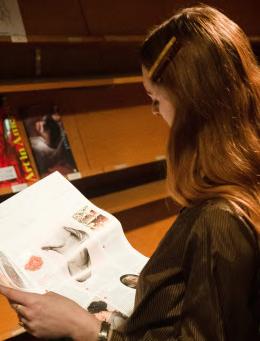
Freedom of information on the site has also been challenged recently, with the Hachette vs. Internet Archive court case deeming that the Archive’s practice of loaning digital books was copyright infringement, making countless titles unavailable. Innumerable students and researchers rely on the loaning system to get textbooks for classes and digitally access hardto-find documents.
Many have deemed that this lending system has almost no negative economic impact on publishing house’s profits: Lisa Bailey, Senior Counsel for the Internet Archive, noted during the lawsuit that “when we invited economists…to look at the sales and library lending data produced in this case, they came to a singular conclusion: The Internet Archive’s digital lending had no measurable effect on the market whatsoever.” This raises the question, of course, of how eliminating these books from free digital circulation was a pressing issue.

Nevertheless, the publishing houses won the lawsuit, rendering many books unavailable.
Threats to information do not stop there however. The past few years, the Archive has been working towards the preservation of music. 78 rpm records have been out of production for nearly 80 years, and their fragility has concerned many who hope to preserve the music held on them. Through the transfer of songs from 78 rpm to high quality digital files, historians hope to preserve music history that may be lost otherwise.
There is currently a lawsuit from major music labels including Universal Music Group and Sony Music Entertainment for copyright infringement that follows a similar pattern: the labels want to remove music that poses no profit risk to their companies. Most of the music is almost 100 years old, and the only value is historical. This lawsuit only serves to halt the preservation projects
Now, what does this all mean? The Internet Archive seeks to be a repository for everything that can be saved off the internet, as well as anything that can be digitized and preserved online. The fact that its existence is being threatened by hackers and lawsuits that are slowly dwindling the digital collection is nothing to be taken lightly. In our digital era, a place like archive.org needs to be saved, because it is the only place on the internet that wants everything to be available to everyone, free of cost.

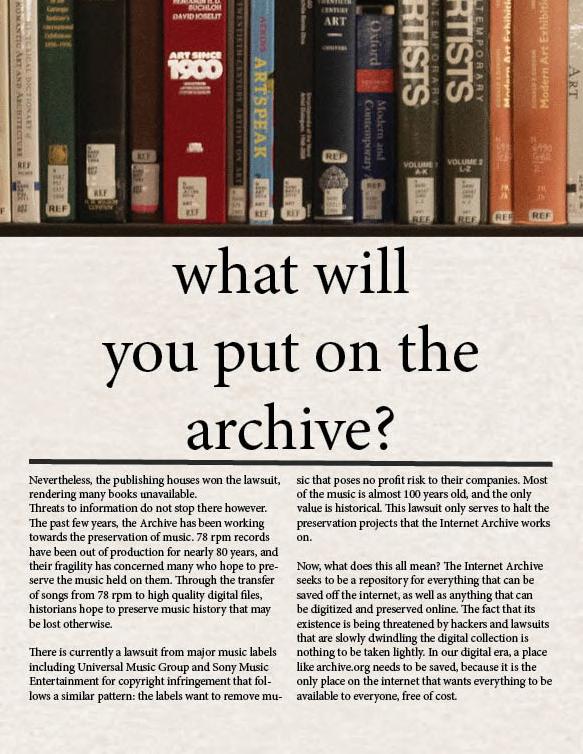
that the Internet Archive works on.
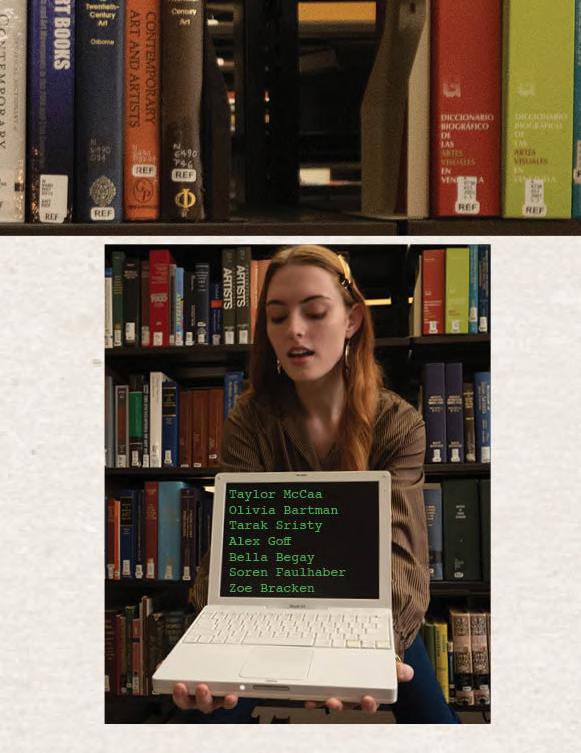
UNSEEN AND UNBOWED

A History of Protest Fashion as Means of Combatting Surveillence
Creative Directors: Lydia Boyce, Leah Rodriguez
Writers: Lydia Boyce, Leah Rodriguez, Katie Chestovich
Models: Hailey Yang, Dave Siméon, Palestinian Supporters Photographers: Emma Schieffer, Leah Rodriguez
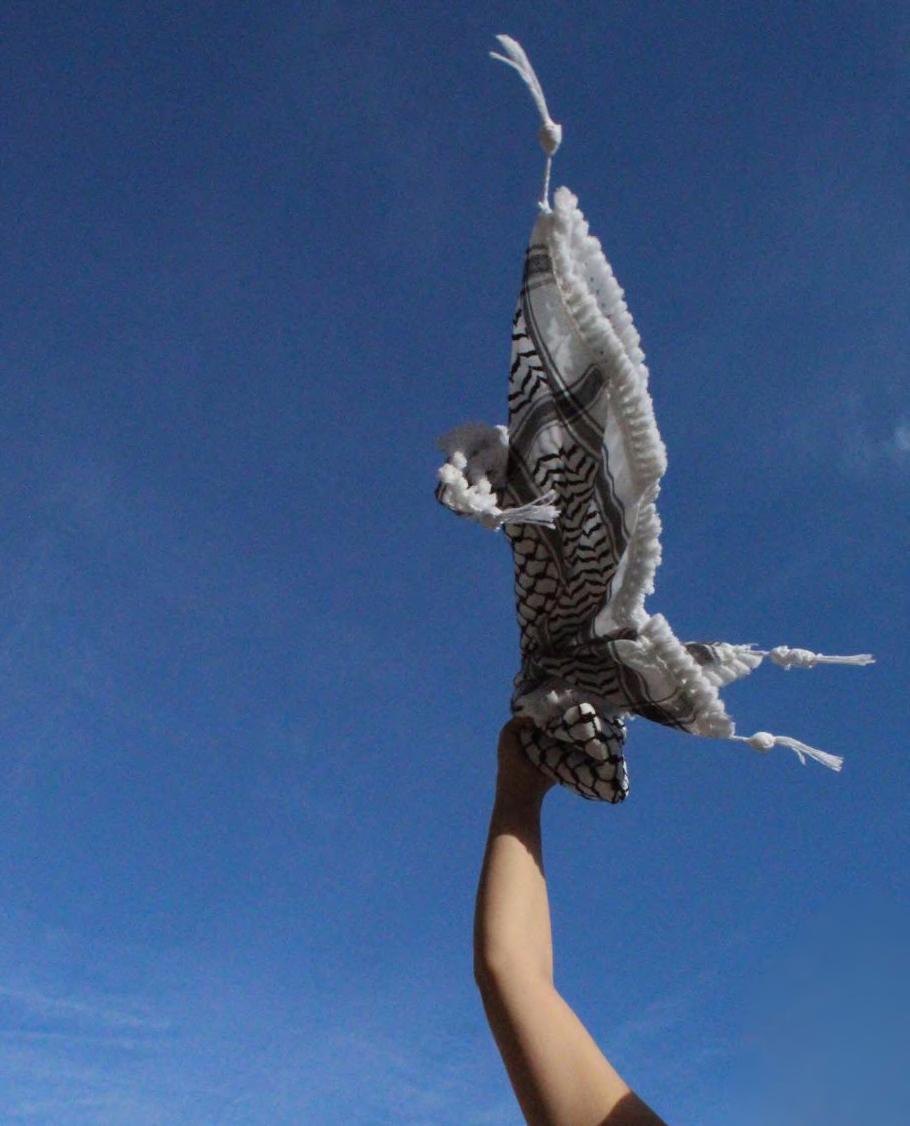
STUDENTS FOR JUSTICE IN PALESTINE

The University of Wisconsin-Madison campus became a crucible of political expression in the spring of 2024, as students established a Palestinian Liberation Encampment that would draw national attention and spark intense dialogue about solidarity, protest, and academic freedom. Inspired by the work of students at Columbia University in New York City, the Madison chapter of the student organization Students for Justice in Palestine (SJP) and other young revolutionaries pitched tents on the lawn of Library Mall—an area of high foot traffic for students and community members— to demand university divestment from pro-Israel companies and causes.
For this article, we interviewed two campus organizers to understand the work being done in Madison toward Palestinian liberation and the role of protest fashion in an era of heightened surveillance. To protect their privacy, their names have been changed to Joe and Jane.
During our interview, we talked a bit about the cultural significance of the keffiyeh, a traditional Arab headdress worn by nomadic communities – or Bedouins - in historic Palestine. While there are many variations available the Keffyeh. adopted by the
Palestinian Liberation Movement is the black and white fabric with three identifiable, culturally significant patterns: a fishnet pattern symbolizing the Palestinian ties to the Mediterranean Sea; bold lines to represent the historic trade routes that intersected in Palestine; and a curvy pattern to symbolize the olive trees that grow across the land. Joe explained how the keffiyeh first became a symbol of Palestinian nationalism during the Arab Revolt of the 1930s and has remained a large icon of Palestinian culture through the last century.
The Palestinian Liberation Movement emerged in the mid-20th century in response to the mass displacement of Palestinians following the creation of Israel in 1948, known as the Nakba (meaning catastrophe in Arabic). The loss of homes and land, further exacerbated by Israel’s occupation of Palestinian territories after the 1967 SixDay War, fueled efforts to organize politically and militarily for self-determination. Over time, groups like Yasser Arafat’s Fatah gained prominence within the Palestine Liberation Organization, advocating for statehood through a mix of armed resistance, diplomacy, and grassroots activism to address refugee rights and end the occupation. time, groups like Yasser Arafat’s Fatah gained prominence within the Palestine Liberation Organization, advocating for statehood through a mix of armed resistance, diplomacy, and grassroots activism to address refugee rights and end the occupation.
At the encampment, protesters deployed a nuanced form of resistance that extended beyond verbal and written statements— their clothing became a deliberate tactical response to heavy surveillance imposed on them by the university. While some protestors came between classes wearing their usual day-today outfits, many protestors who lanned on staying long
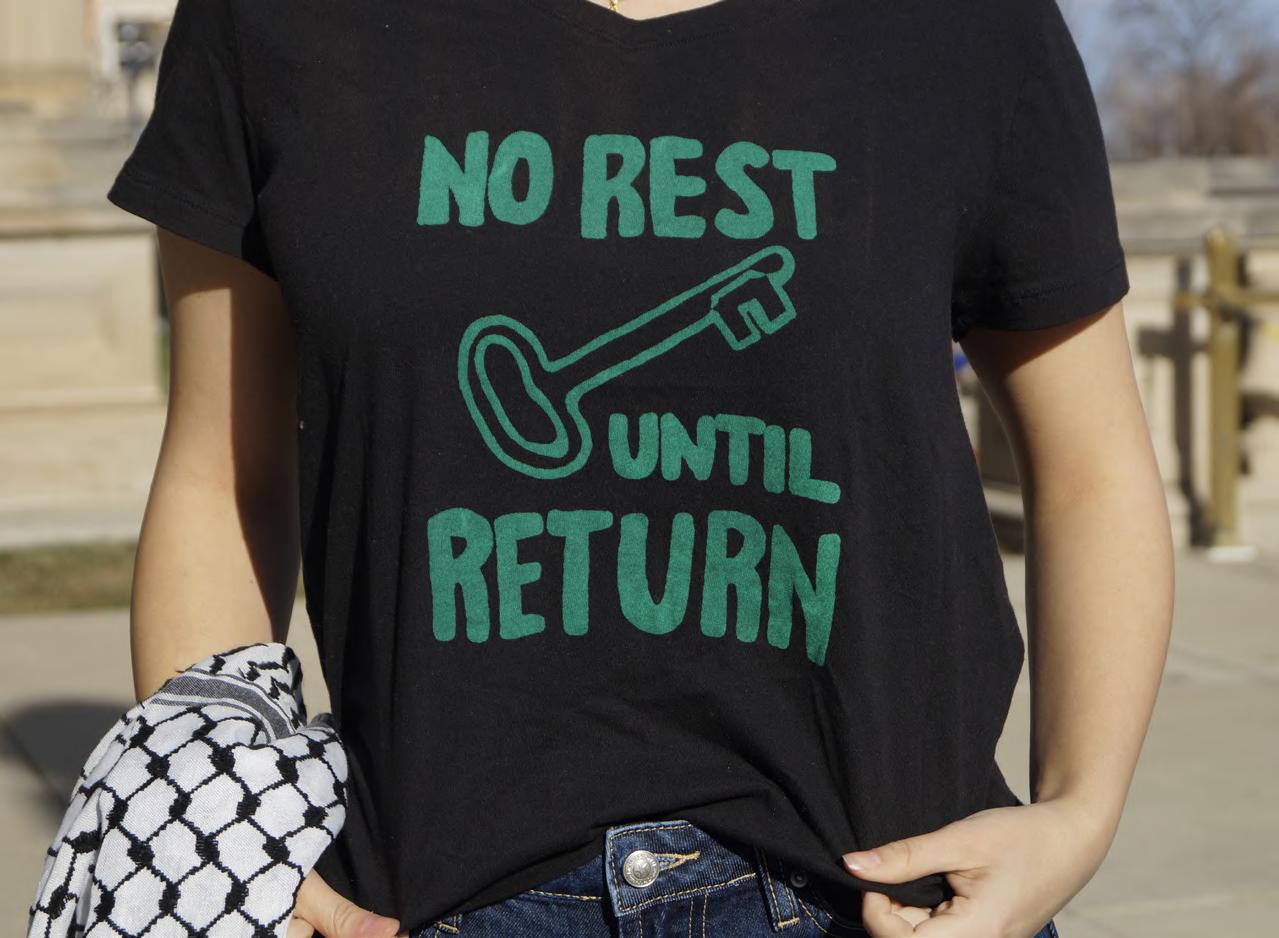
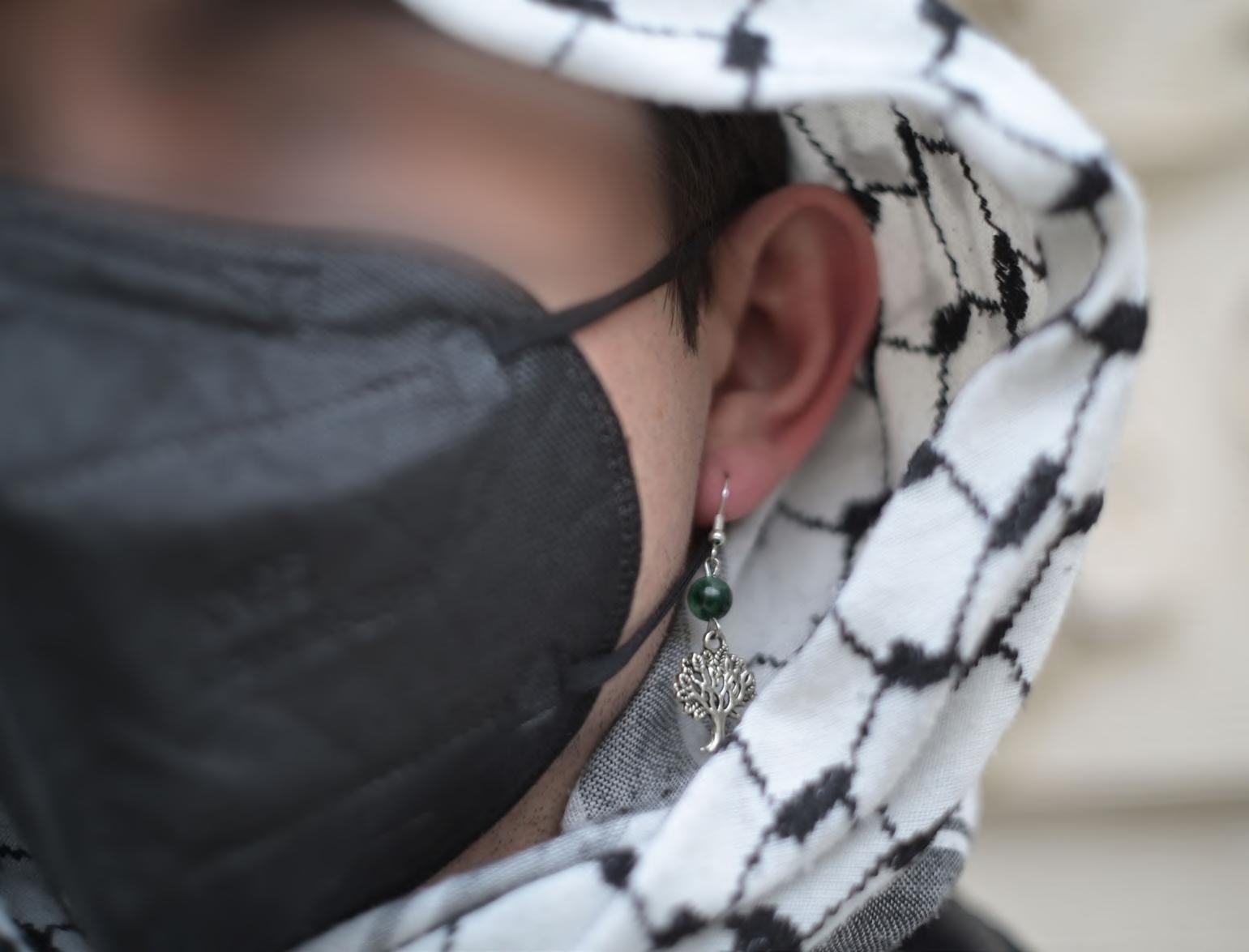
planned on staying long enough to encounter a police raid opted for more neutral looks of blues and blacks. Participants carefully curated their protest attire to maximize utility and minimize identification. Keffiyehs and medical masks were quickly transformed into face coverings to maintain protestors’ anonymity amongst the heavy media coverage, counter-protest filming, and police body cams. Joe described how drones would fly over the encampment, unsure if they belonged to law enforcement or zionists.
In the aftermath of the encampment,
“[The encampment] created a space that was sorely lacking and desperately needed”
- Joe
campment, surveillance from the university has reached an all-time high. The SJP Instagram account, their main source of communicatory outreach, is regularly monitored for any potential violations of the university’s expressive activity guidelines which do not allow for camping on school grounds or expressive activity within 25 feet of university-owned buildings. Hearing committees have asked about who runs the account and SJP as a whole, Joe claims. After the police raid on May 1, 2024, members of SJP were contacted by the school regarding involvement. Their names were listed on the Wisconsin Involvement Network (WIN), a website that helps connect students with campus organizations and events. SJP contact were used with the purpose of aiding law enforcement to track individuals’ involvement as members, including alumni who were no longer involved on campus.
In response, the university’s Office of Student Conduct and Community Standards (OSCCS) completed 30-40 disciplinary investigations against students for alleged non-academic misconduct. The university charged protestors with citations, as well as some felonies which were dropped to misdemeanors. One
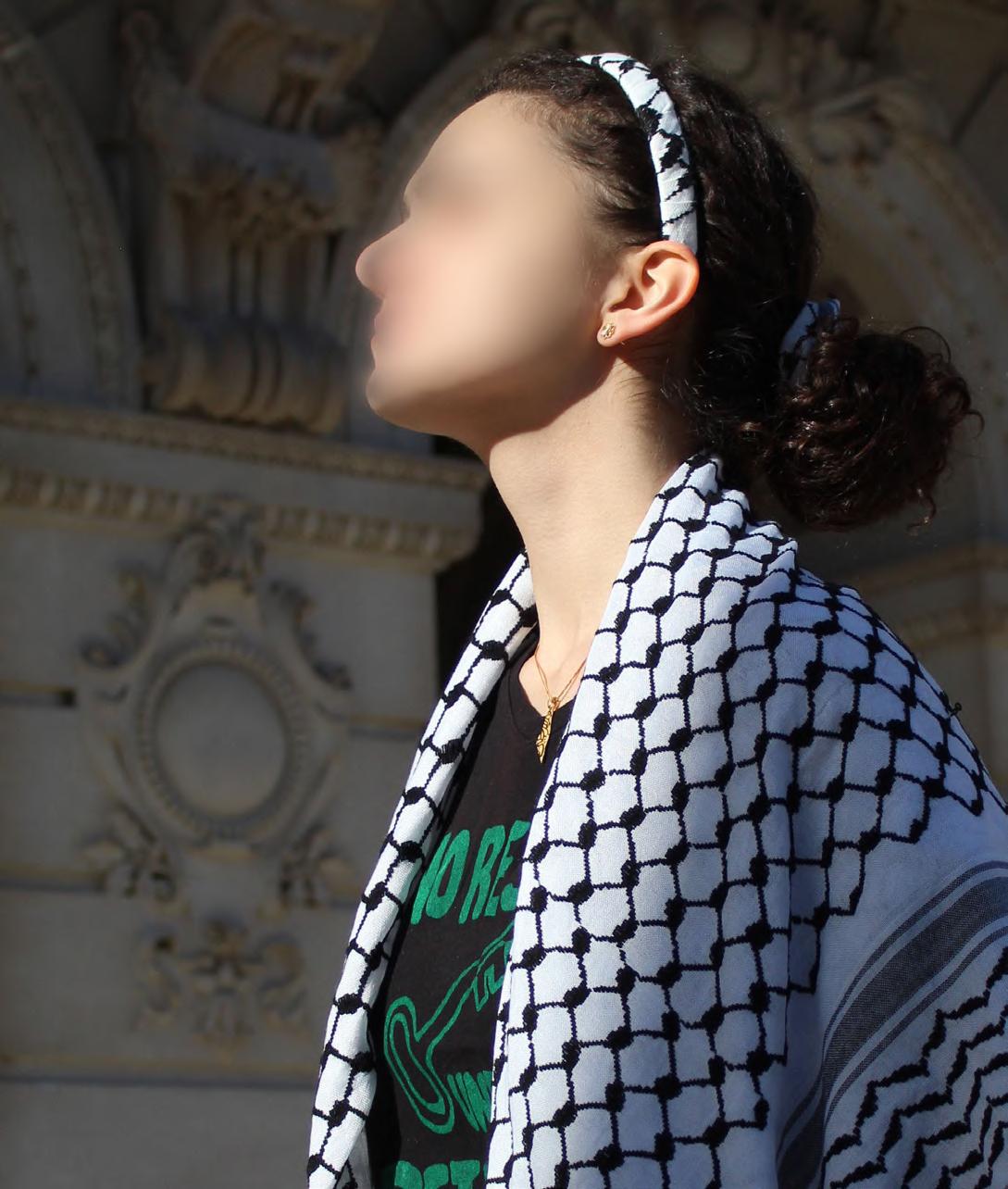
member of SJP who had their contact listed on WIN, Joe relays, received notice of probation for violation of school policy, despite being out of state for the entirety of the encampment. Despite the omnipresence of police bodycams and security cameras around the encampment, members of SJP recall a startling lack of footage used as evidence in the court cases of those being tried from the raids. Instead, the evidence chosen to be listed were police reports of footage, as opposed to the footage itself. Beyond the immediate political statements, the encampment represented a profound moment of student organization. Participants described a sense of community that transcended traditional campus divisions, bringing together students from diverse backgrounds. Organizers faciliated free pro-Palestine screen printing with a zero-waste, bringyour-own printing item policy. Jewelry, pins, and other merchandise were sold to raise funds for families in Palestine, many of whom were families of UWMadison students.
Jane, the daughter of two Palestinian immigrants, shared that her extended family currently lives in the West Bank. During our interview, she wore a shirt with a key printed on it, a symbol used to call back to the family homes stripped away after the Nakba. Joe wore earrings with olive trees.
As Joe reflected, “[the encampment] created a space that was sorely lacking and desperately needed.” As SJP’s fight for UW-Madison’s divestment continues, Palestinian iconography continues to be visible on campus—pins adorning backpacks and keffiyehs draped over shoulders in lecture halls. The keffiyeh and other symbols of Palestinian protest fashion have spread across campus like wildfire, serving as a testament to the movement’s ongoing strength.
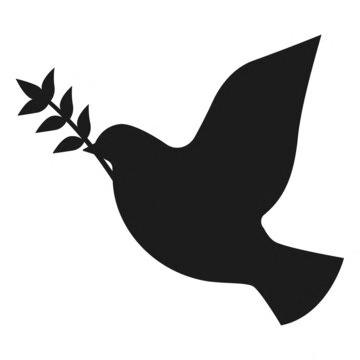
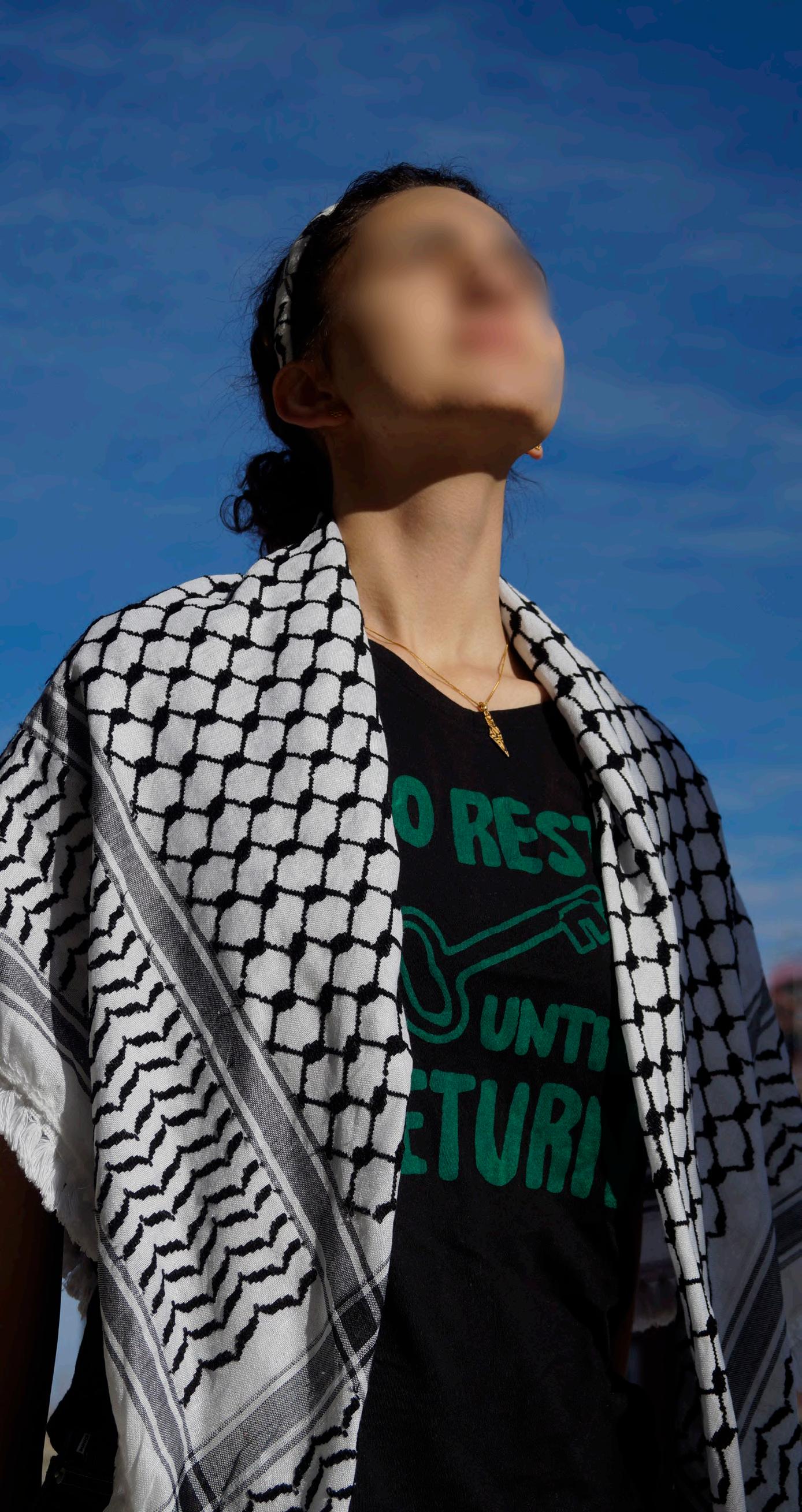
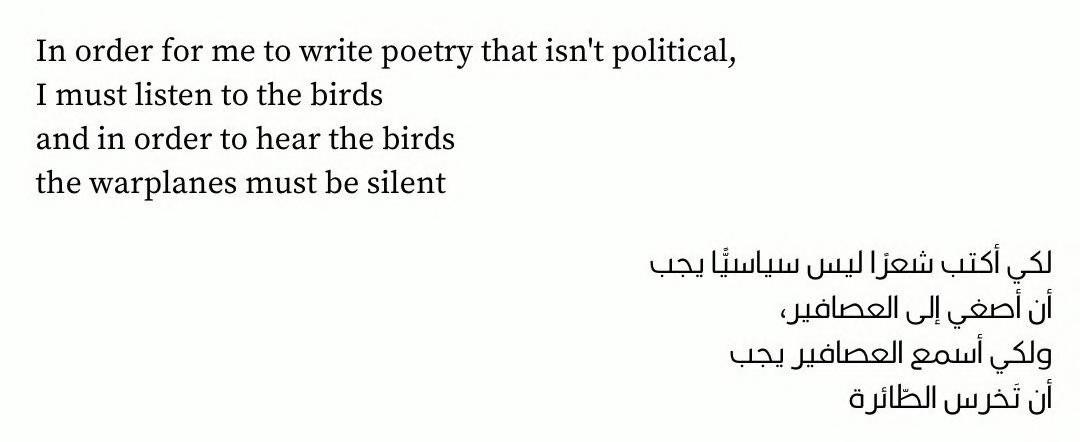
The Bicycle
The invention of the bicycle was revolutionary for all people, especially women because their focus in society was to stay home. The bike elicited much more mobility for them and facilitated discussions about equal rights. Elizabeth Cady Stanton and Susan B Anthony are quoted saying “Women is riding to suffrage on the bicycle” (Peterson).
Kat Jungnickel says in “Bikes and Bloomers: Victorian Women Inventors and their Extraordinary Cycle Wear,” that a woman’s dress reinforces her place in society. Women carry seven pounds of petticoats and are restricted by corsets. This dress is clearly geared towards staying in the house. Women needed to be seen as dignified, graceful, and modest while cycling, so they would try to conform to traditional norms while still participating in the movement by cycling. At first, they rode bicycles with their traditional big, long skirts. Some women even died while riding
First, the big, long skirt is made to be tied down when riding to mitigate excess fabric flying in the wind. Another solution was to tailor the skirt to fit the bike so there was a gap in the skirt where the seat would go. The issue with this remedy is that when the cyclist stands, you know she’s wearing cycle wear because it is so obvious based on the skirt.
The obsession men and women alike had with bikes issued a rational dress movement where women started to wear more
as opposed to a petticoat for comfort and modesty, however, the overskirt still flapped about. Some bloomers were so voluminous women wore them because they looked like skirts so their mobility was concealed when walking about because it looked like they were wearing a skirt. Also, the corset in women’s dress loosened or came off
“The Bygrave convertible skirt,” at first, it looks like a basic A-line skirt, but cords were built into the seams so when you pull on them, the skirt rides up so its not in the way of the bike. Bloomers would be worn under this garment as well (Jungnickel). Overall, women came up with creative ways to conceal their newfound mobility due to the bicycle in the late 1800s. This led to discussions about equal rights and the passing of the 19th amendment in 1920.
bicycles because of excess fabric getting caught in the chain or obstructing their view as the wind blows it every which way. To prevent injuries from riding bikes, there were mechanisms invented to allow for easier riding.
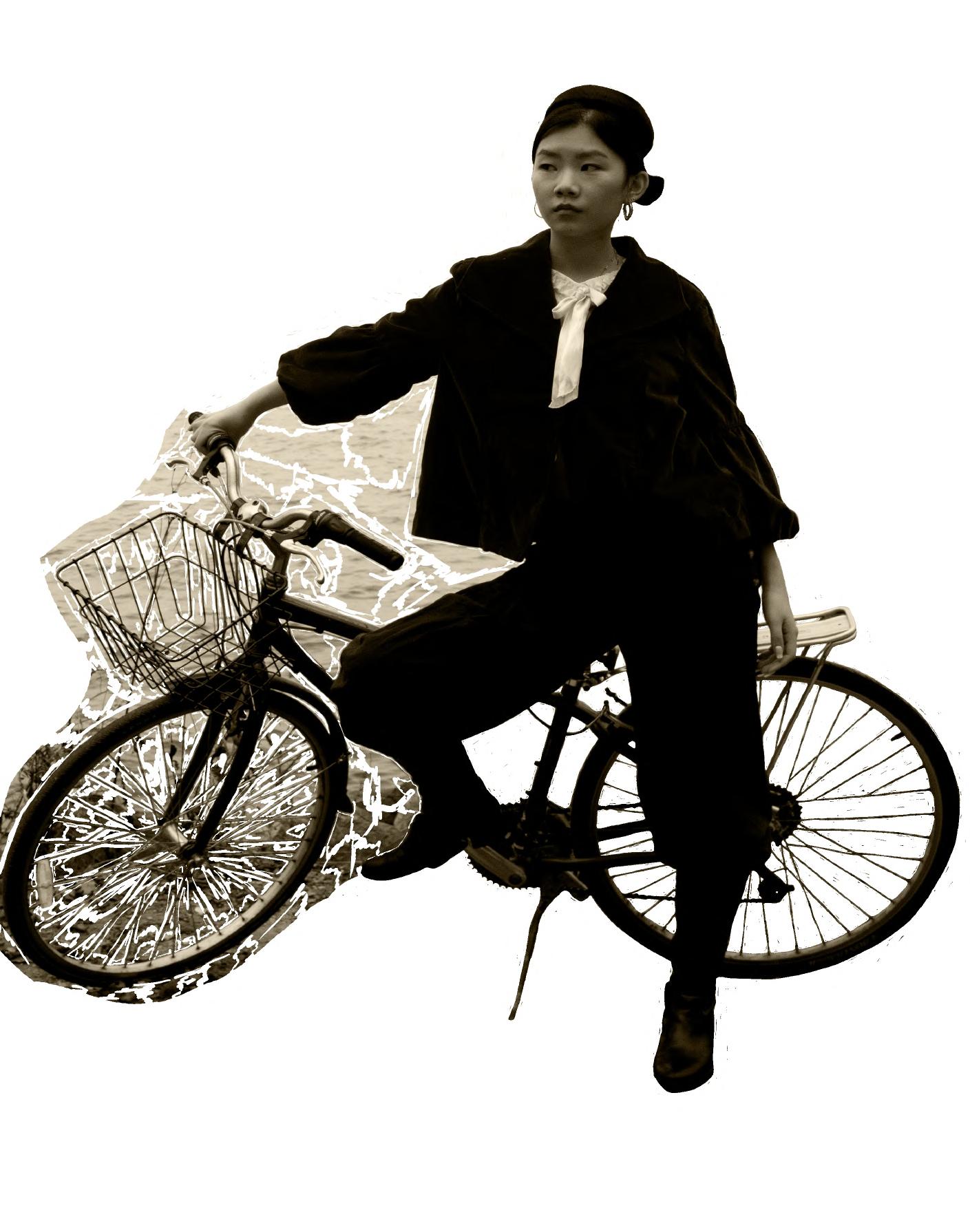
comfortable clothing so they could ride more easily. A number of women who responded to this revolution wanted their clothing to reflect that. They wore more non-traditional articles of clothing. Bloomers, a baggy undergarments that replaced the impractical hoop skirt, became popular. Women would also wear bloomers under the skirt
entirely (Peterson).
Finally,
Alice Bygrave, a dressmaker, patented a convertible street wear skirt to cyclewear. Jaeger, a British fashion house picked up the design and named it
Men were threatened by these changes because they challenge the gendered structure of society: women stay put and raise the children while men have the power to go after different opportunities (Jungnickel). Even doctors discouraged women from cycling, claiming they would struggle with heart palpitations, depression, and “bike face” meaning pale skin and dark circles around the eyes (Peterson). Women got harassed on the street and denied entry to establishments for riding bicycles and wearing non traditional clothing, like bloomers. People also saw women behaving this way as encroaching on men’s lives because they now have the power to go wherever they want and they can take up space on the street that should be devoted to men (Jungnickel).
Revolution
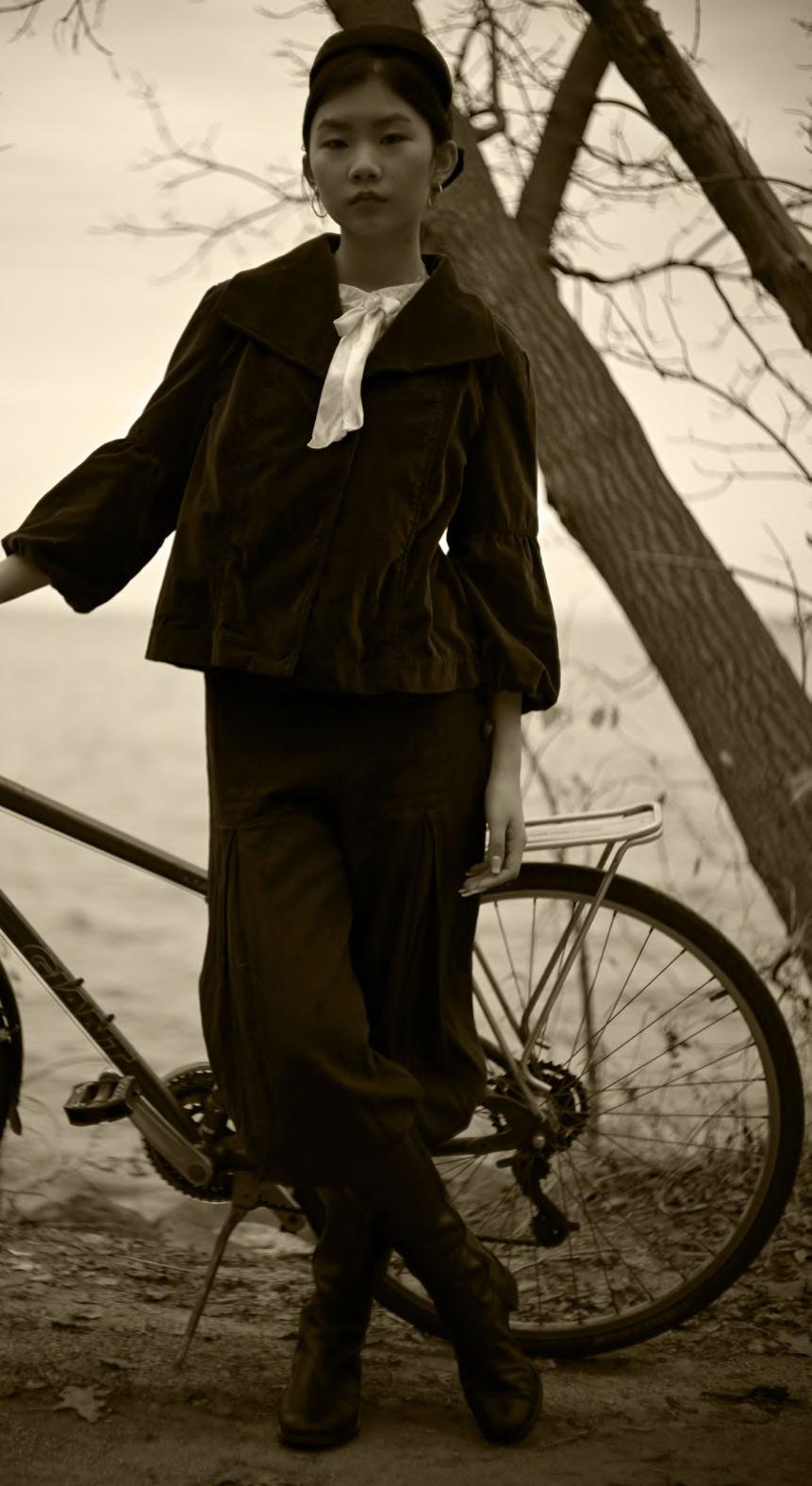
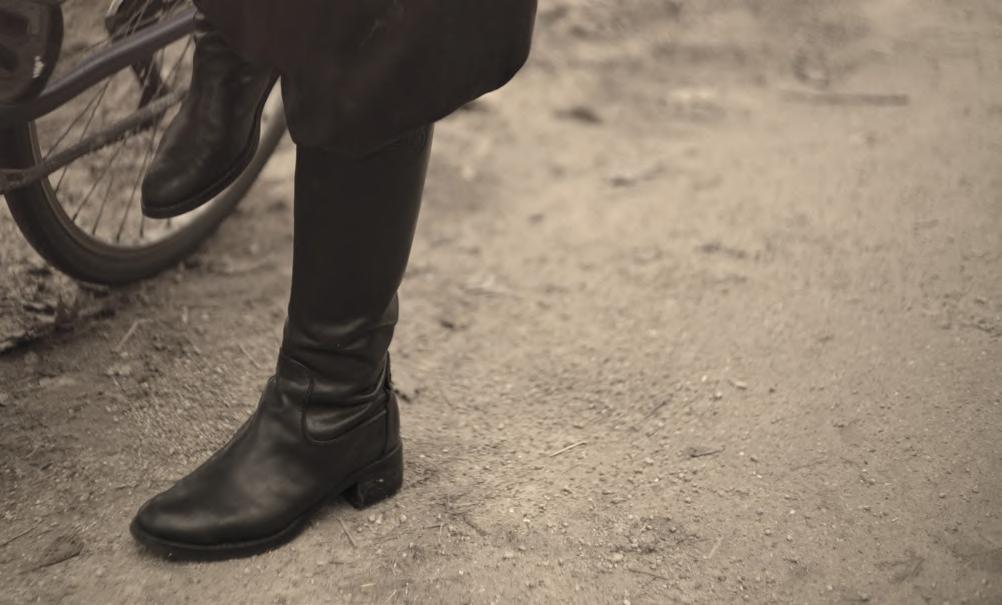
you pull on them, the skirt rides up so its not in the way of the bike. Bloomers would be worn under this garment as well. Overall, women came up with creative ways to conceal their newfound mobility due to the bicycle in the late 1800s. This led to discussions about equal rights and the passing of the 19th amendment in 1920.
Men were threatened by these changes because they challenge the gendered structure of society: women stay put and raise the children while men have the power to go after different opportunities (Jungnickel). Even doctors discouraged women from cycling, claiming they would struggle with heart palpitations, depression, and “bike face” meaning pale skin and dark circles around the eyes (Peterson). Women got harassed on the street and denied entry to establishments for riding bicycles and wearing non traditional clothing, like bloomers. People also saw women behaving this way as encroaching on men’s lives because they now have the power to go wherever they want and they can take up space on the street that should be devoted to men.
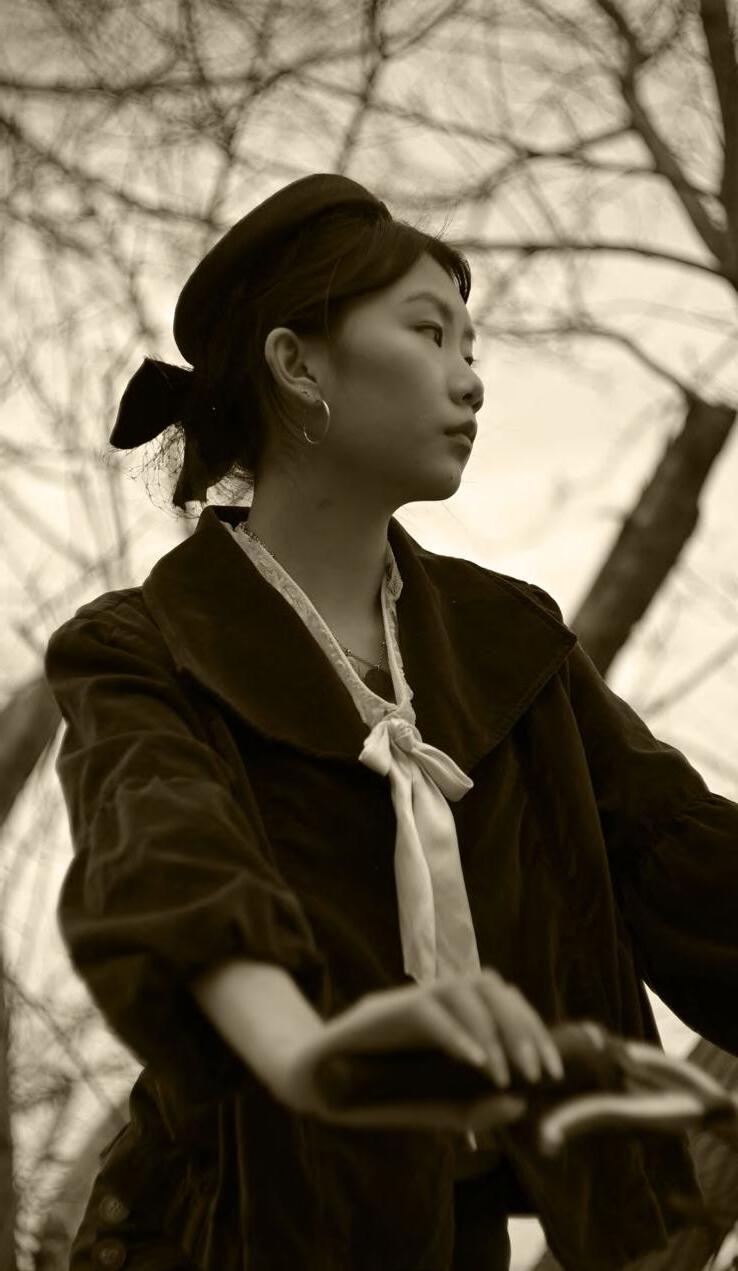
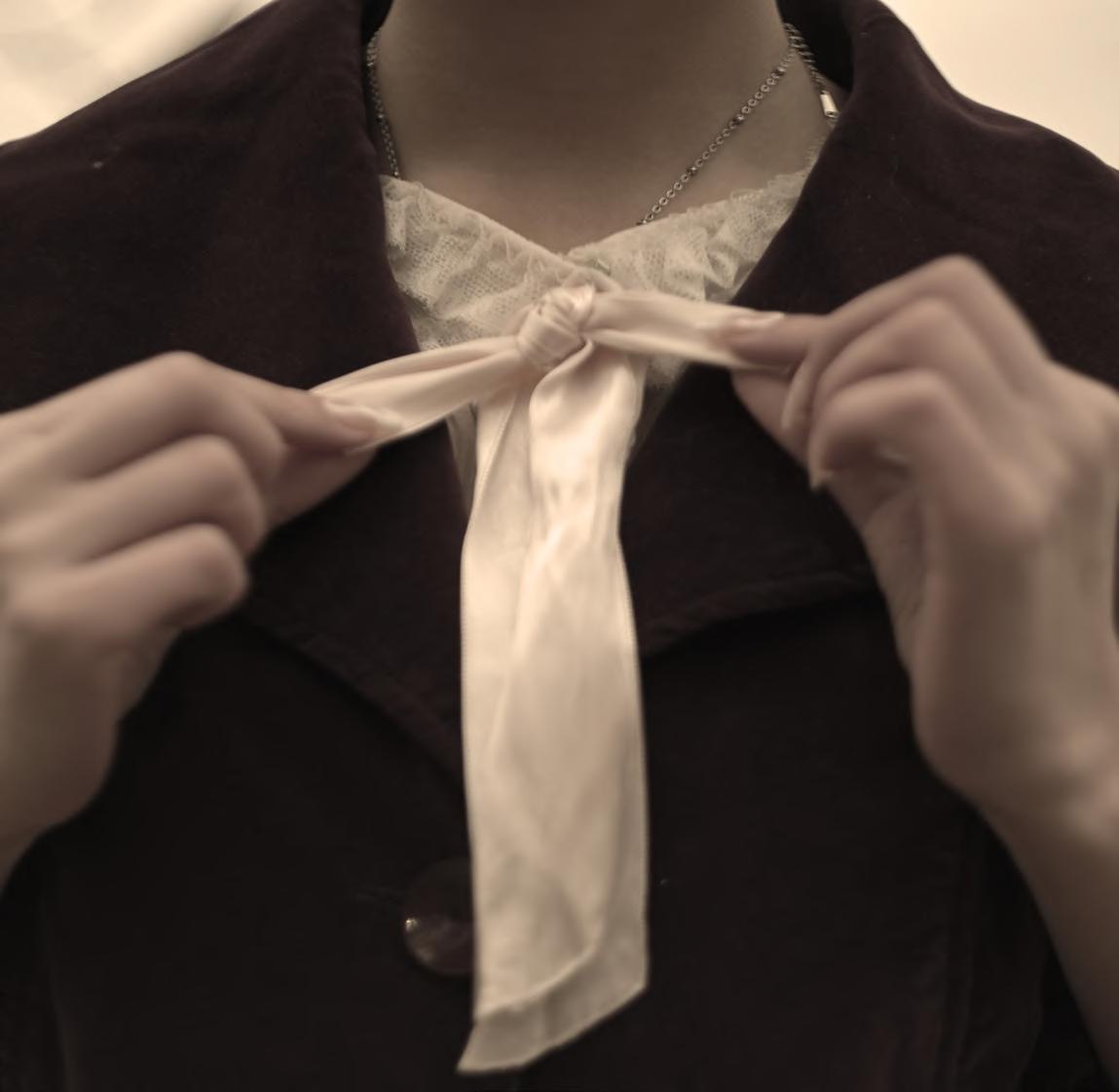
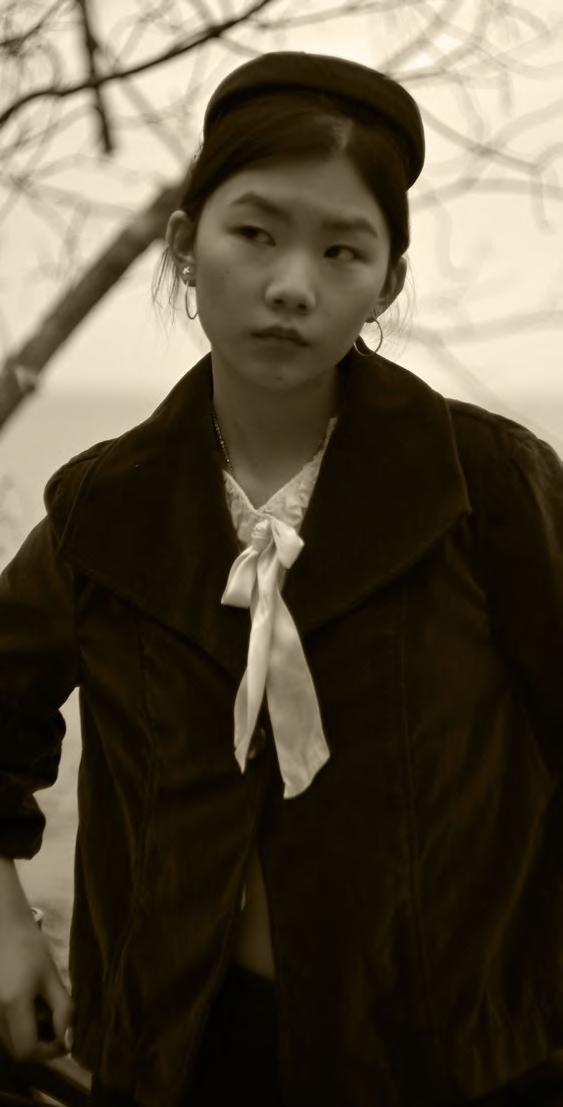
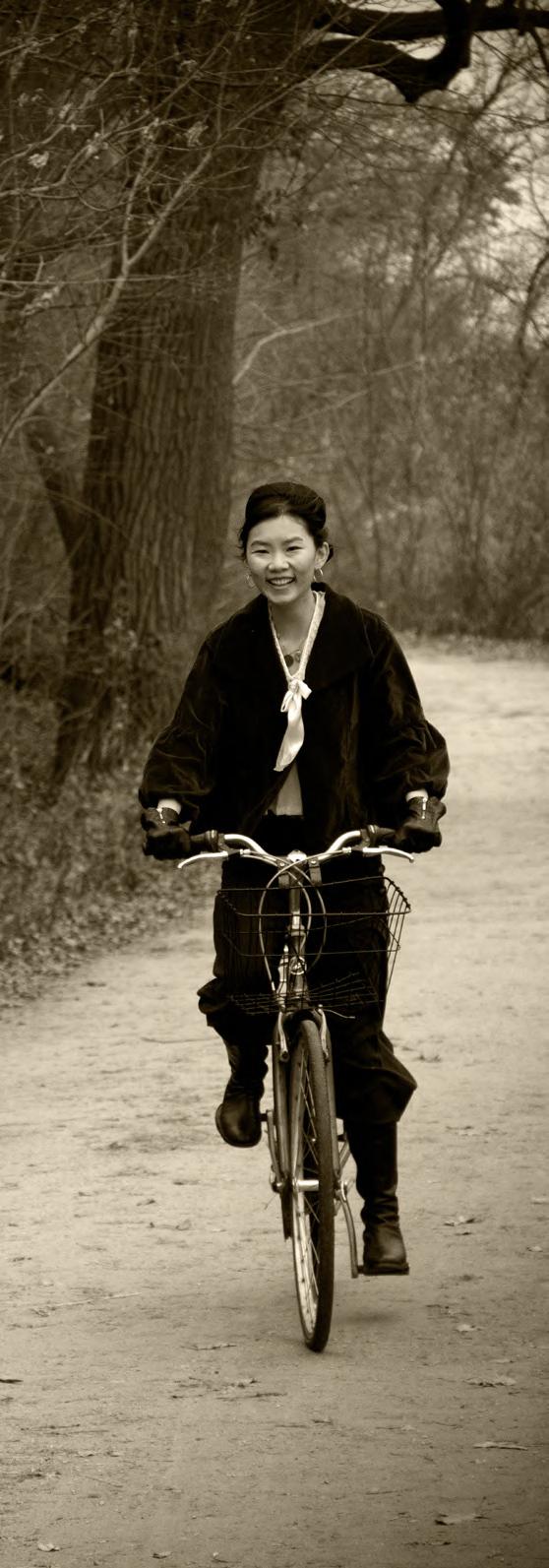
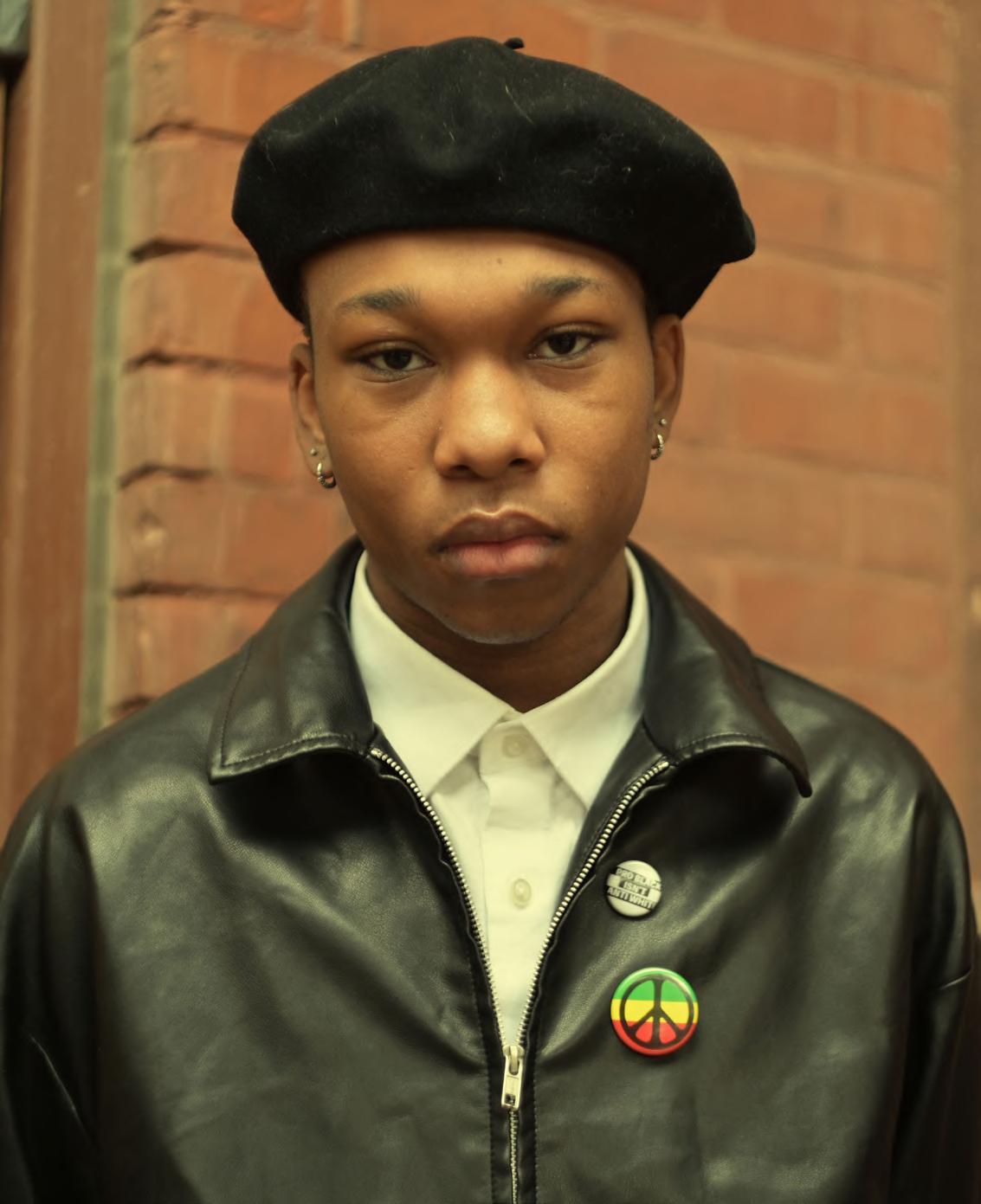
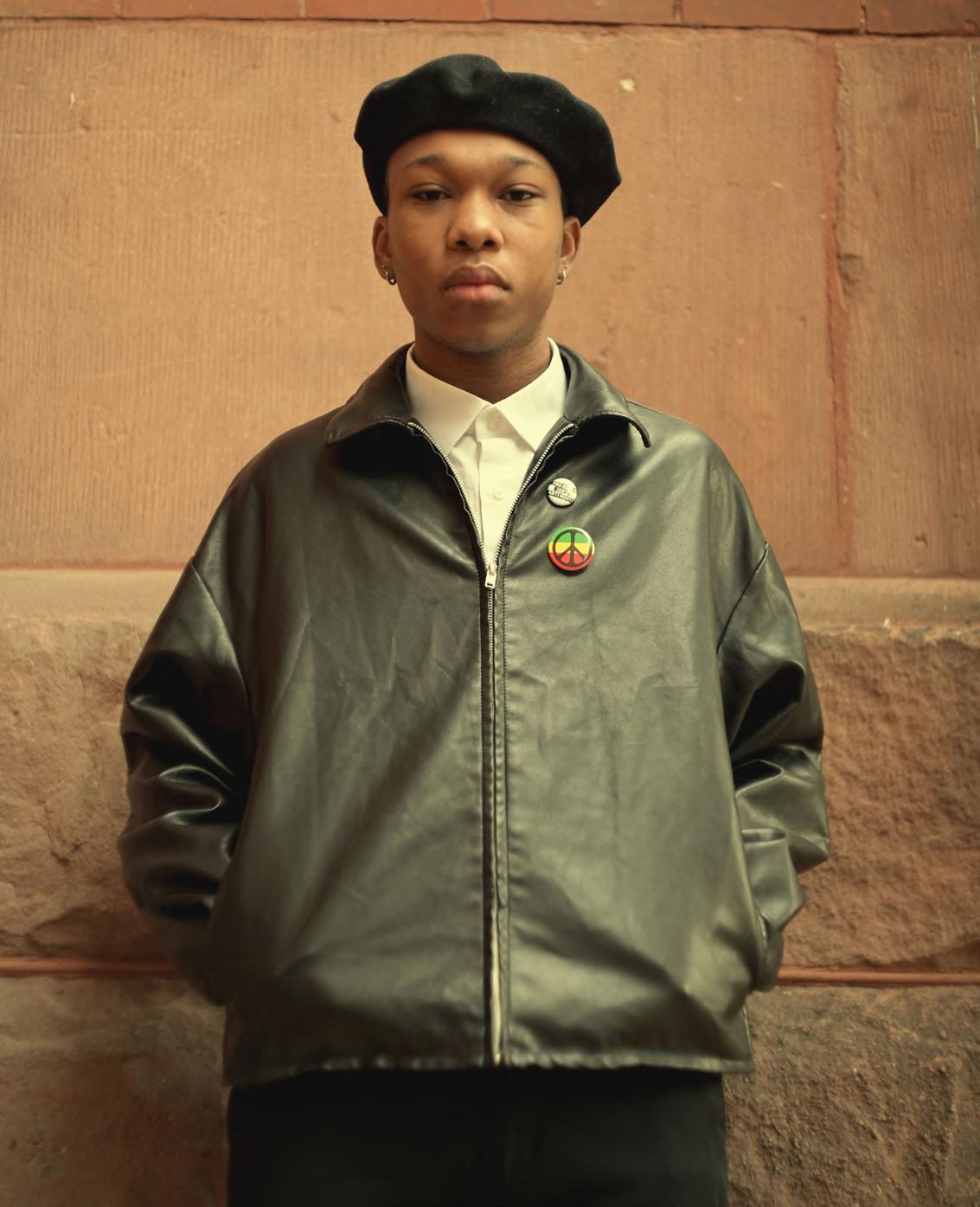
THE BLACK PANTHER PARTY
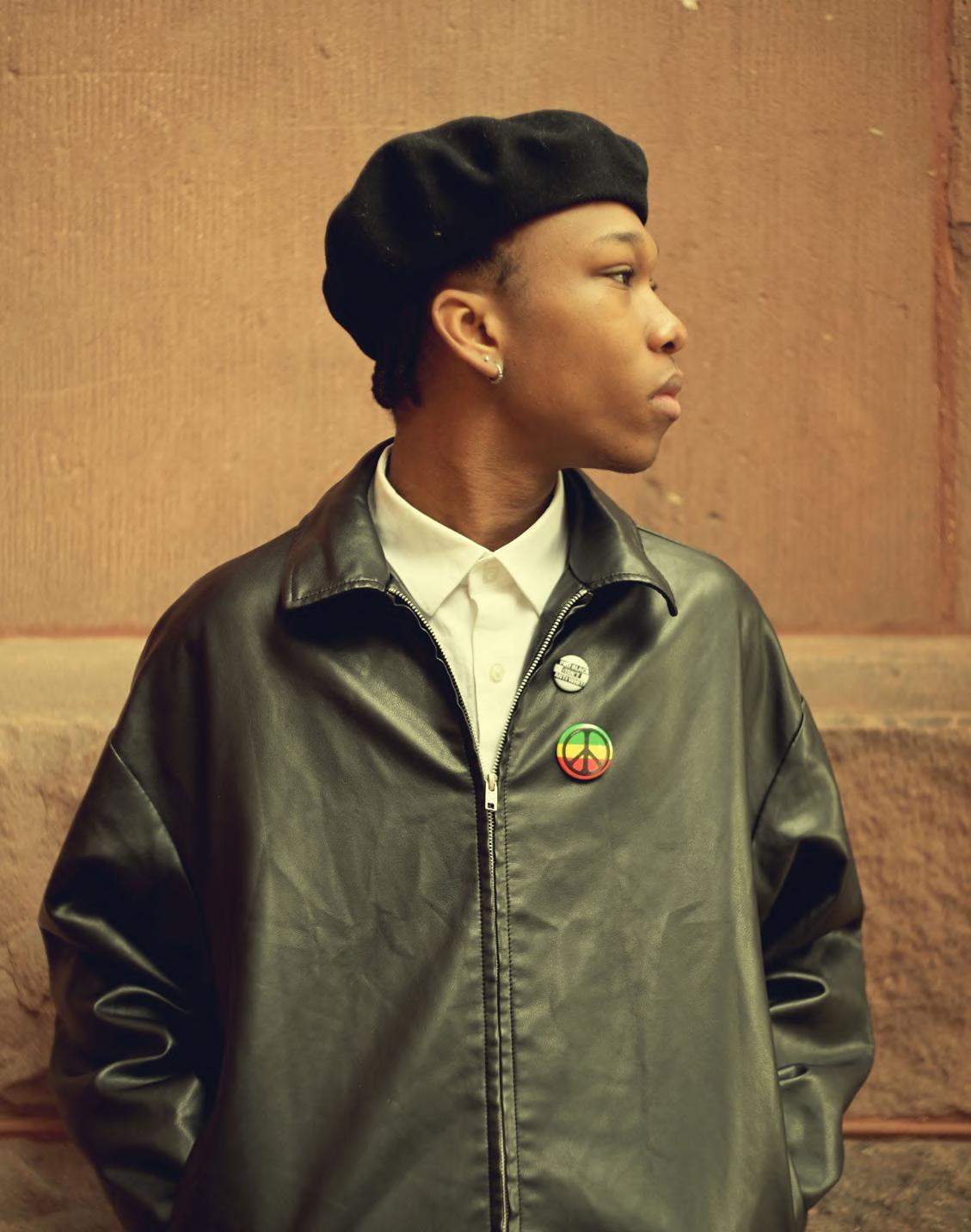
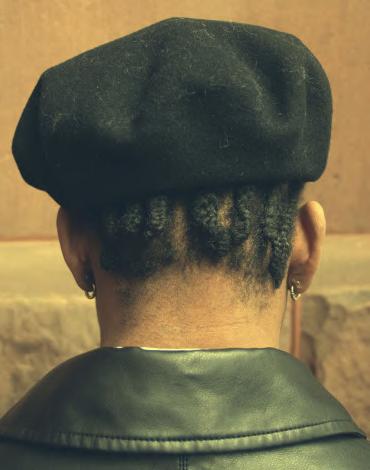
What if every word and move was used against you? This was an everyday reality of harsh surveillance for the Black Panther Par-
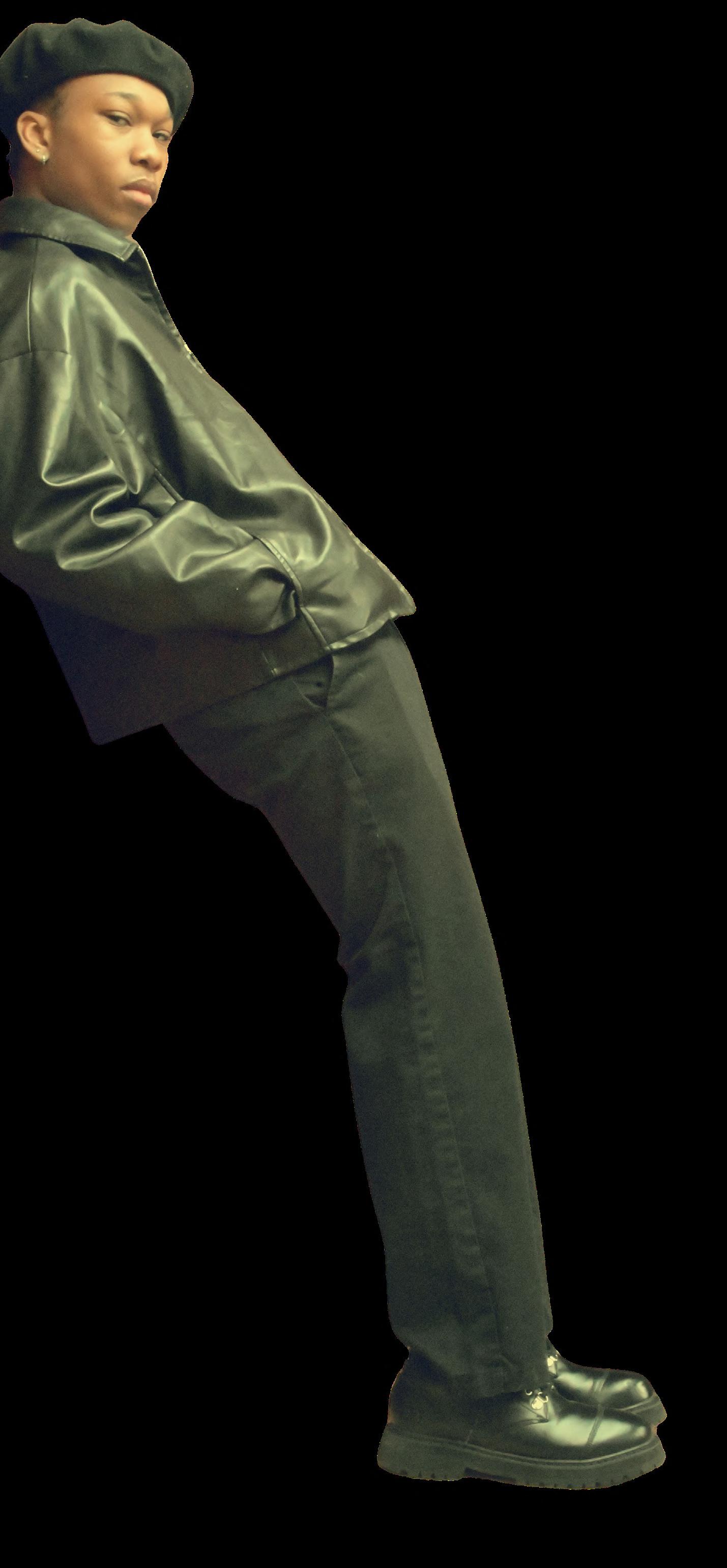
This group was founded in the wake of Malcolm X’s assassination along with a police shooting and killing of an unarmed black teen in San Francisco. To ensure that civil rights were being respected, Huey Newton and Bobby Seale began to monitor police activity in black communities and expand on their constitutional rights by making sure the police were being held accountable for their actions. They organized armed patrols in Oakland to monitor these police interactions with the black community.
However, these gatherings were often surveilled heavily under national security. The leaders were a central target of the FBI’s Counter Intelligence Program, which intended to disrupt activist groups that seemed radical or threatening to the status quo. So as the FBI worked to discredit its leaders, the Panthers were becoming increasingly divided.
The Panther uniform played a crucial role in countering this oppression. Dressed in black berets and black leather jackets, emerged the Black Panthers. The sleek, all-black, unisex look of a beret, sunglasses, and leather jacket diminished individual identities and instead symbolized collective unity. It was not about any one person but the cause they represented. The choice of dark, oversized clothing made it harder for authorities to single out members, visually reinforcing the Panthers’ unification. This continued to prove as reassurance for them to rely on each other while the FBI attempted to dismantle them.
Nevertheless, this outfit was more than a fashion statement. It demanded respect and challenged stereotypes. It proved to be a powerful image of strength and defiance. And for many, it was more than just iconic. It was a revoluchange—a uniform designed to reclaim visibility, power, and respect in the face of
in case of problems that arose, but they never made their moves first. It was their weapons out that they would attack. This was a way of embodying the black panther, which is commonly known for being secretive and well-hidden. symbol because of the nature of a panther. The panther doesn’t strike anyhe’ll back up first. But, if the aggressor continues, he’ll strike out” (Huey
on. To accentuate the black pride and the revolution that they created; woven into the fashion of today. The band Public Enemy, has into their music, revolutionizing Hip-Hop by addressing socio-political cé and her background dancers’ outfits at the 2016 halftime show can the Panthers. The whole operation of the Black Panthers has inspired familiar one being the Black Lives Matter movement. The momentum continue to challenge the status quo and break the cycle that can still be heard, and seen, echoing throughout our
WHEN COLLAPSES
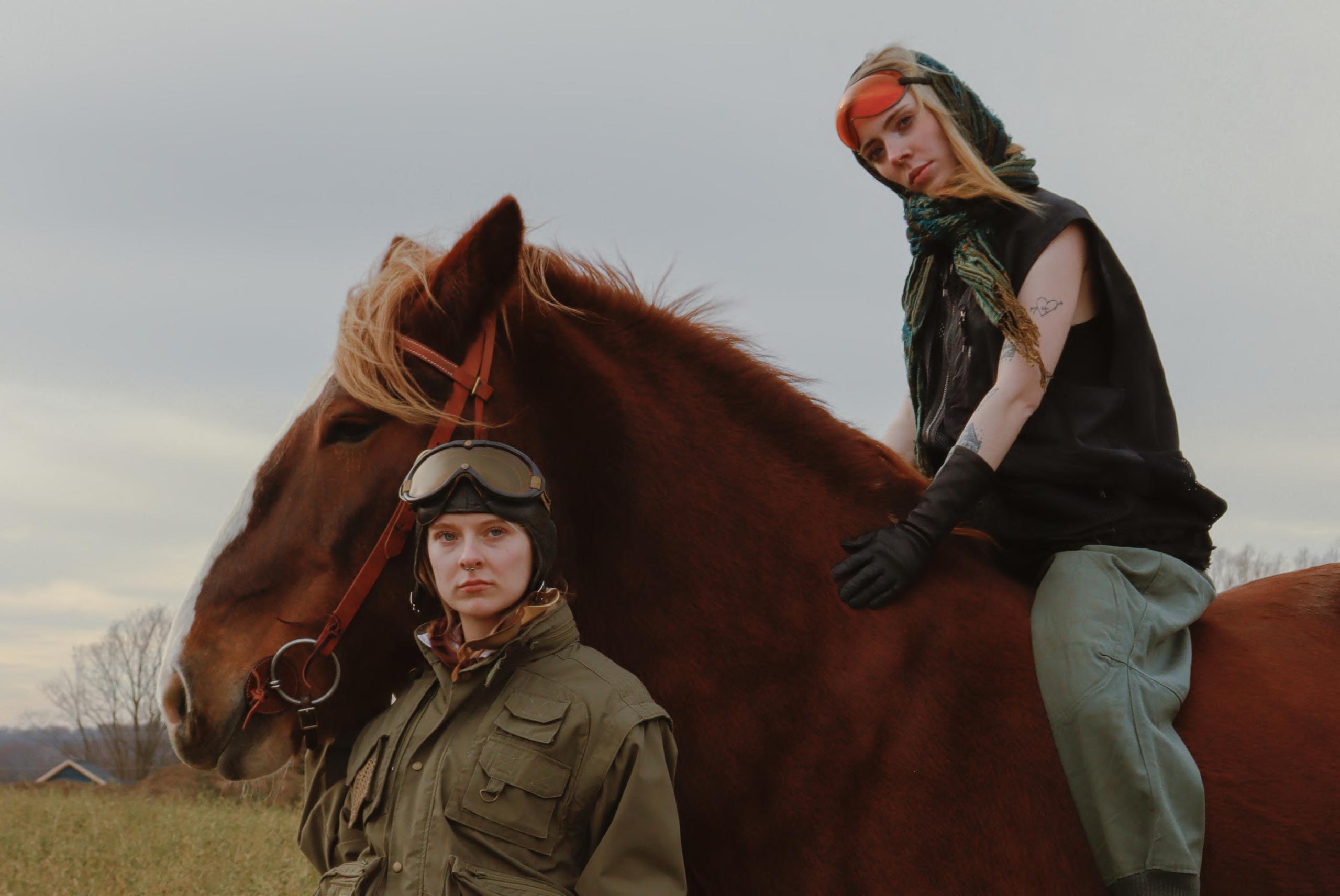
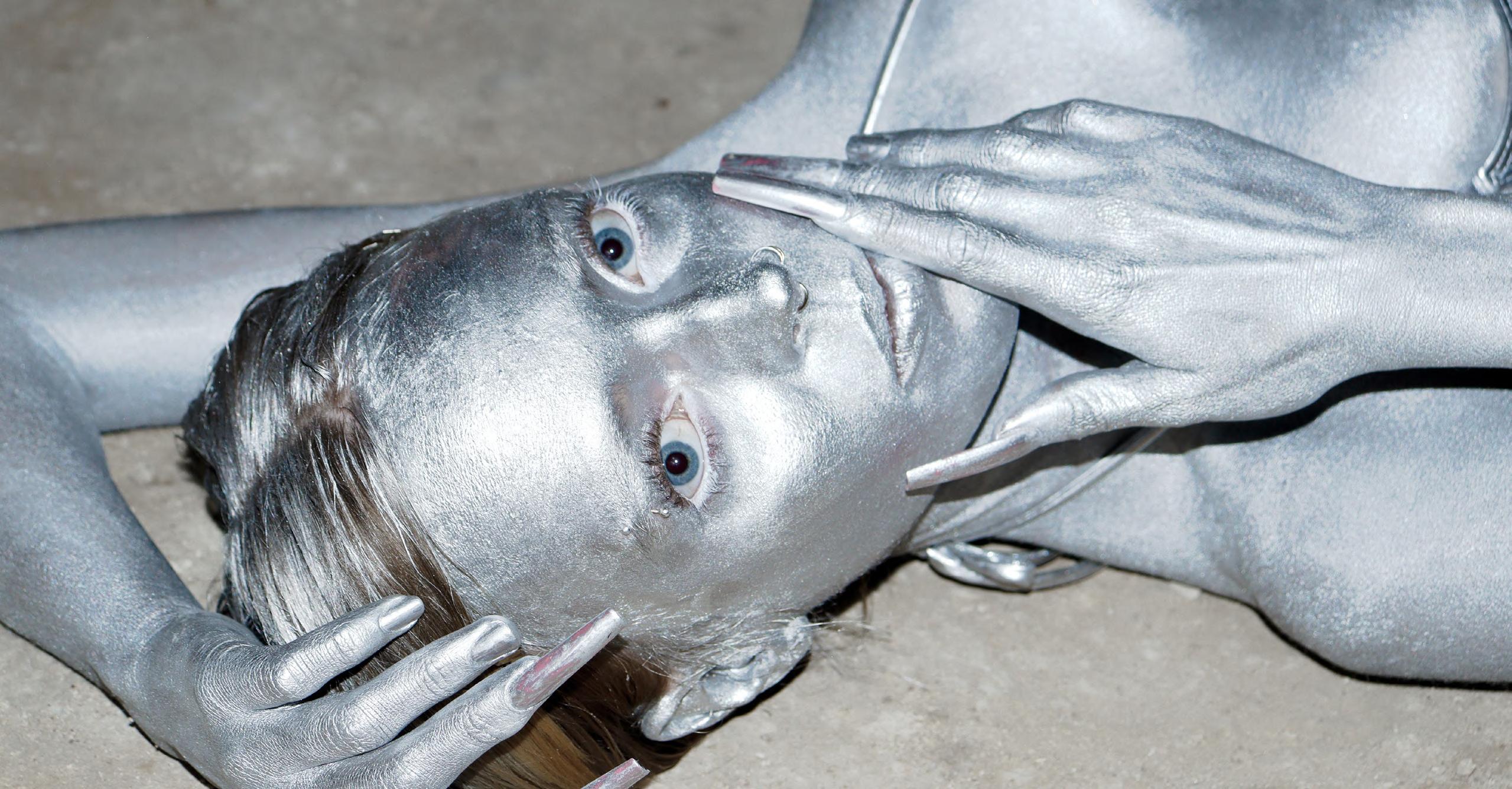
SOCIETY
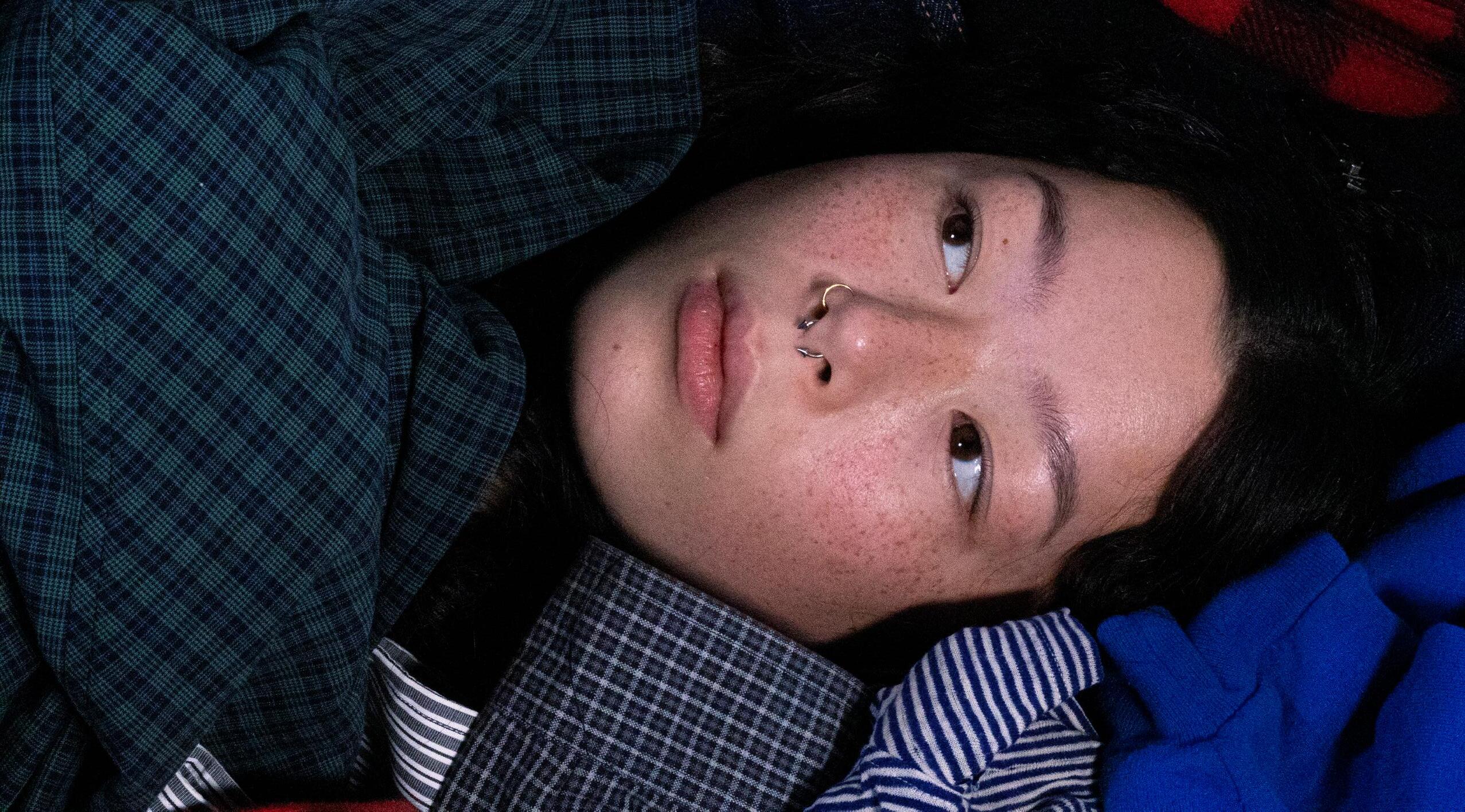
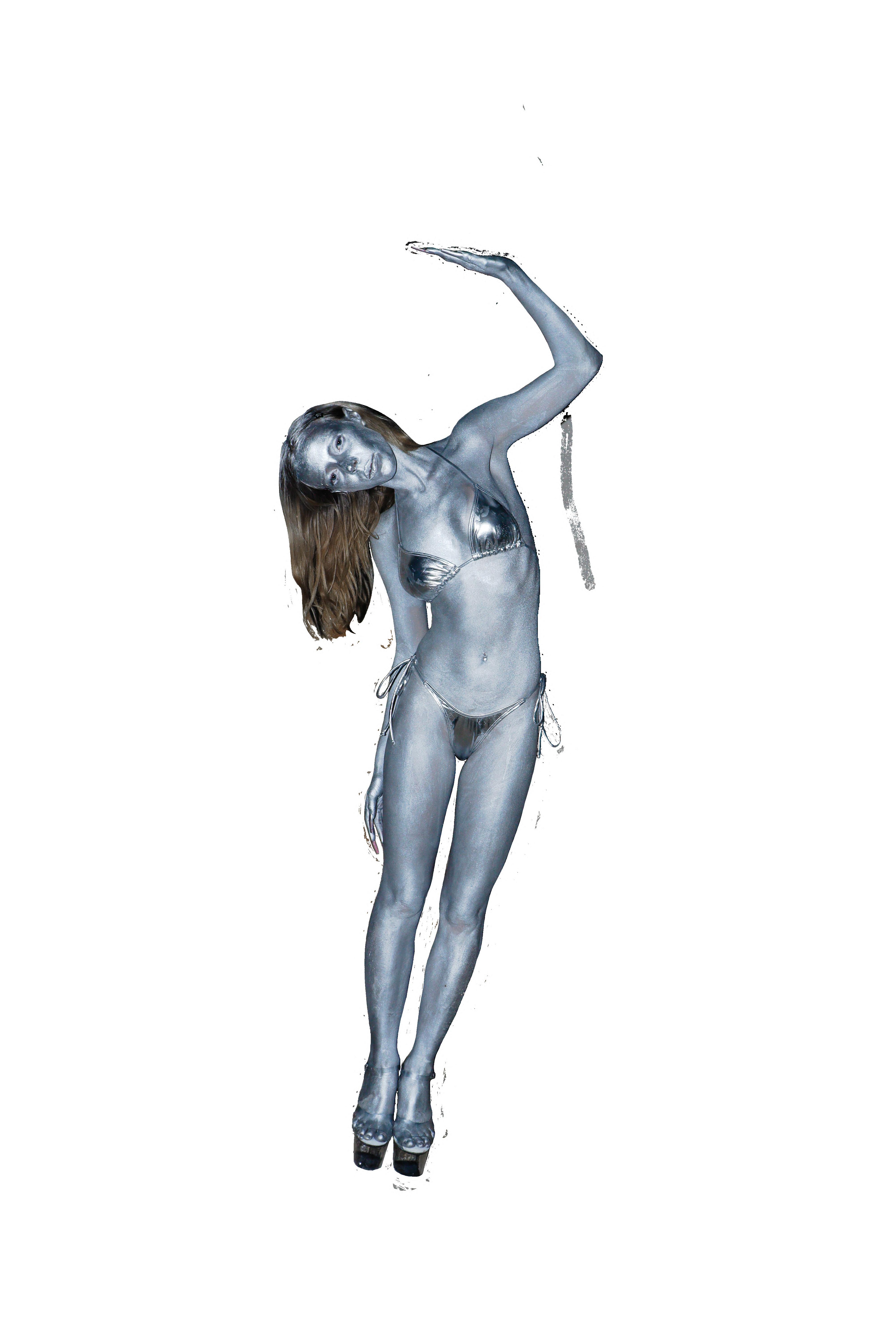

Creative Direction: Leah Fradin
Photography: Sidney Petersen
Model: Hadley Schultz
Makeup Stylist: Dani Gonzalez
Writer: Micha Sagers
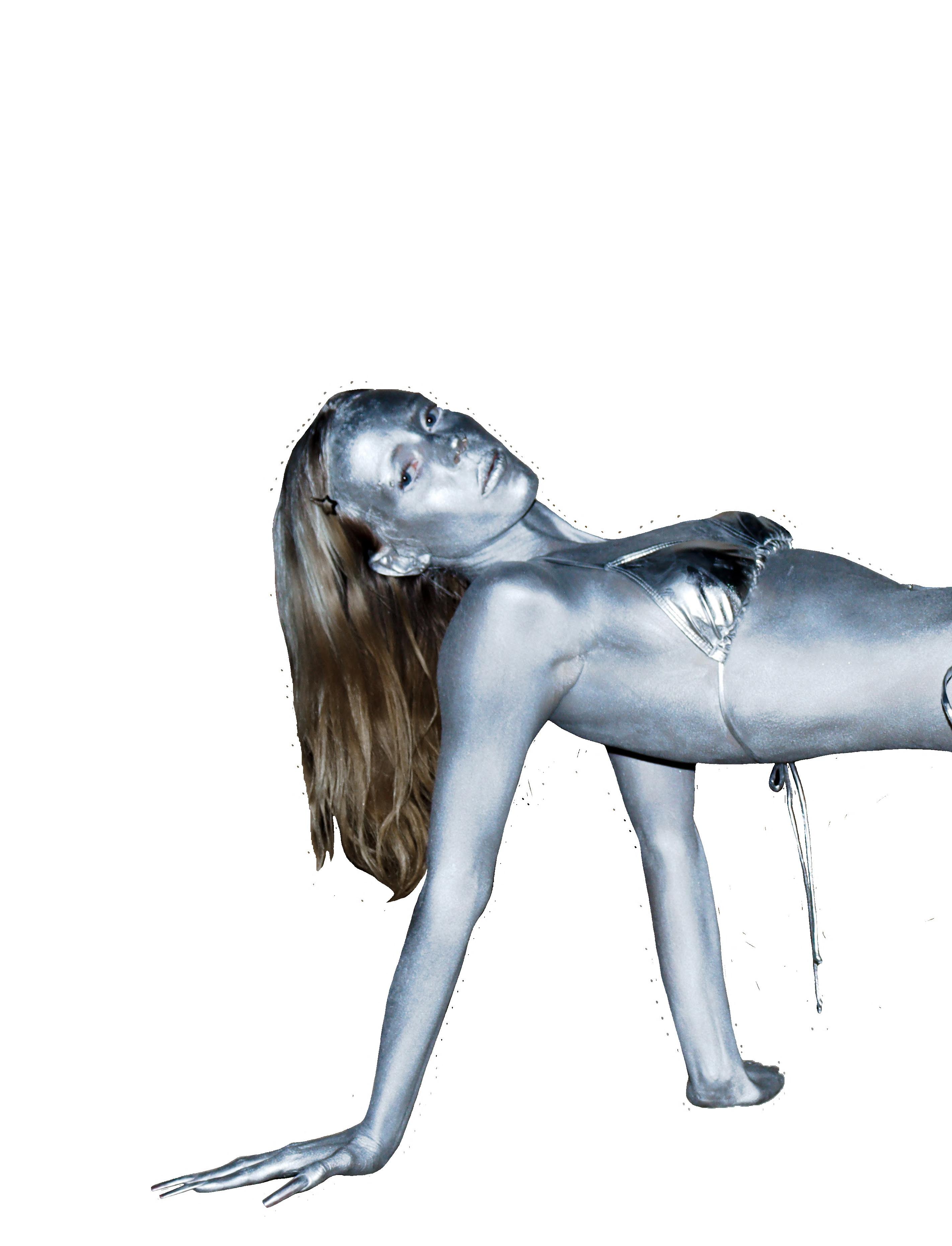
our water and air, pumped into environments by corporations that evade accountability by targeting poor, Black, and brown communities. Neighborhoods that are predominantly non-white tend to have lower property values, this allows industrial actors to acquire land for cheap, and leads to these neighborhoods facing greater pollution. Studies show that Black and Latinx people are more likely to have PFAs in their drinking water because of the industries located around them. Indigenous communities are also subjected to
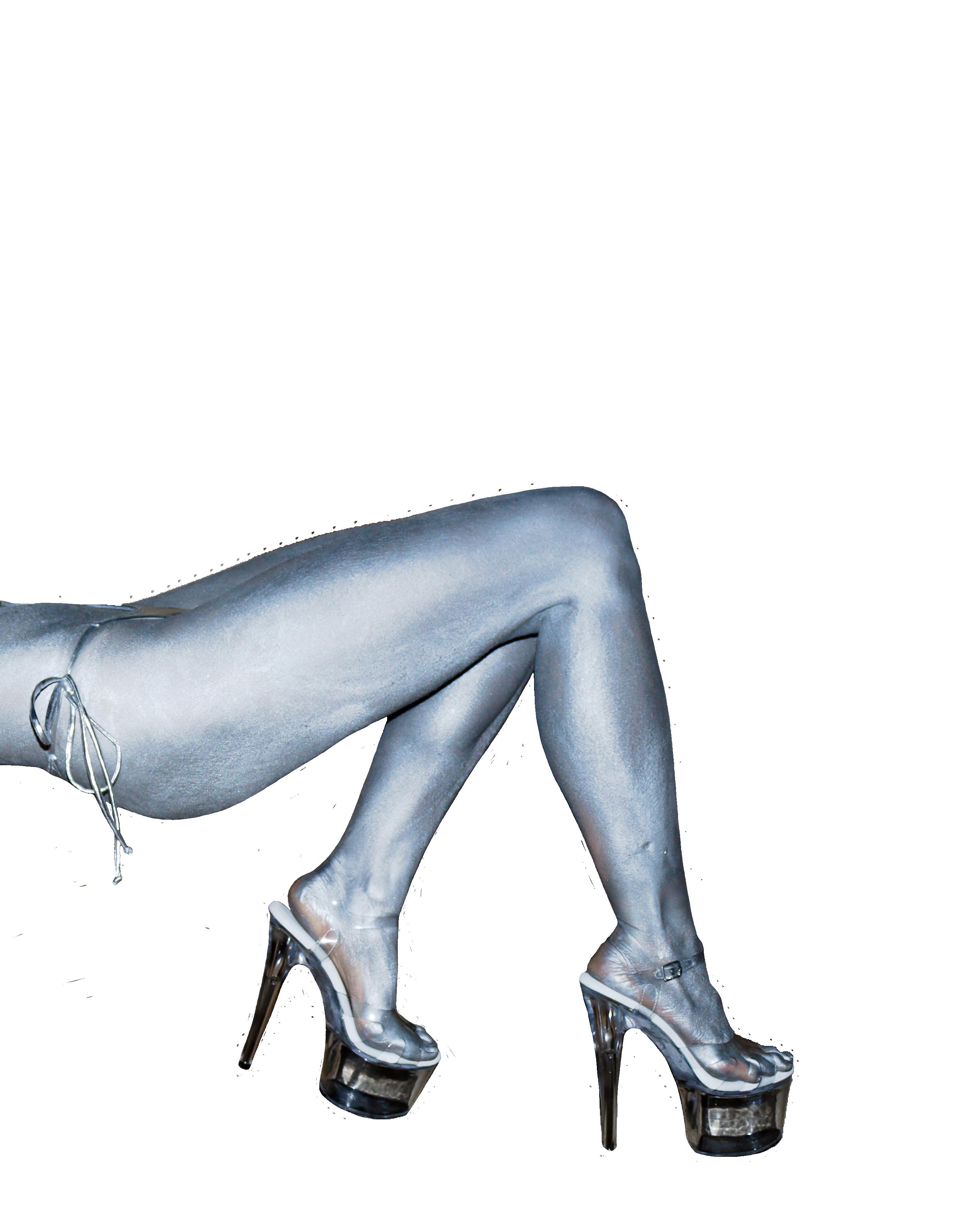
large amounts of nuclear and other hazardous waste because corporations take advantage of weaker land laws. This exploitation reflects a deeper disregard for marginalized people. What would a future look like where we continue to sacrifice our health for cheaper products and corporate greed? Perhaps one where low life expectancies, mutations, and poor health outcomes become the norm. Where toxic air and microplastics become so integrated with our lives we become the last generation to know a world without them. If we fail to act, this future—defined by poisoned bodies, polluted environments, and deepening inequalities— may no longer be a dystopian warning, but an irreversible reality.
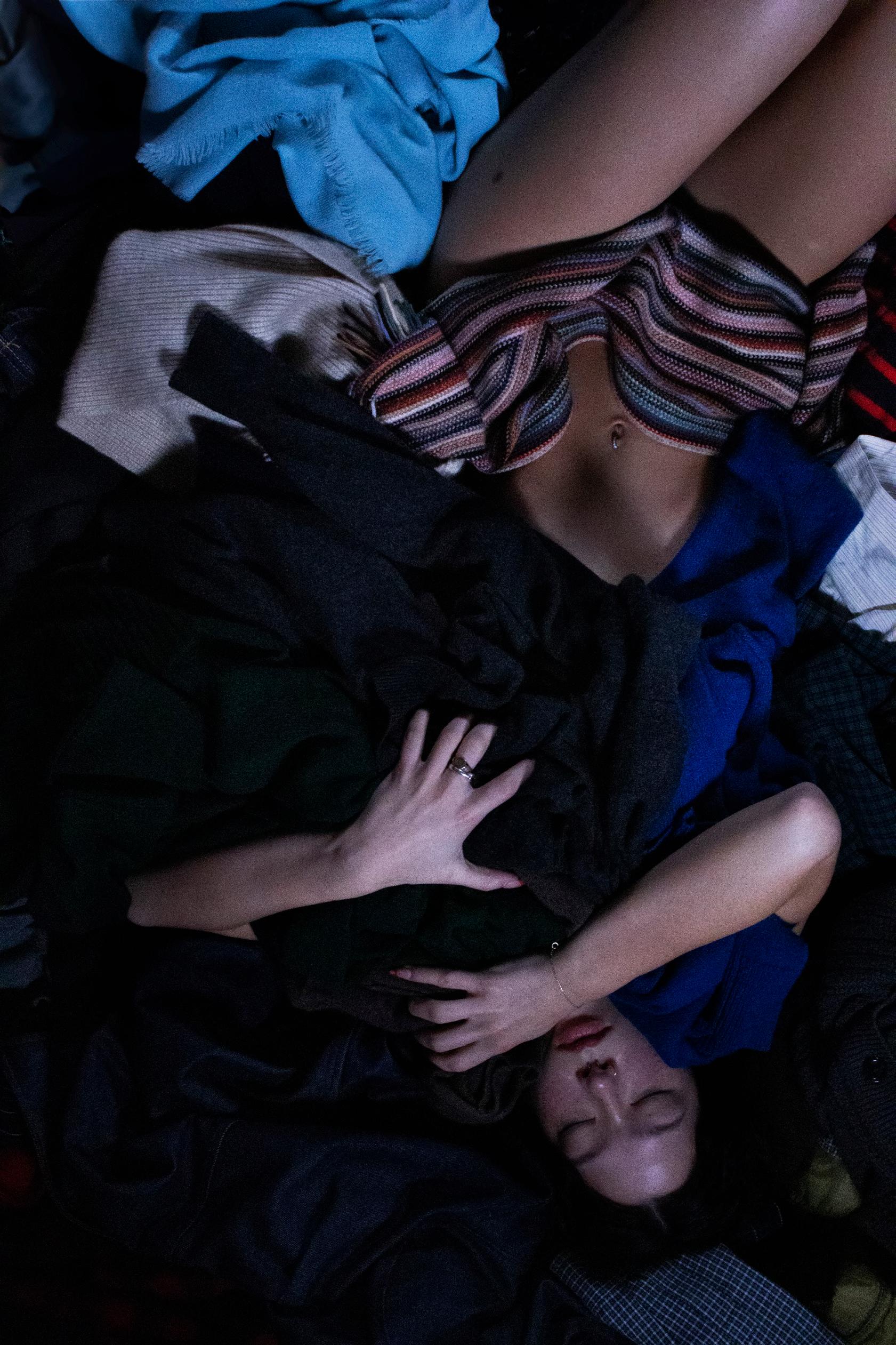
Photographer: Amy Grace
Model: Ellie Salton
Creative Director: Henri Clarke
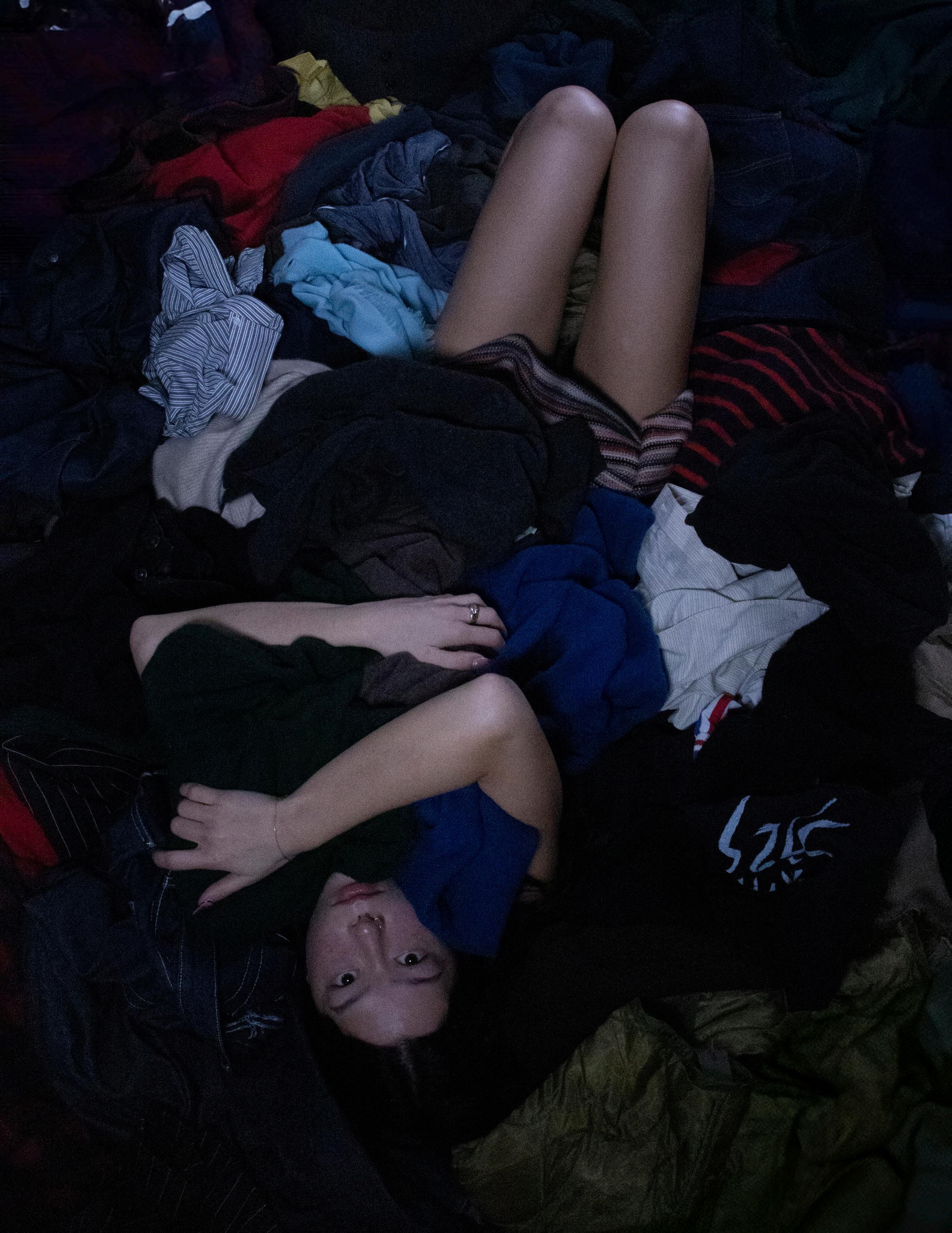
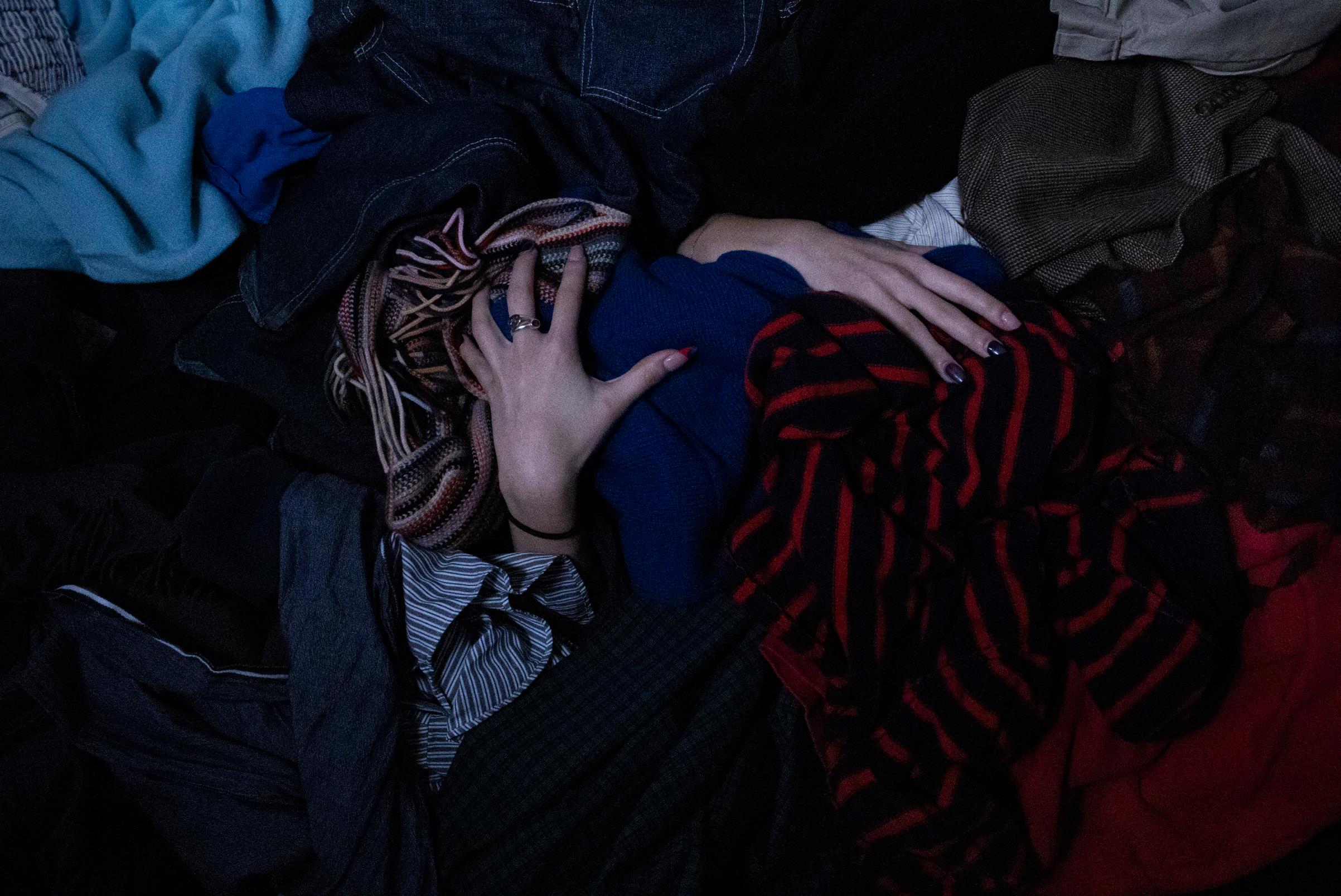
Overconsumption fuels a vicious cycle of environmental destruction and climate change, driven by profit-hungry brands like Shein that prioritize earnings over ethics. These companies routinely cut corners by using harmful labor practices to produce cheap, shortlived clothing. The result is a deluge of fast fashion items that not only burden landfills but also devastate the planet. The consequences of this greed extend beyond environmental harm. Capitalism is a system that leads to the exploitation of humans and land. The fast fashion industry uses cheap factory labor often sourced in South Asia and subjects employees to poor working environments. Garment workers, predominantly women, face inhumane conditions, minimal pay, exhausting hours, and gender-
based harassment1. Historically capitalism has worked hand in hand with colonialism to exploit the cheaper labor and natural resources of economically disadvantaged countries for the benefit of wealthier nations. The mining industry ravages places like Democratic Republic of the Congo where toxic cobalt mines have been compared to modern-day slavery2. When Indigenous communities across the Americas decline to extract fossil fuels from their ancestral lands, major corporations come in to do so anyways3. Additionally, the man camps surrounding fossil fuel projects have been directly linked to sex trafficking and violence against native women4.
Overconsumption is not just a matter of individual choices; it’s systematically enabled by governments and corporations
that prioritize resource extraction and unregulated production. This reckless cycle accelerates climate change, intensifying inequalities as rising sea levels and extreme weather threaten entire nations. Capitalism, which thrives on endless growth, is the driving force behind this crisis. But it ultimately bankrolls the depletion of finite resources for an unsustainable profit, leaving us with mountains of discarded clothing while regions of the world face drought and famine.
As resources dwindle, the consequences of overconsumption will intensify. Wars will begin over oil and water—scarce commodities in a warming world. The course we’re on highlights the ultimate question: how can humanity continue to prioritize consumption when the planet itself is on the brink of collapse?
The dominating feature of industrial society is, arguably, the automobile. Particularly in the United States, cities are defined by their car dependency - the tendency for infrastructure planning to favor cars over other forms of transportation. This relationship with cars has shaped the landscape of the present. Going to the grocery store, the onehour commute to work, a trip to the emergency room, all of these things are made markedly more difficult by not owning a car. In the world of urban sprawl, where highway systems without
pedestrian crossings slice cities in half, bike lanes and sidewalks are lost to expanded roads, and public transit infrastructure is as underfunded as it is outdated, the car is the key to a better life. Under this chrome veneer of convenience, however, lies a substantial, often unseen cost, the brunt of which is borne by already marginalized communities. The rising prices of cars, with the past five years seeing a 33% price increase for new vehicles, regressive interest rates that cause low-income customers to pay more relative to their wealthier counterparts,
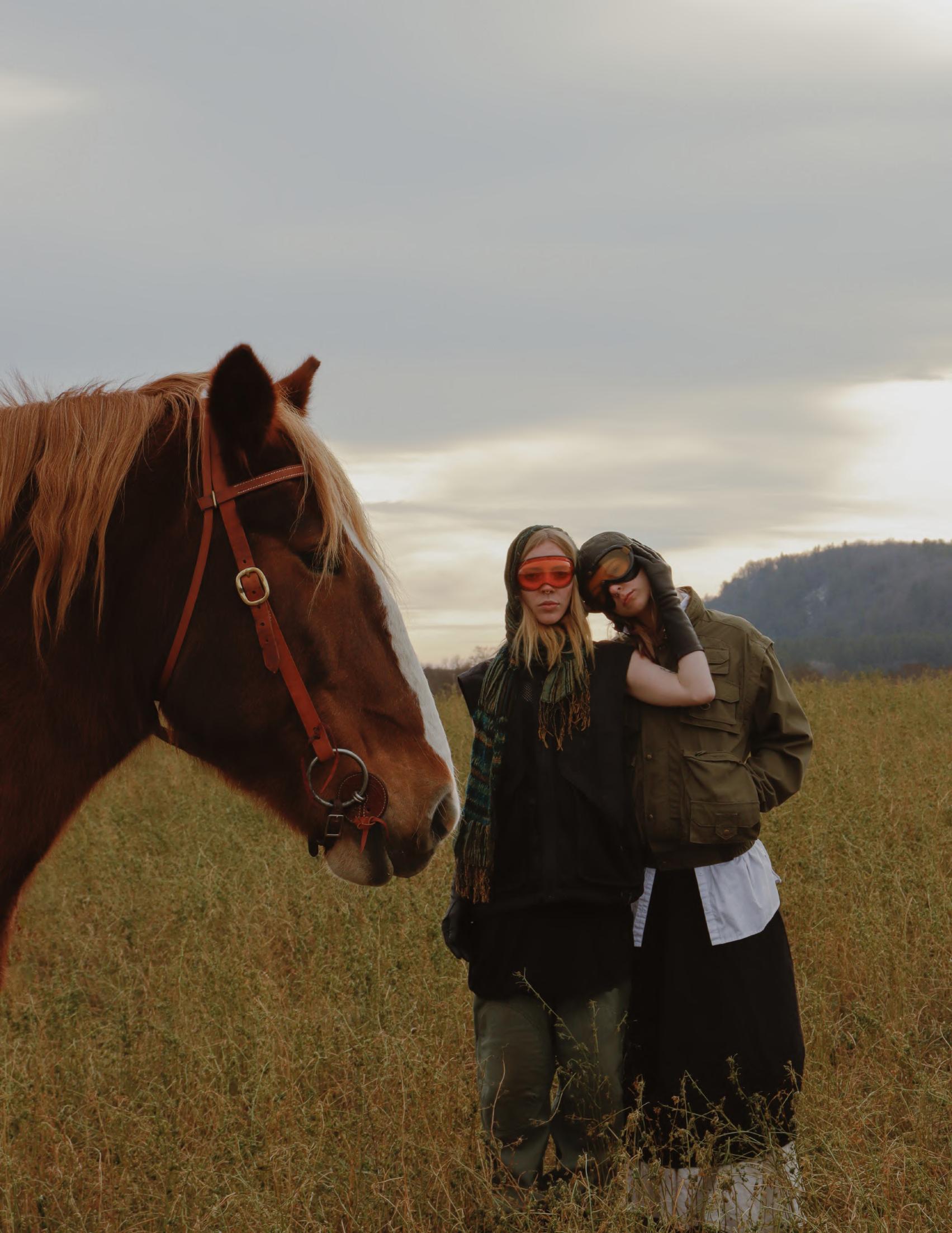
Creative Direction: Ian Wojtak
Photography: Sidney Petersen
Models: Hadley Schultz and Riley Fuschel
Writer: Ian Wojtak
and the tendency for communities of color to pay more for insurance relative to white communities of similar risk and accident costs1, are indicative of an industry geared towards the needs of a privileged class. What cannot be quantified is the alienation this phenomenon generates for those precluded from driving, not only by economic but logistical factors as well. When a friend’s house is a 15-minute drive, third spaces (social environments outside home and work) are fewer and farther between,2 and the only bus in town is yellow, how is someone under 16 expected to socialize, to interact with the world around them? How is anyone without a license? What about the elderly, or some members of the disabled community, who are sometimes unable to operate a vehicle? All are now isolated from the most necessary parts of society, simply because it was not built with
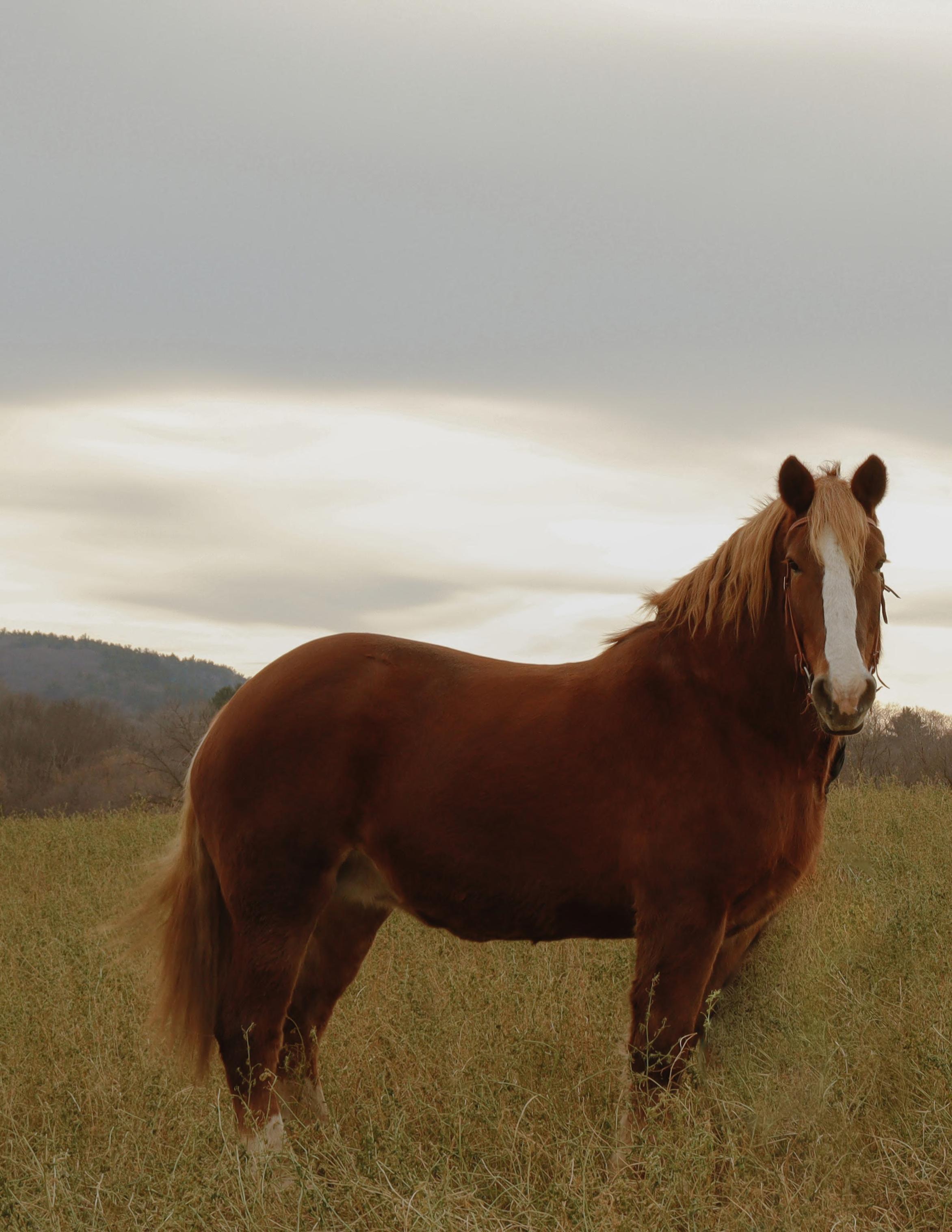
them in mind. Not only does the proliferation of cardependent infrastructure disenfranchise those unable to afford or operate a vehicle, but it has had famously devastating effects on the climate. Greenhouse gases from transportation are responsible for 28% of the United States’ total emissions, making it the largest source of emissions in the country, according to the EPA.2 The global standard this sets is equally disturbing. Countries like the U.S.’s reliance on fossil fuels is justified and bolstered by their car-dependent infrastructures and economies, providing additional support to an industry historically responsible for exacerbating climate change. The great, existential threat of our time is directly fueled by this industry, all for profit and convenience, at the expense of the Earth and its inhabitants.
The troubles with car-dependent infrastructure do not end with the climate apocalypse it appears to be propelling us towards. When society collapses, this industrial, technological society, what comes next? When highways are littered with the metallic skeletons of abandoned automobiles, gas stations lie looted and drained, and no international infrastructure is left in place to distribute fuel or vehicles, what is left to traverse the world paved for cars and not feet? When the future is uncertain one looks to the past. When a technological society implodes, one will be compelled to shift their gaze to the technologies of the past, those that worked with nature, rather than dominated it. Thankfully, nature holds the forebearer of the automobile, the first vehicle people used to traverse the sprawling, once-new world: the horse. Before car dependency, before planes, trains, and automobiles, these animals were the vehicles that connected humans across distances long and short. They allowed them to expand beyond themselves, to
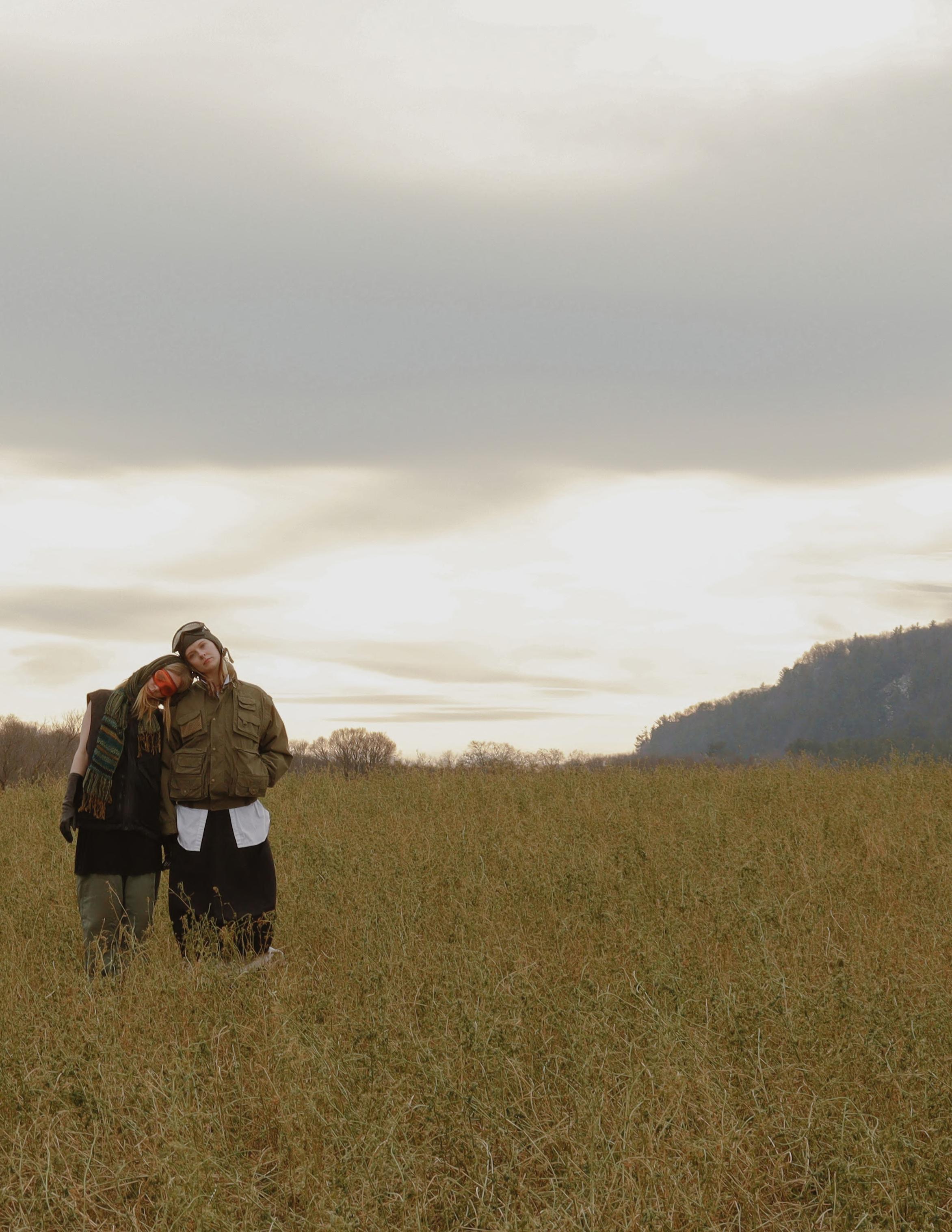
observe the world past their familiar horizons. Just as humans, in the collapsed world, will find themselves only able to go as far as their legs can walk, the domesticated horse finds itself in the wild world it left behind at the behest of the humans it came to rely on for survival. There is a unique symbiosis between these creatures, the animal refugees of a ravaged Earth. They will supply, as they always have, what the other cannot produce for themselves. Equines give people a means of transportation, people give them a means for continued survival. In this way, the horse is symbolic of the choice between the world and worldly things, a reminder of the final imperative of a collapsing Earth: you must choose the Earth. Honor the relationship present between humans and the Earth, between oneself and nature, because, at the end of the day, when the roads crumble, the cars rust, and society collapses, it will be all that remains.
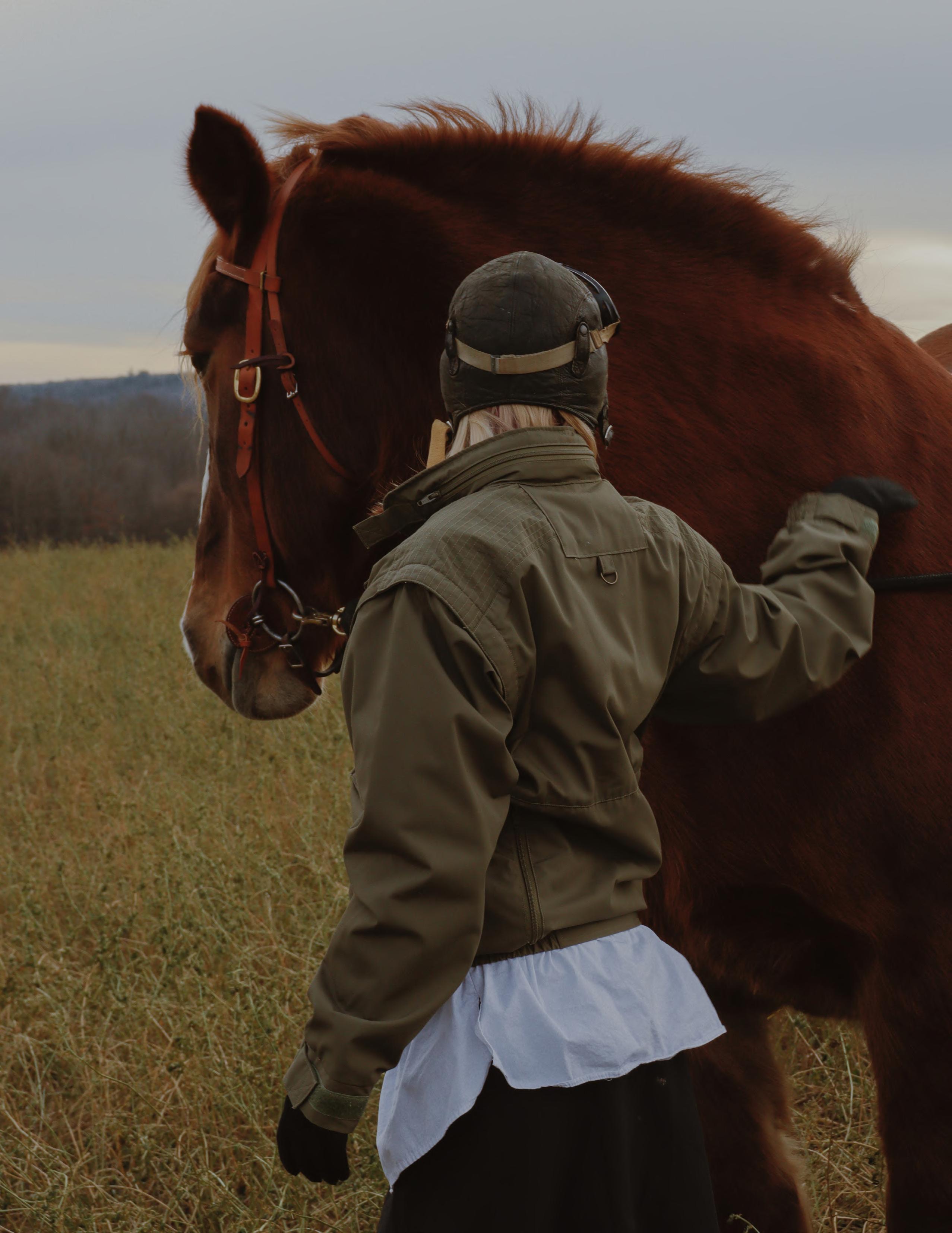
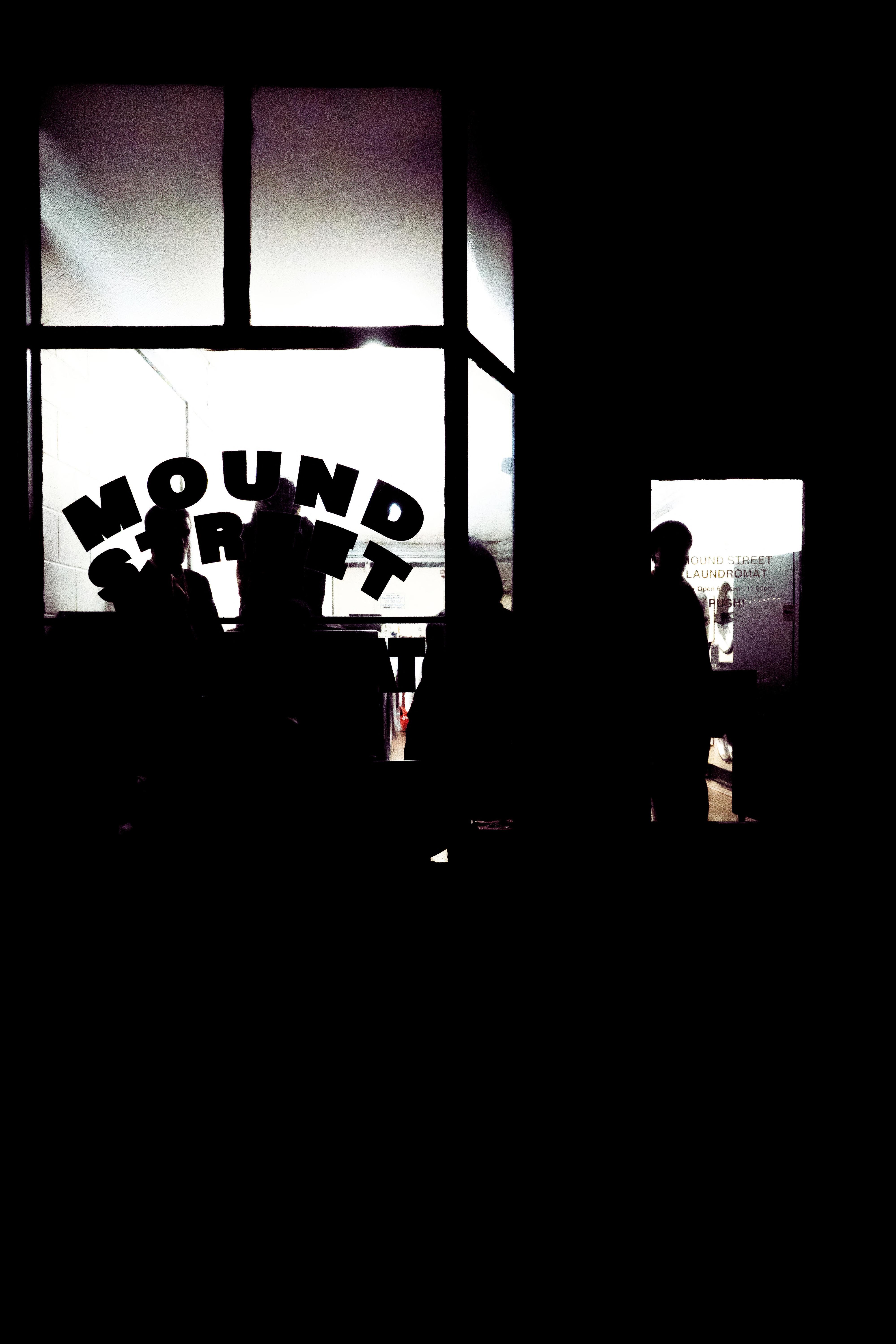
Project Lead: Mariana Minter & Dave Siméon
Creative Director: Sasya Reddy
Photographers: Rayyan Bhatti & Finnegan Ricco Writing: Leah Kennedy
Stylists: Lily Bloch, Jordan Almandi, Antoine Westbrook, Dave Simeon, Demi Moore
Set Designers: Lily Bloch, Maryam Yusuf, Finn Bromstead, Cosette Wildermuth Makeup: Demi Moore & Lily Bloch
Layout: Sophia Koo, Kesia Osman, Maryam Yusuf, Lily Bloch, Demi Moore, Dave Simeon
Models:
Javier Thomas, Yutong “Emma” Mu, Jovita D’Souza, Brett Dunn, Bryah Lewis, Alicia Obiakor, Kimberly Kyi, Kavya Kanungo, Kaiden Brown, Faith Nyabuto, Kaniya Thomas, Nai’Taija Williams McMorris, Indigo Keith, Lauren MacDougal, Spencer Runde, Gloria Aliu, Jariah Bayan, Antoine Westbrook, Nyawer Biel, Mya Kennedy, Michelle Drane, Claire Neblett, Maryam Yusuf, Keiana James, Waleska Martinez, Mariah Cunningham, Delaney Pfeiffer, Pedro De Jesus
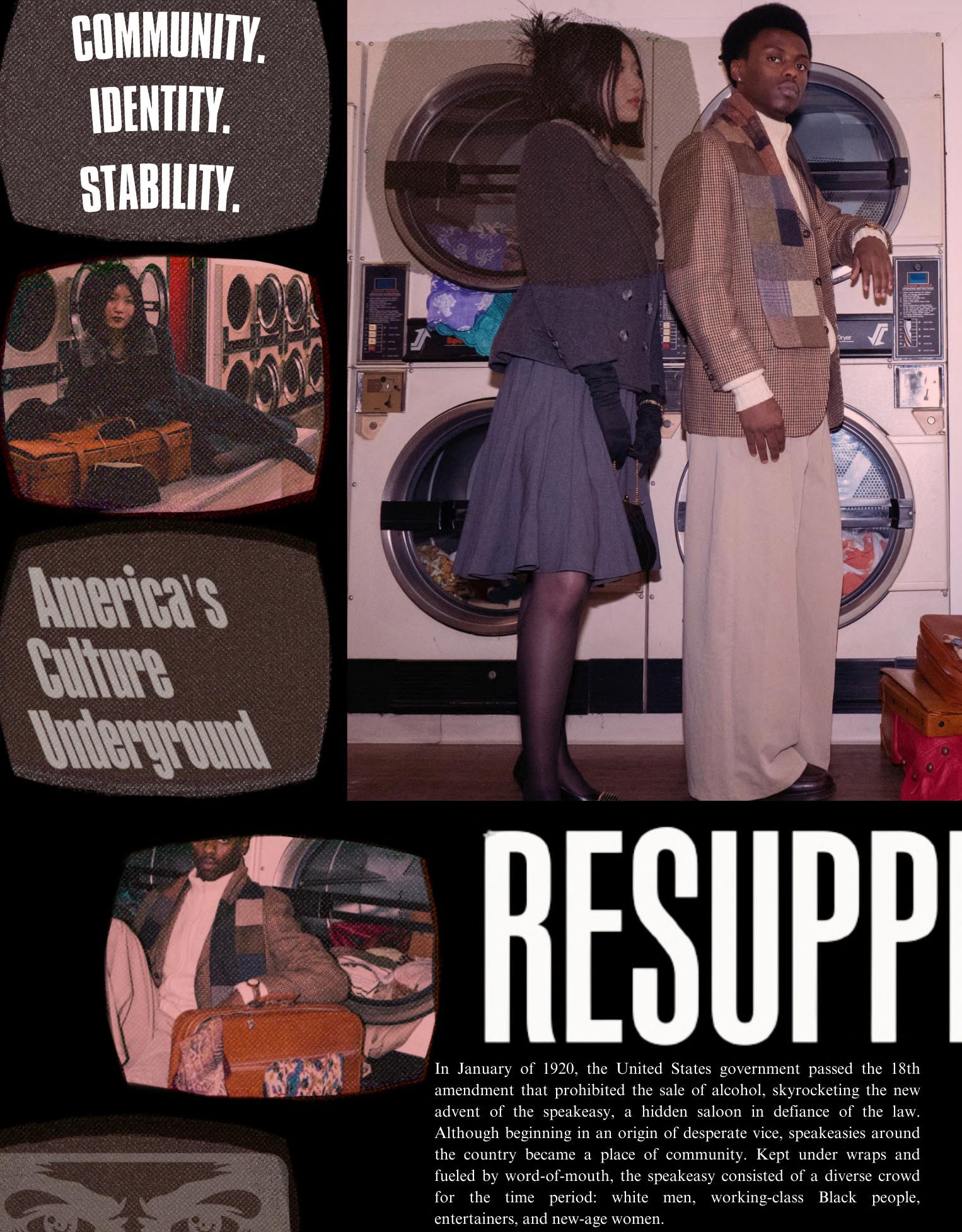
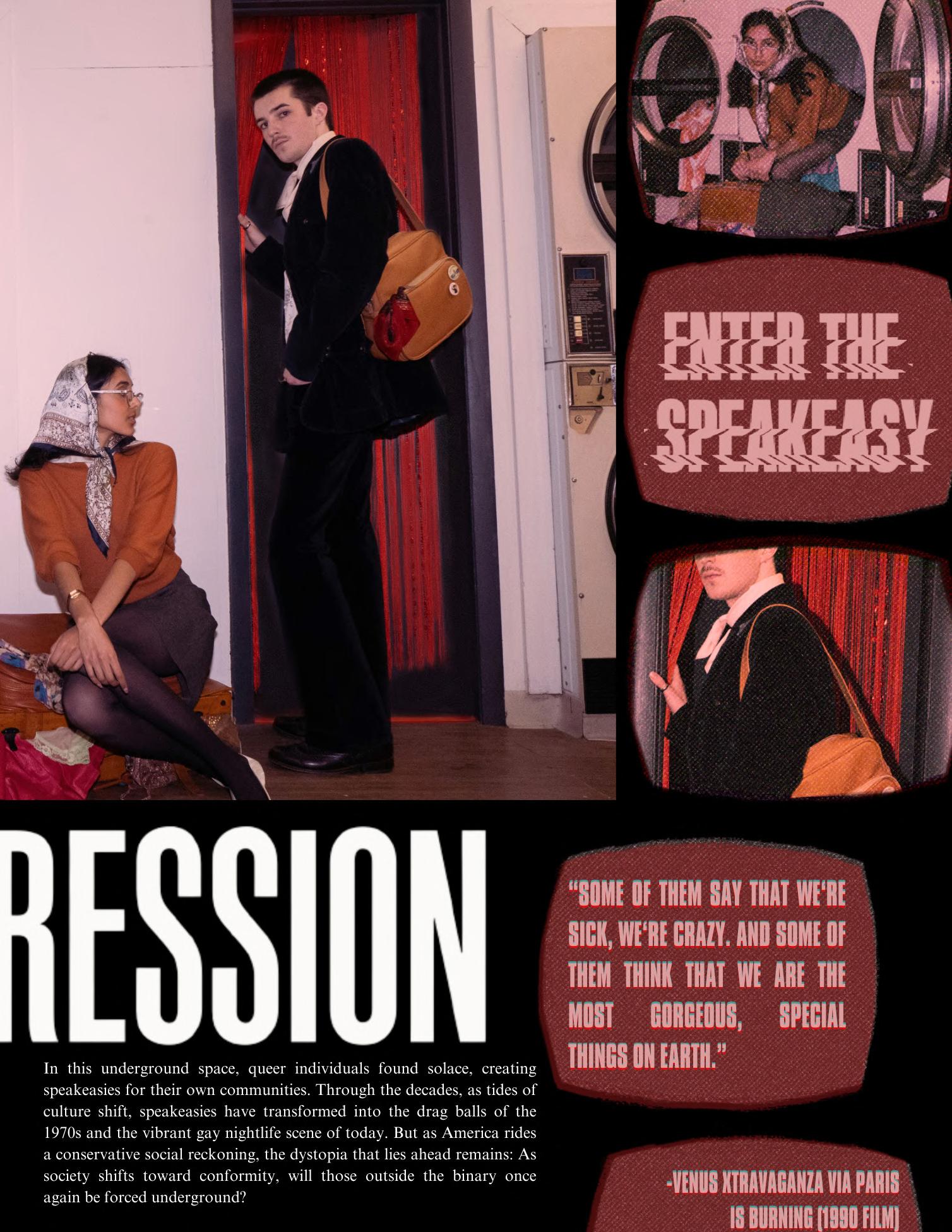
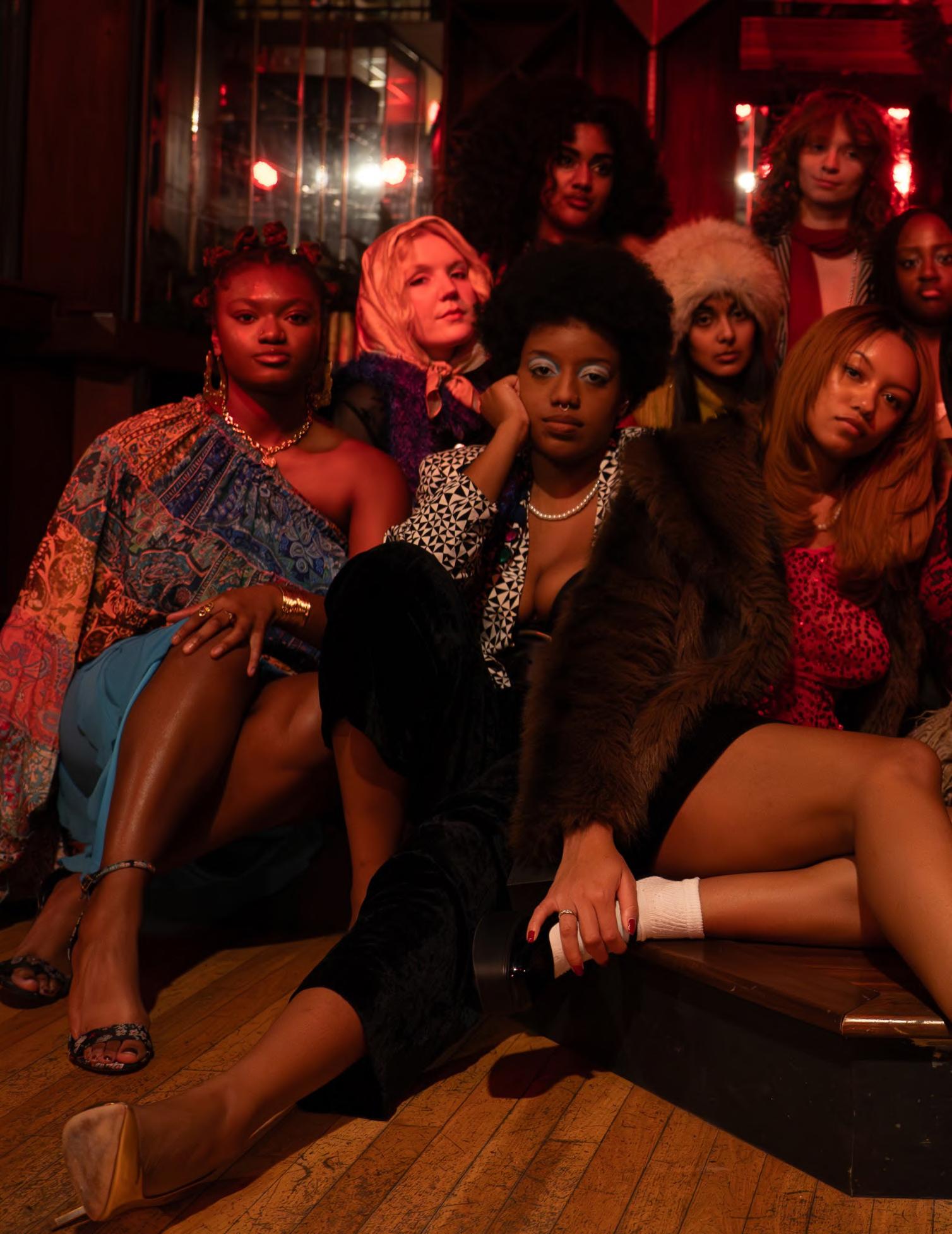
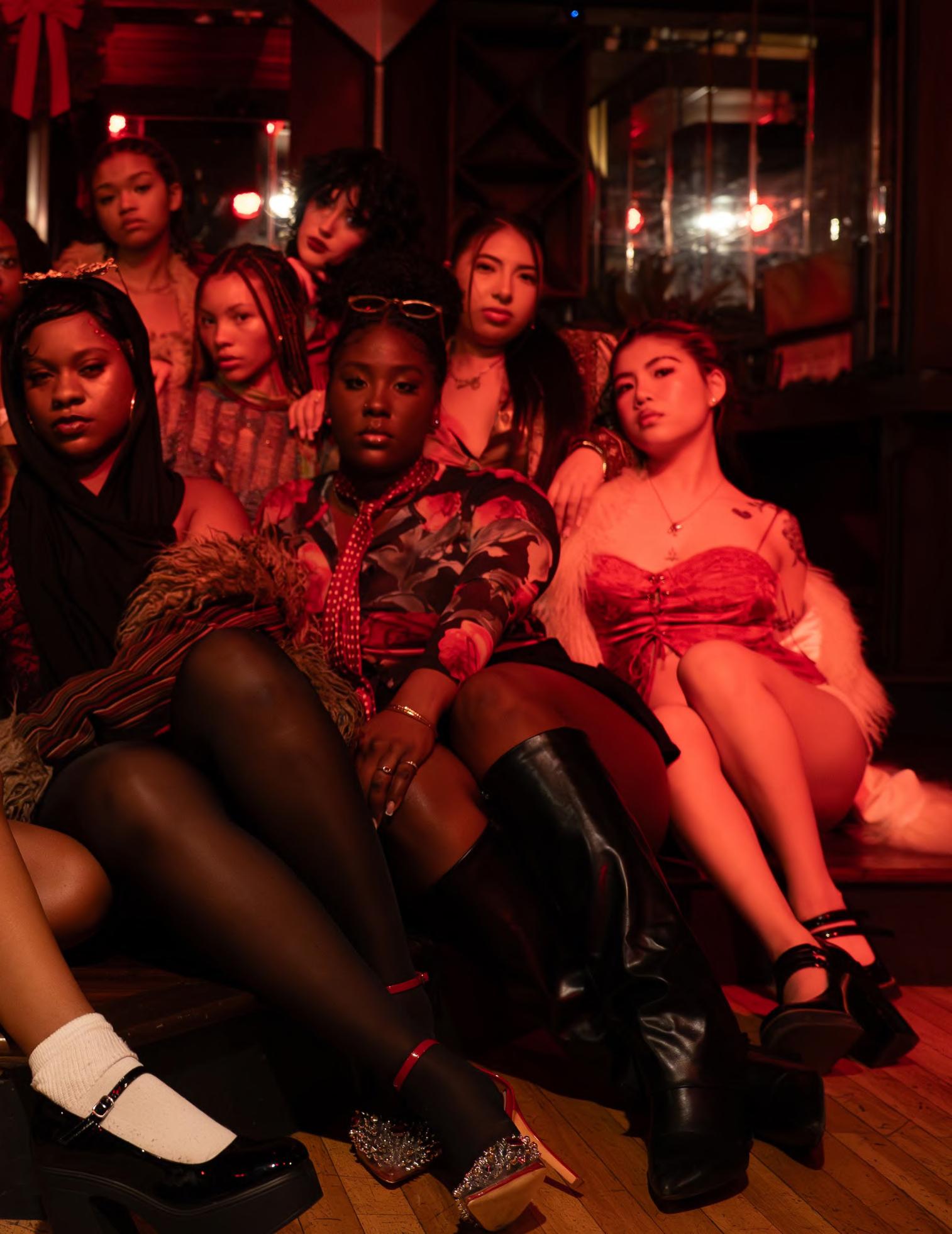
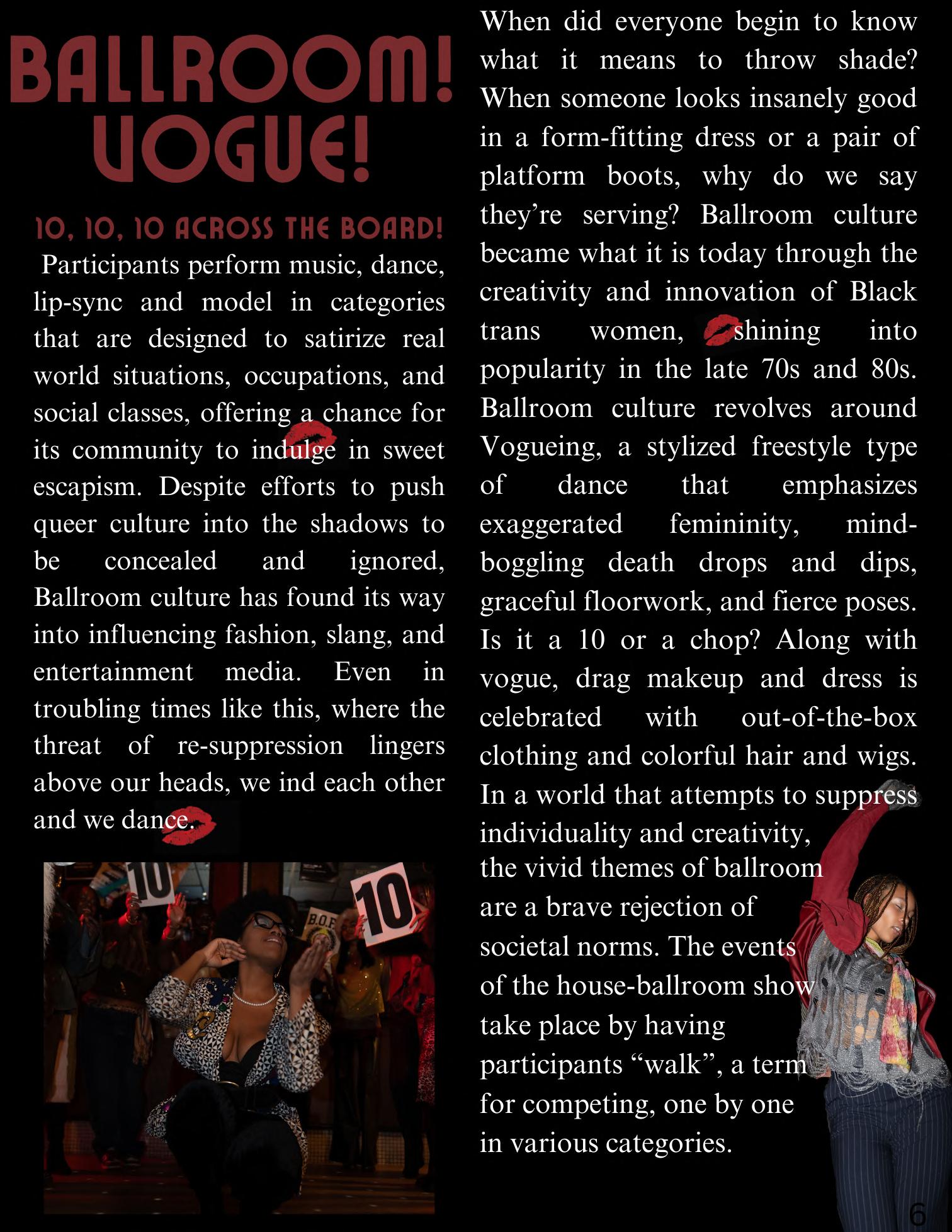
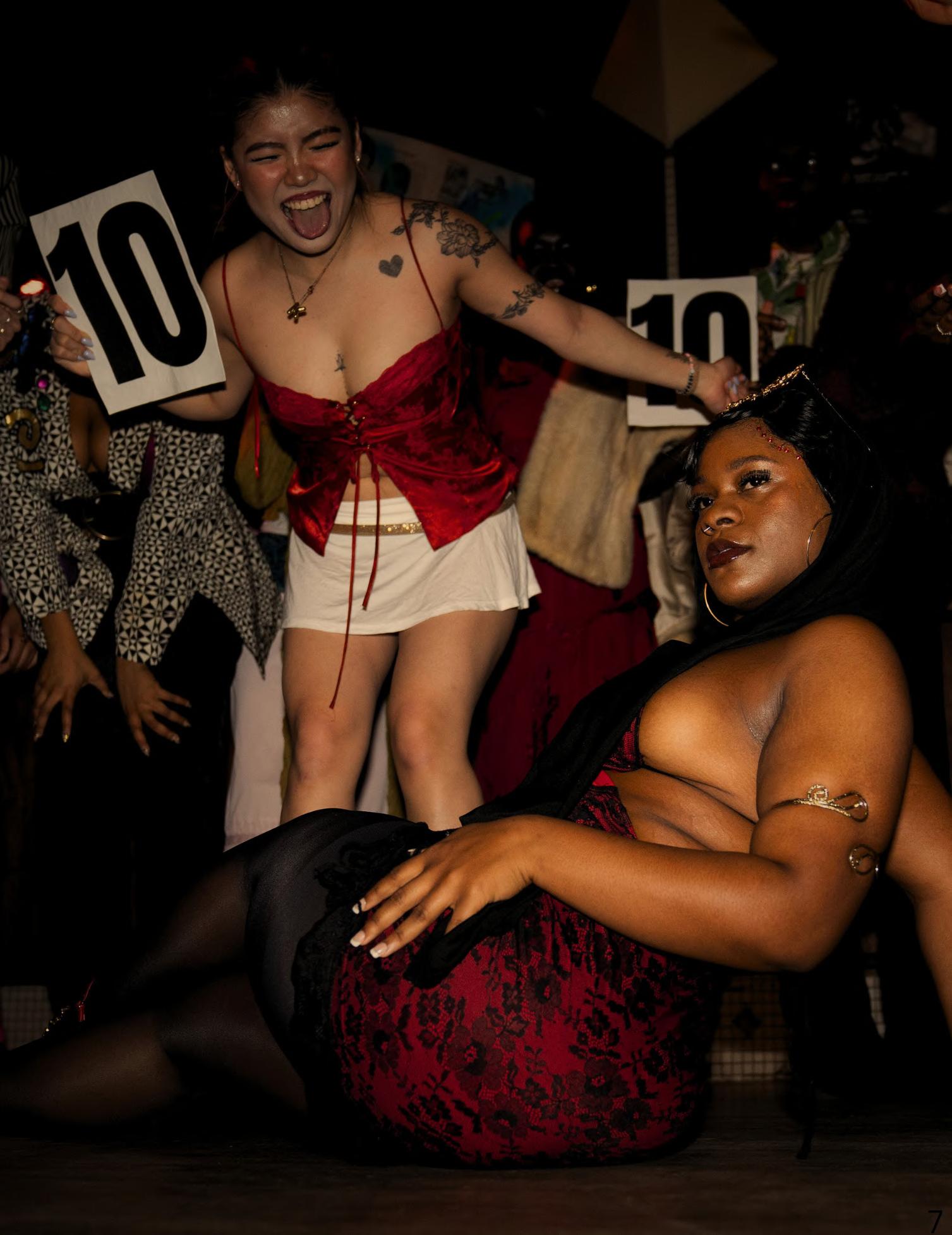
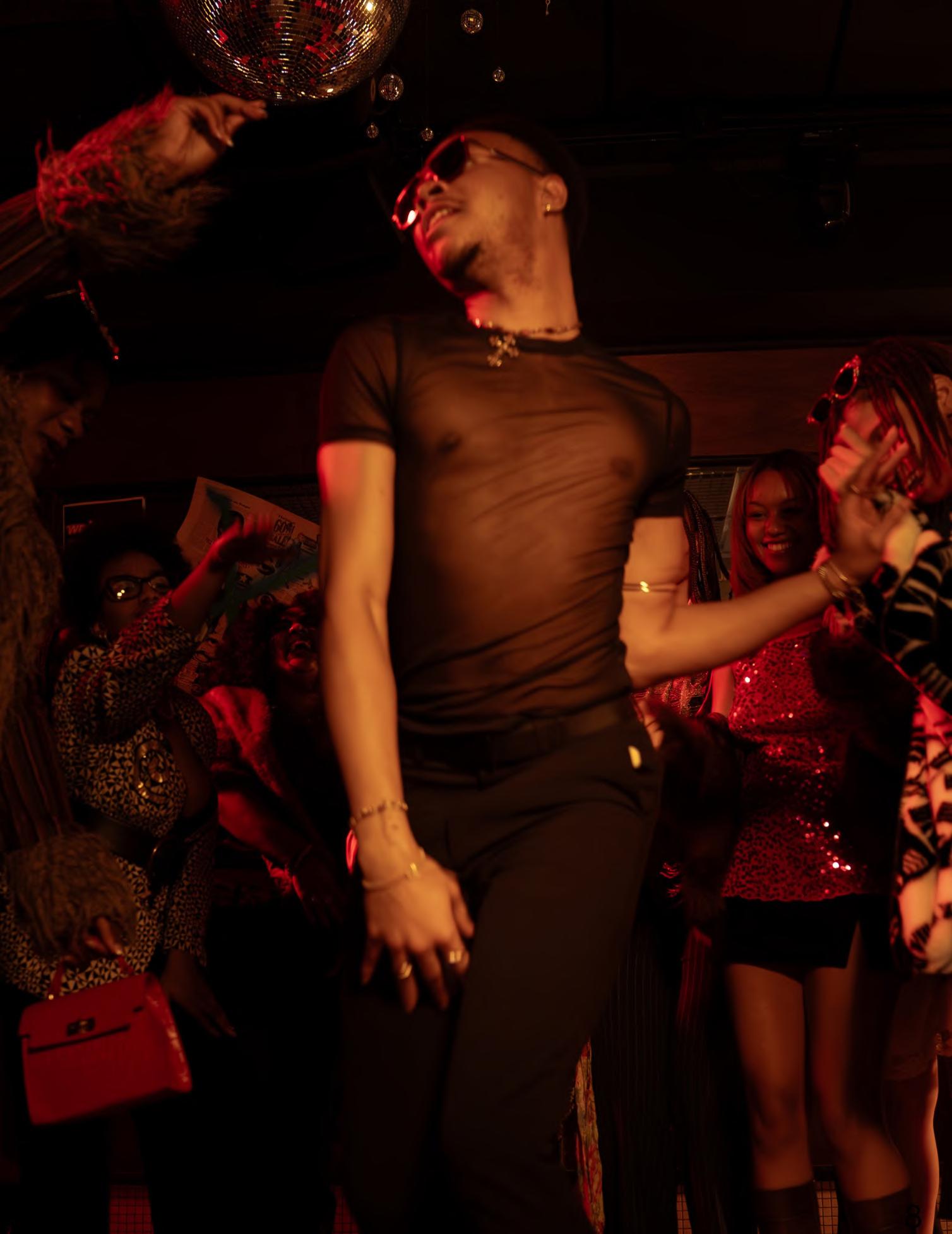
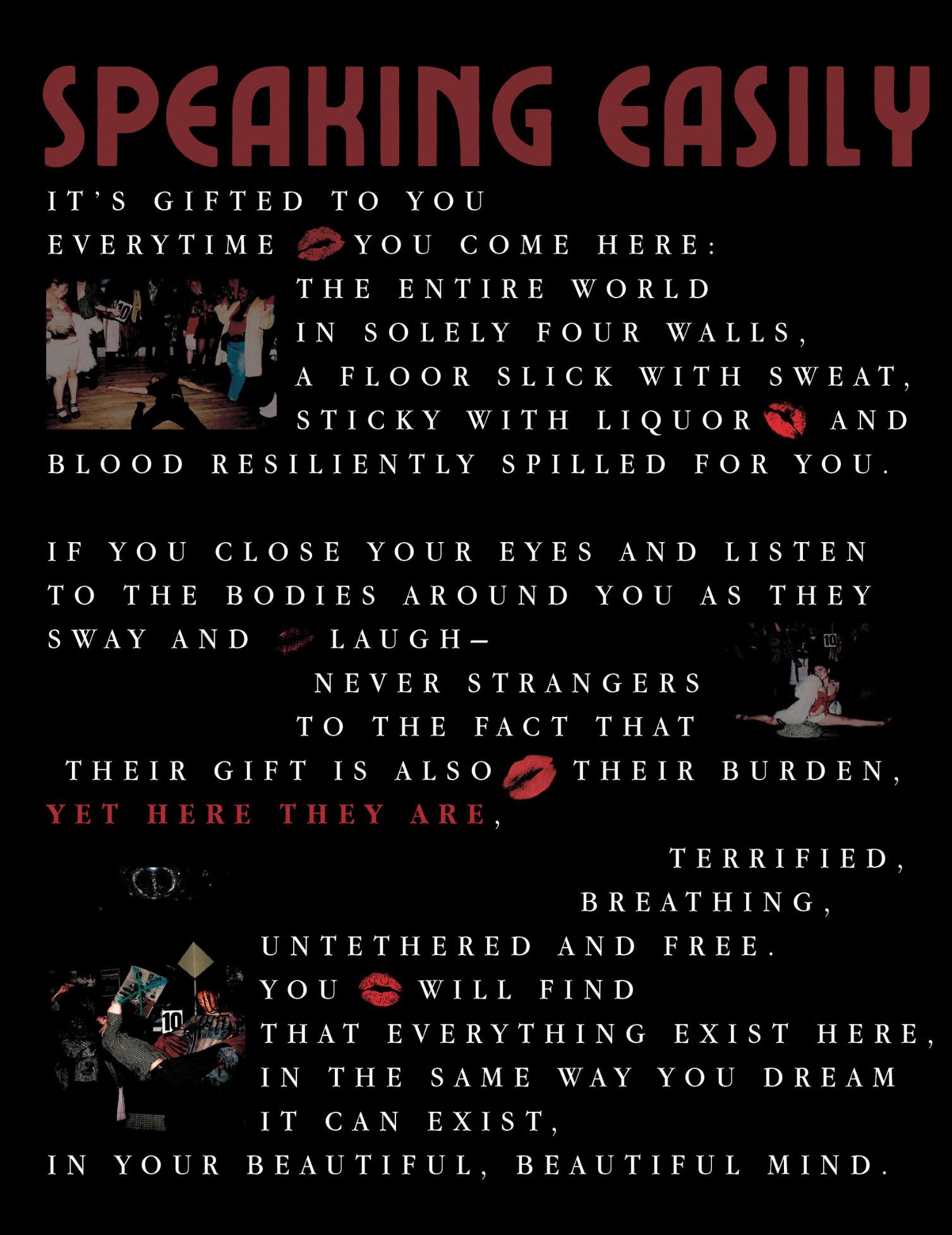
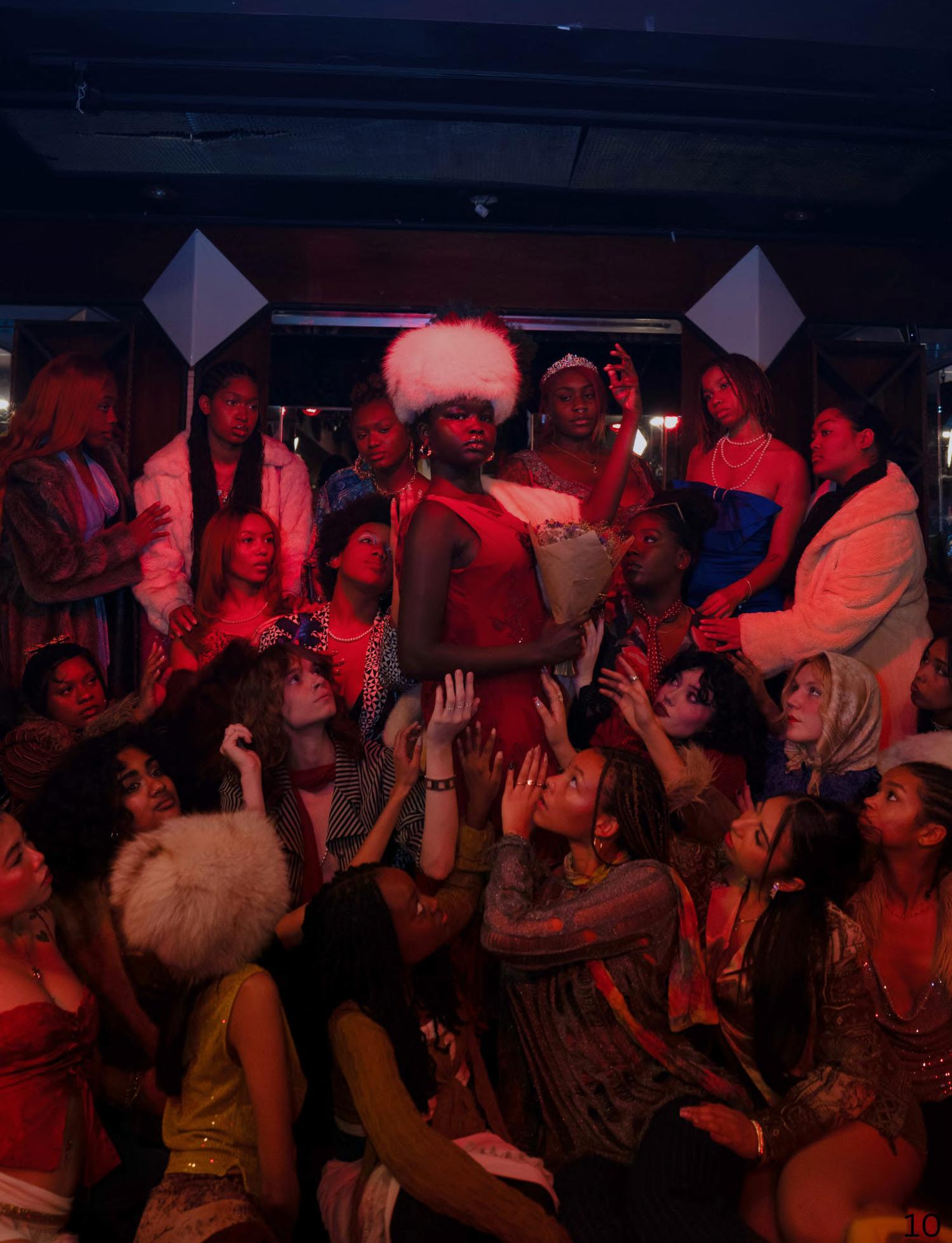
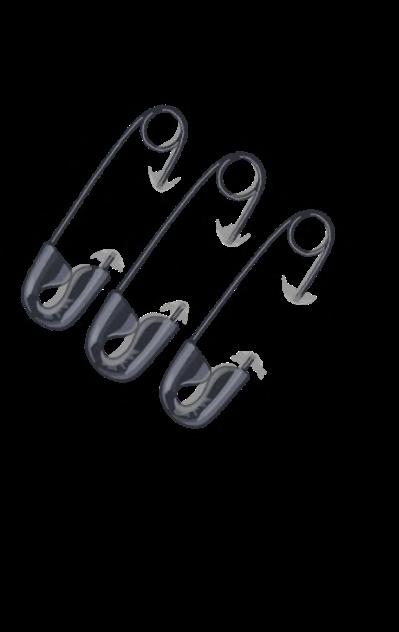
Womanhood’s Toll on Body Modifications
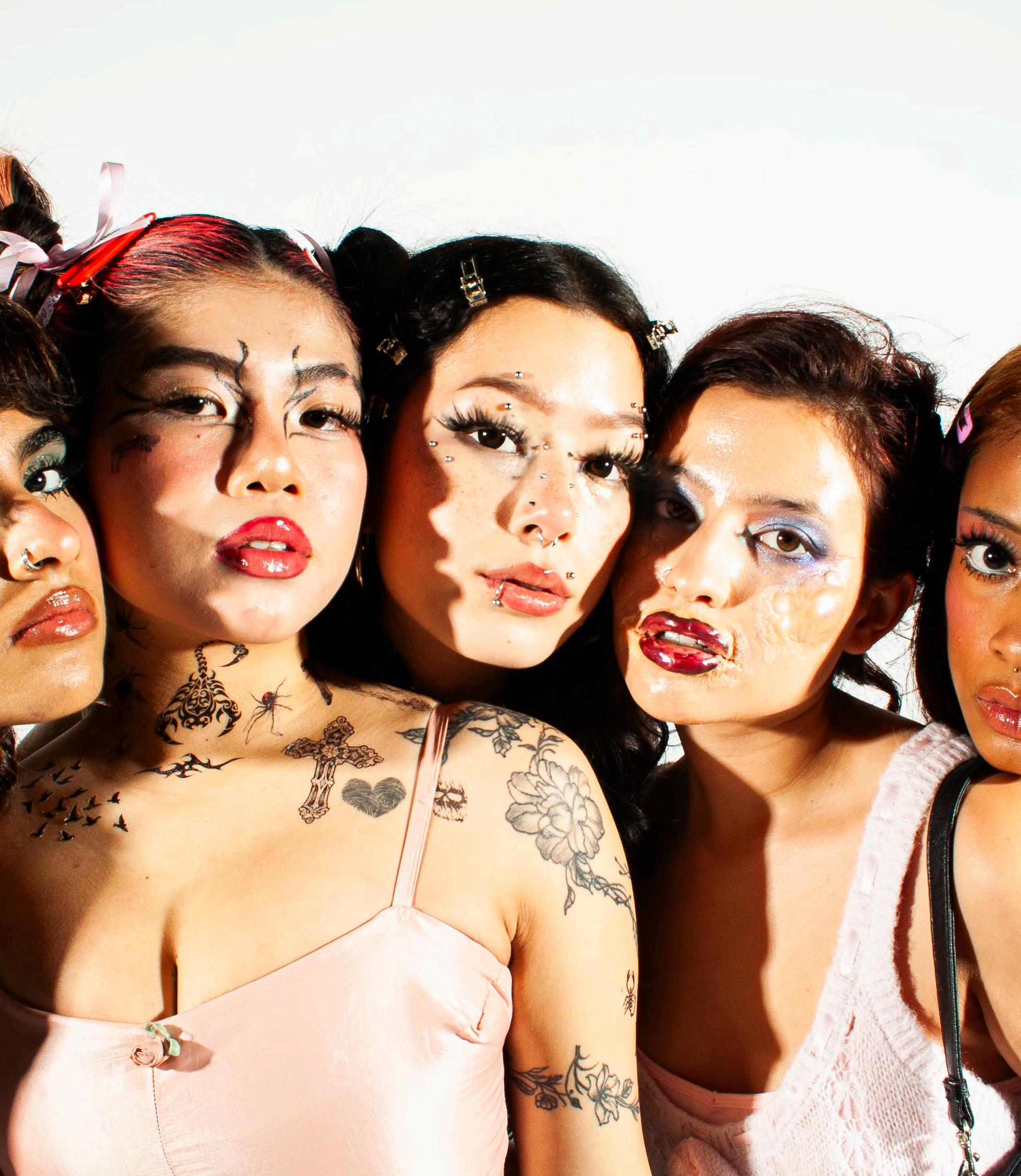
The Bodies’ Role in Perspective
Used for likes and pleasure my body is no longer mine. used to uphold standards while a slim waist, while maintaining an acceptable weight.
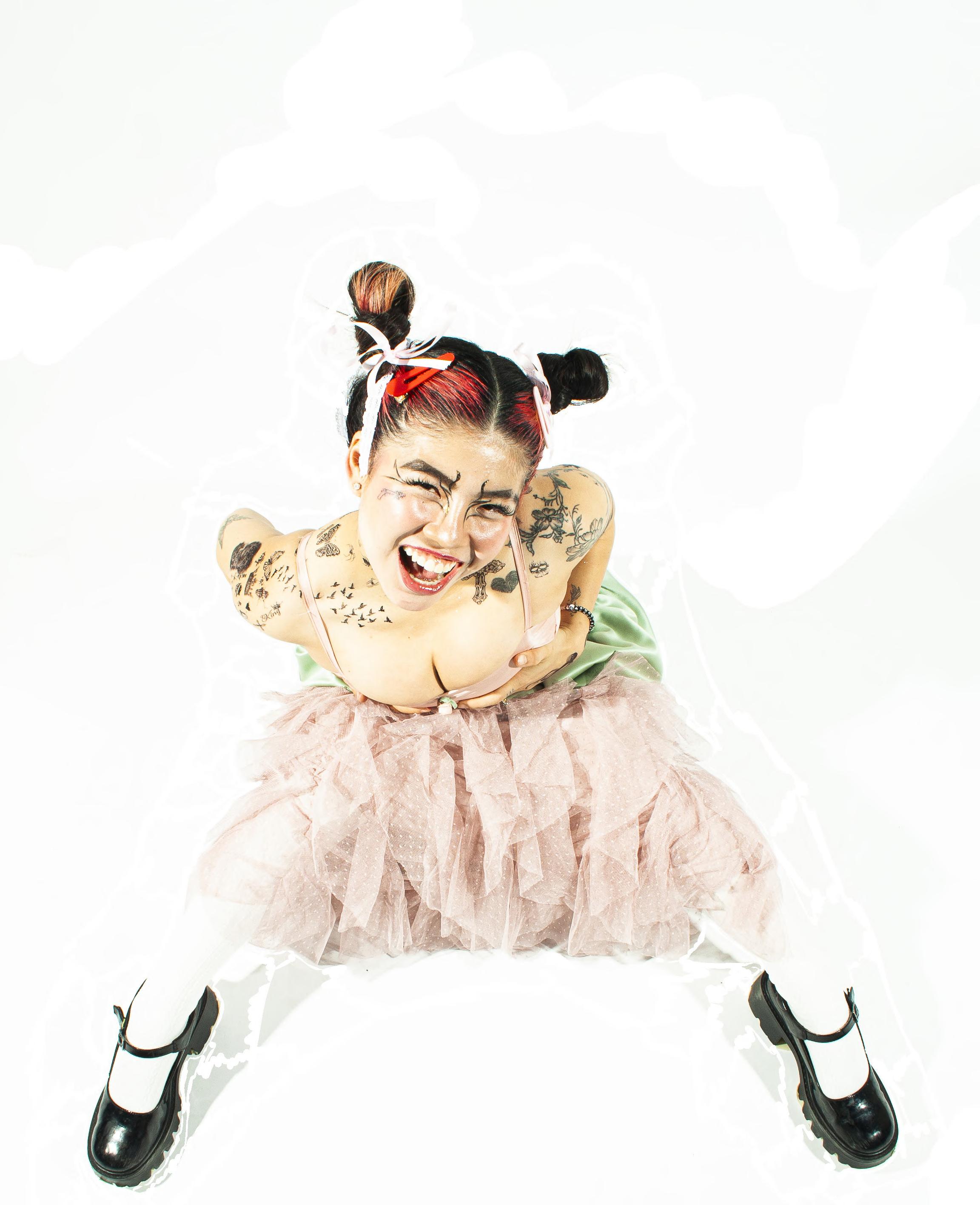
My Body is a Vessel
Michelle Drane
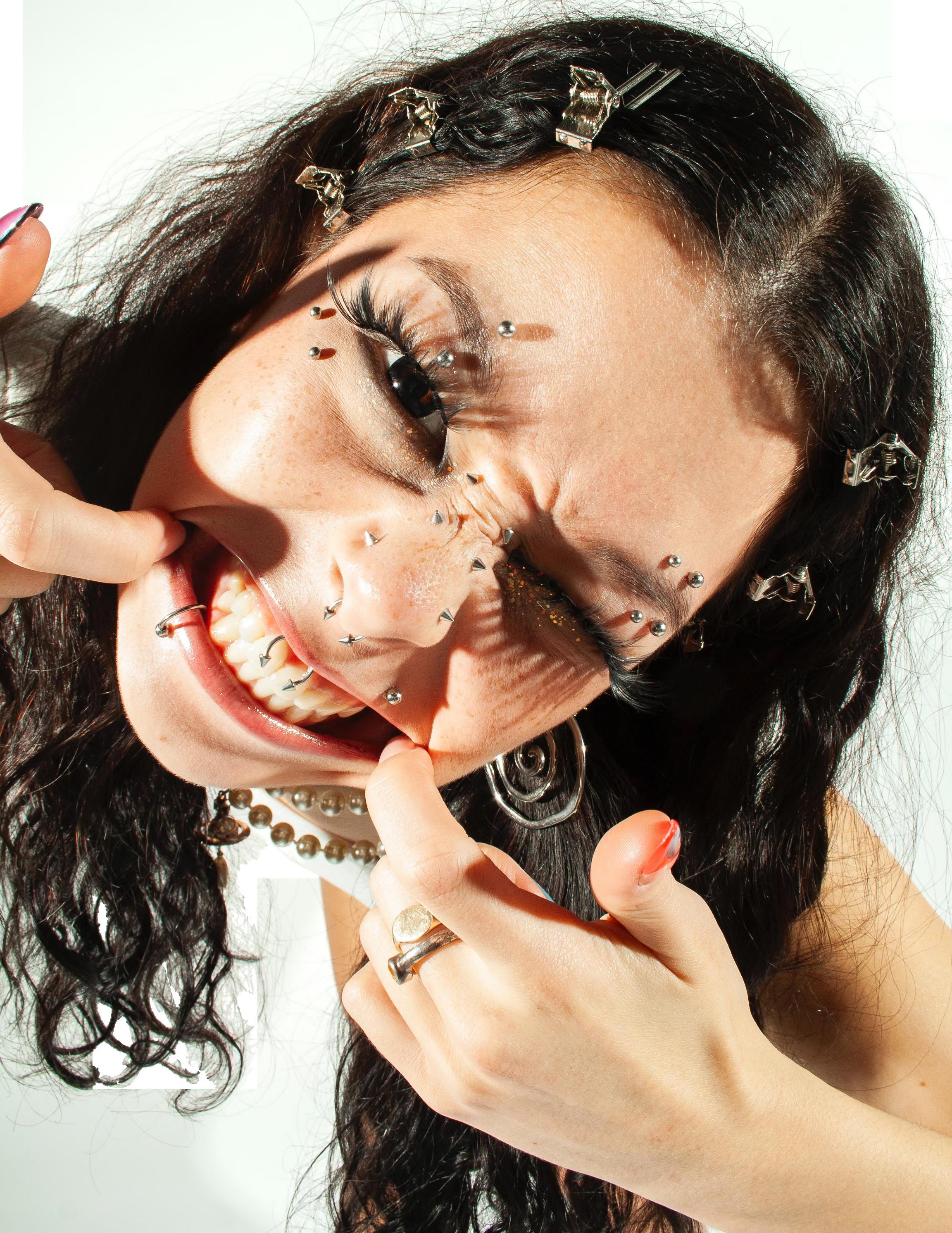
Perscribed Personhood
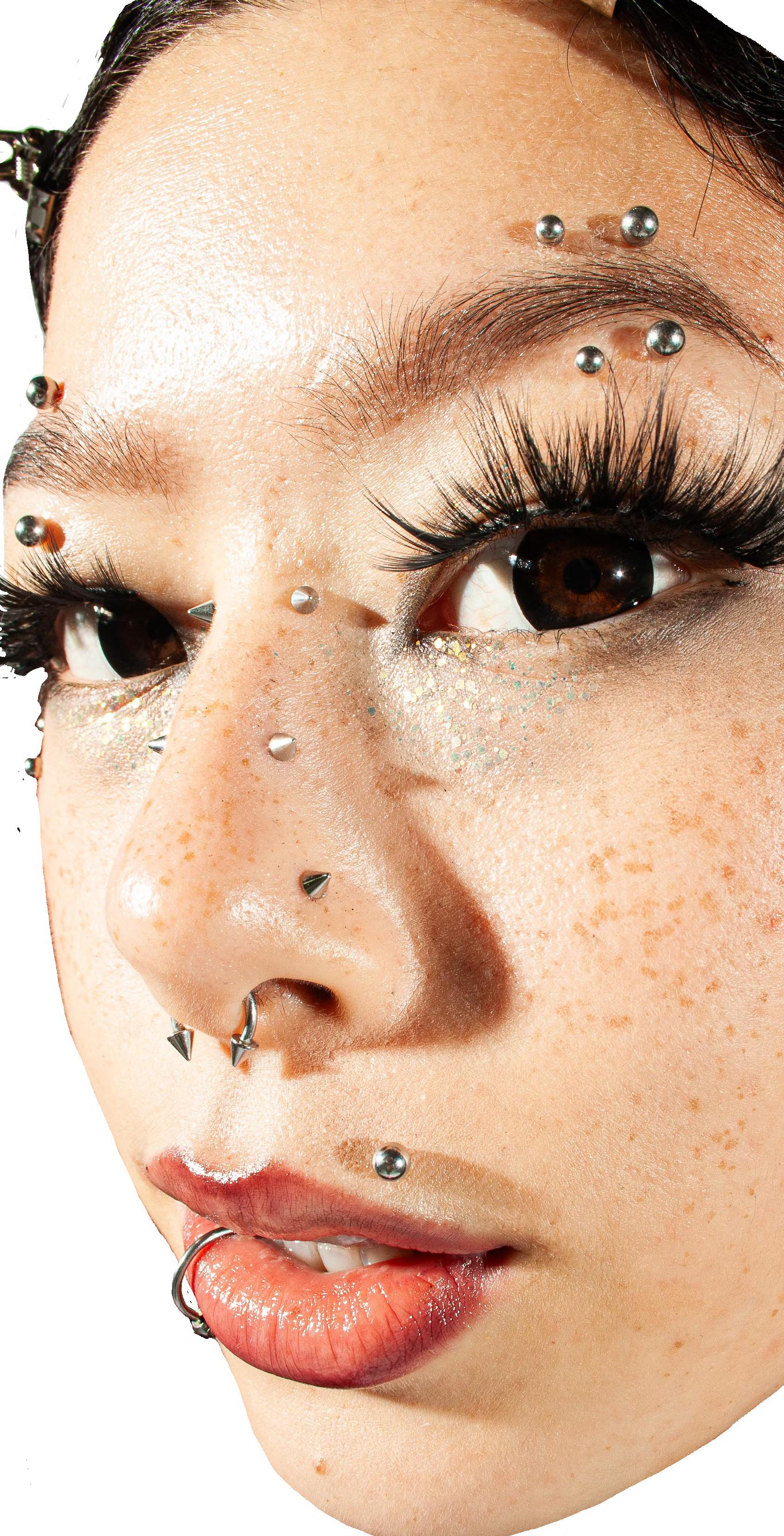

Womanhood begins with wavering faith with emotions
“socially produced, circulated, and received,” not my own made to be mine by exchanging my body. to understand womanhood, I bury my childhood.
my grandma always had bushes of bleeding hearts in her backyard–bury it all in a heart-shaped box. Genesis Amnesia–forgetting where you came from forgetting all the living I had already done what is natural belongs with nature with earth and sky under a bleeding heart bush, so I spend my allowance on drugstore makeup and measure the length of skirts and straightened hair, changing what is natural for what is expected, exchanging childhood for womanhood, hesitantly welcoming the world as I bury mine
Lost Poem Lilly Eggers
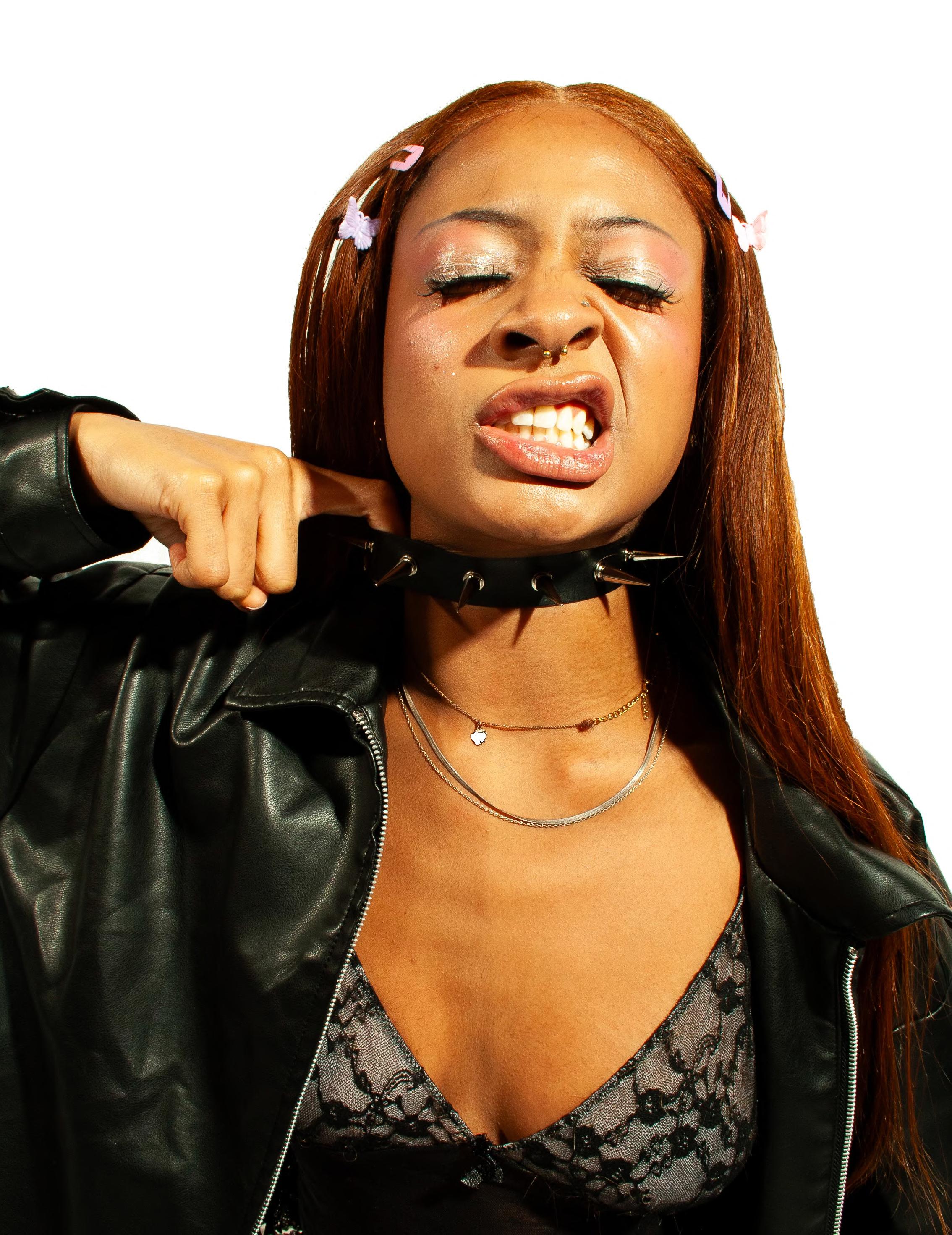
Black Bodies on Display
Painted with patience, lingering streaks of passion with pigments saturated in love. melaninated rays beaming from the sun
Behold this glorious painting. blinding everyone standing in its sight.
my paint brush soaked in history every stroke, intentional, strategically placing every beauty mark.
my body is art covered in tattoos and piercings signaling codes of identity. my luscious hair representing centuries of culture and heritage. finding portraits of my ancestors, gazing at their beauty and essence seeing those same features reflected in myself.
flaunting my vibrant colors, brightening this dim society filled with hate
showing them how love overthrows this reality.
finally reclaiming what’s rightfully mine. my body and soul radiates with beauty. Now I have the power to paint with love reminding those no matter the canvas, every aspect of it is valued courtesy of your Designer.
My Body is a Canvas Michelle Drane
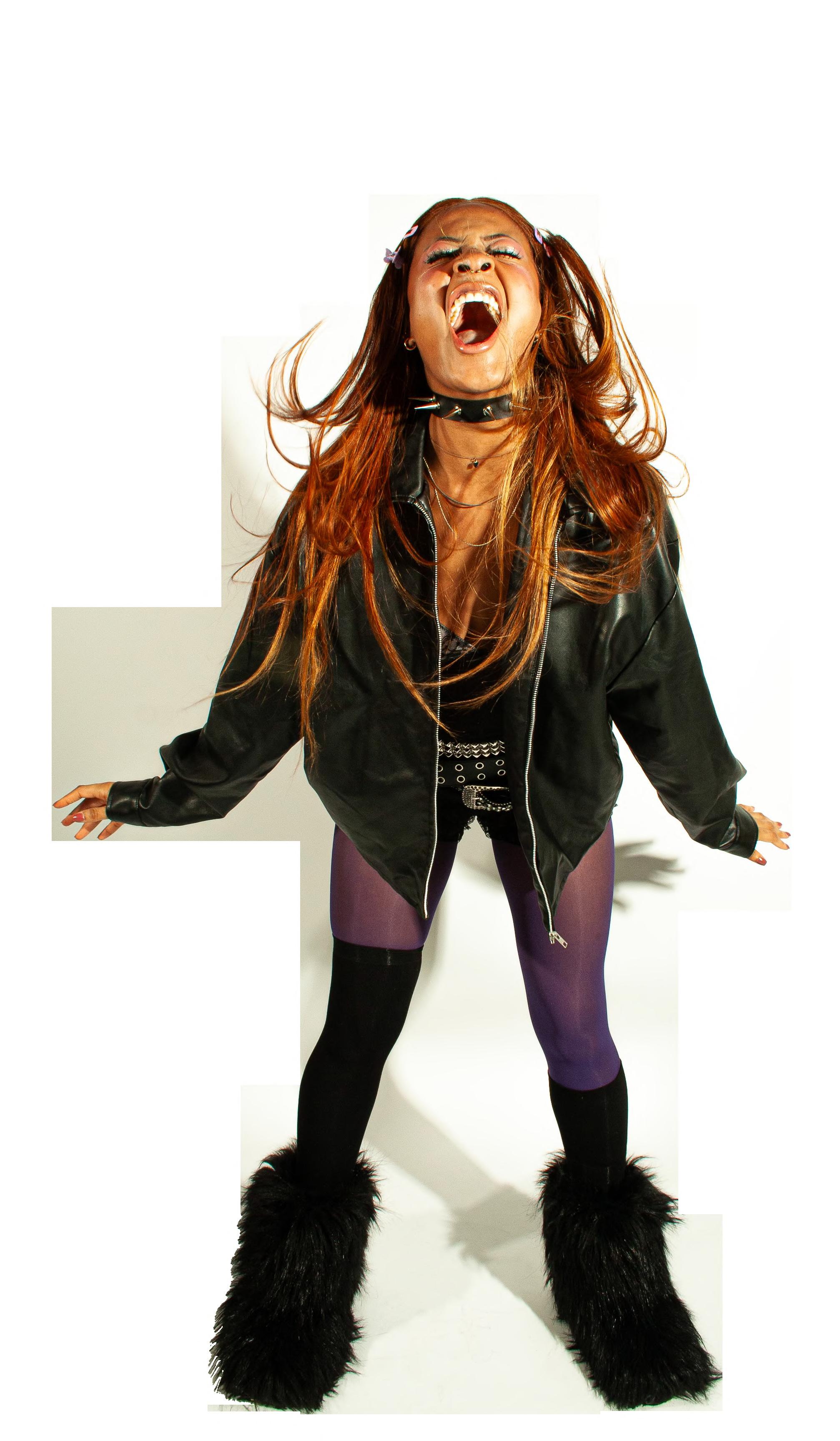
Iam 20 and I am growing into my body which is growing into the world, yet I cannot grow into the world without excavating the empire I had buried. Buried too hastily, ignoring my hesitancy, disregarding the harm.
Now I set intentions. I write letters to my younger self, carefully dating them to when she learned to read. I would beg forgiveness, and she would understand–everything besides the piercings she disavowed at 6 but loves at 20. Her approval is the only approval I seek, and I seek to return to the earth and sky and childhood. A bleeding heart tattooed across my collarbone, to remember the process of coming into and creating.
To understand womanhood, I return to childhood. I create a mantra: love me infinitely as I am and as I was. We remember infinity–counting to it on the playground with our childhood best friends.
Found Poem Lilly Eggers
Self Resurrection
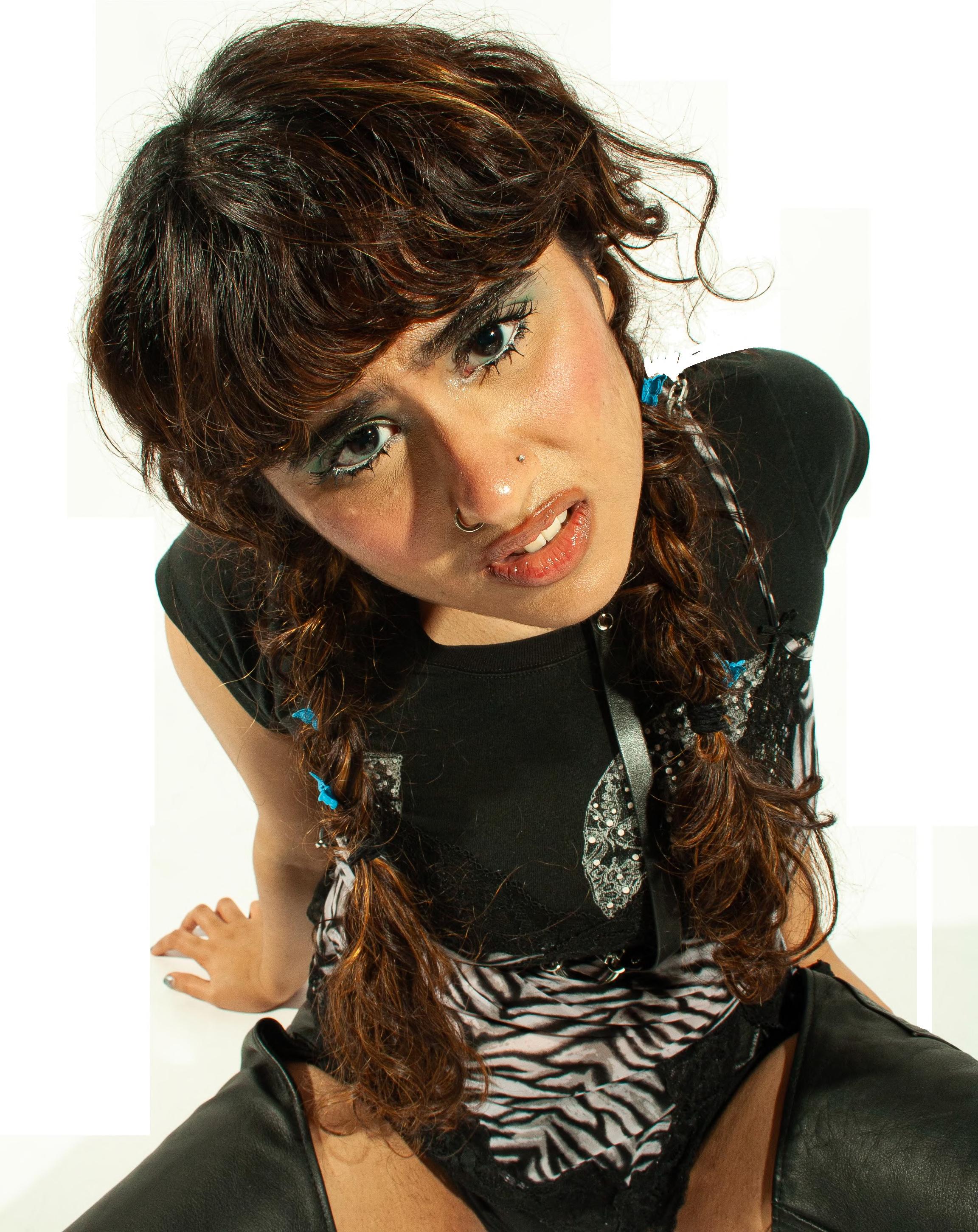
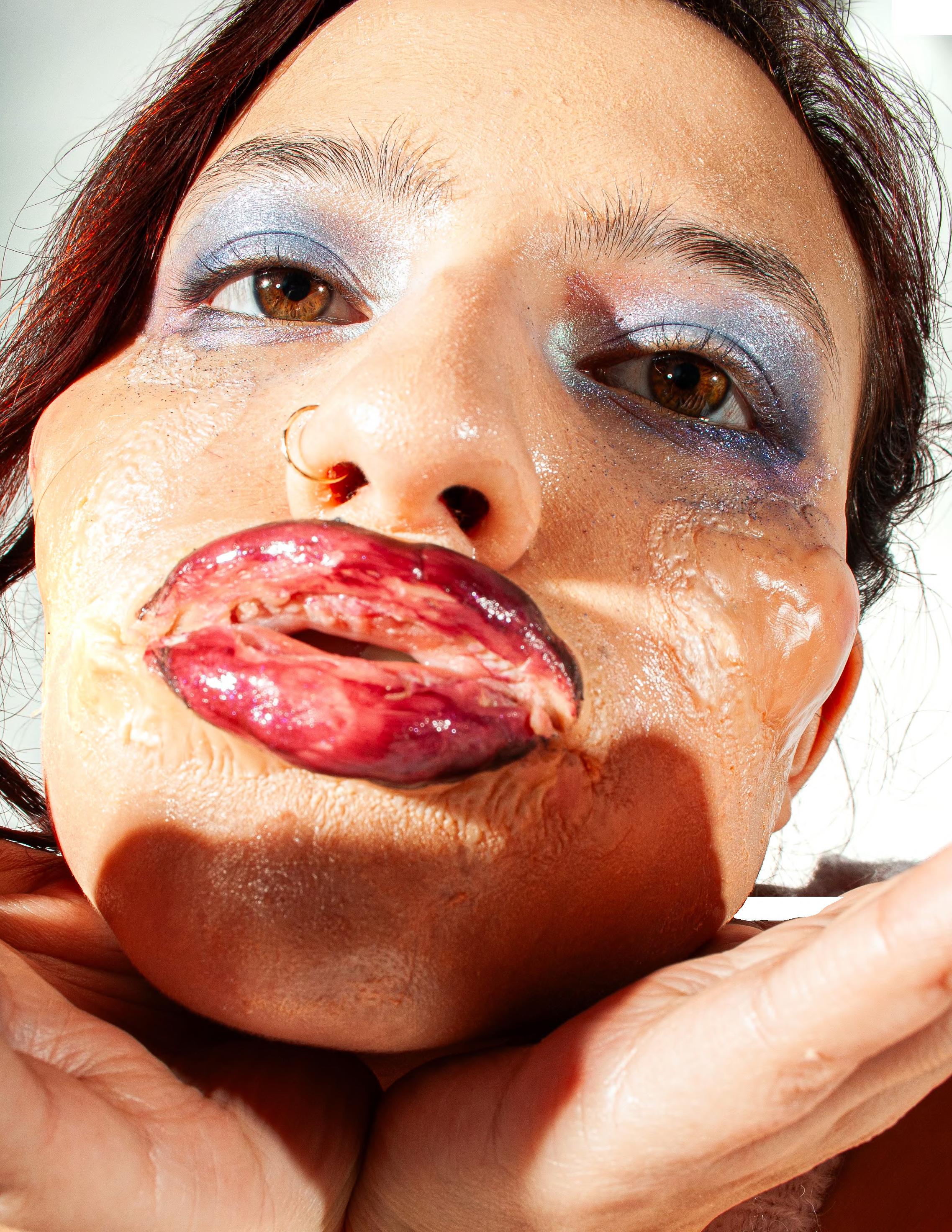
Your Own Worst Critique
From Littlest Pet Shops to Drunk Elephants Over Thanksgiving, my Aunt shared my 9-year-old cousin’s Christmas list. In the shaky handwriting of a child, she listed “pink satin pajama set, Drunk Elephant this, Summer Friday that, Elf something, Sol De Janeiro whatever, and slime”. I have a hard time recalling the exact products; I only know the brands and the sad addition of “slime” at the end, the one object with some semblance of childhood innocence. While I was aware that younger girls often want to act older, I didn’t realize this process was starting at 9 and even younger. Little girls who should be worrying about Littlest Pet Shops are worrying about Drunk Elephant serums, representing an alarming development in the history of girlhood.
It doesn’t take a historian to describe the pressures that girls and women face in patriarchal societies. These expectations have always been high and often damaging to their sense of self. The demands of our society linger in the background of girlhood, waiting to shatter the innocence of the girl and shape her into the ‘perfect’ woman. In recent years, there has been a sense of fighting back against these expectations, namely through body positivity movements and an emphasis on support for girls. However, the rise of the internet, especially internet usage among children, is threatening these positive attitudes and replacing them with the same stale expectations, except they have a new intensity. Early on, girls see what they are ‘supposed to look like’, and targeted ads and marketing campaigns give them the alleged means to reach this standard. These harmful standards go hand-inhand with consumer culture, and clothing and cosmetics companies support both. These girls go to make-up stores to buy the products they see online–through ads and promoted by their favorite influencers. These girls, who can barely see over the display shelves at Sephora, are funding this business–and it
should be alarming and enraging. Many young girls, if not all, can recall the exact moments when they became aware of what they were ‘supposed to look like or act like’. Many young girls have moments where they betray their sense of self to reach these standards, and this leaves a mark on their souls as well as their bodies. As these girls grow into young women, there can be a sense of loss or bewilderment as they lose their footing with each changing standard. In response, many young women return to the aspects of their childhood that offered them insights into their identity. Maybe it’s rewearing their favorite colors, resurrecting their stuffed animals, or remodeling outfits their 5-year-old self loved. These young women have a childhood to return to, but what can be said for the young girls now, who start remodeling, reshaping, and redirecting themselves at such a young age? What will they return to? These make-up products or trending styles offer no insight into the unique universe of a young girl, a world she has been developing since she was born. As ads and beauty standards continue to lower their minimum age, there is a risk of destroying any development of girlhood on its own. Not only would this be a loss to the girl, but it would be a loss to all.
Critique Lilly Eggers
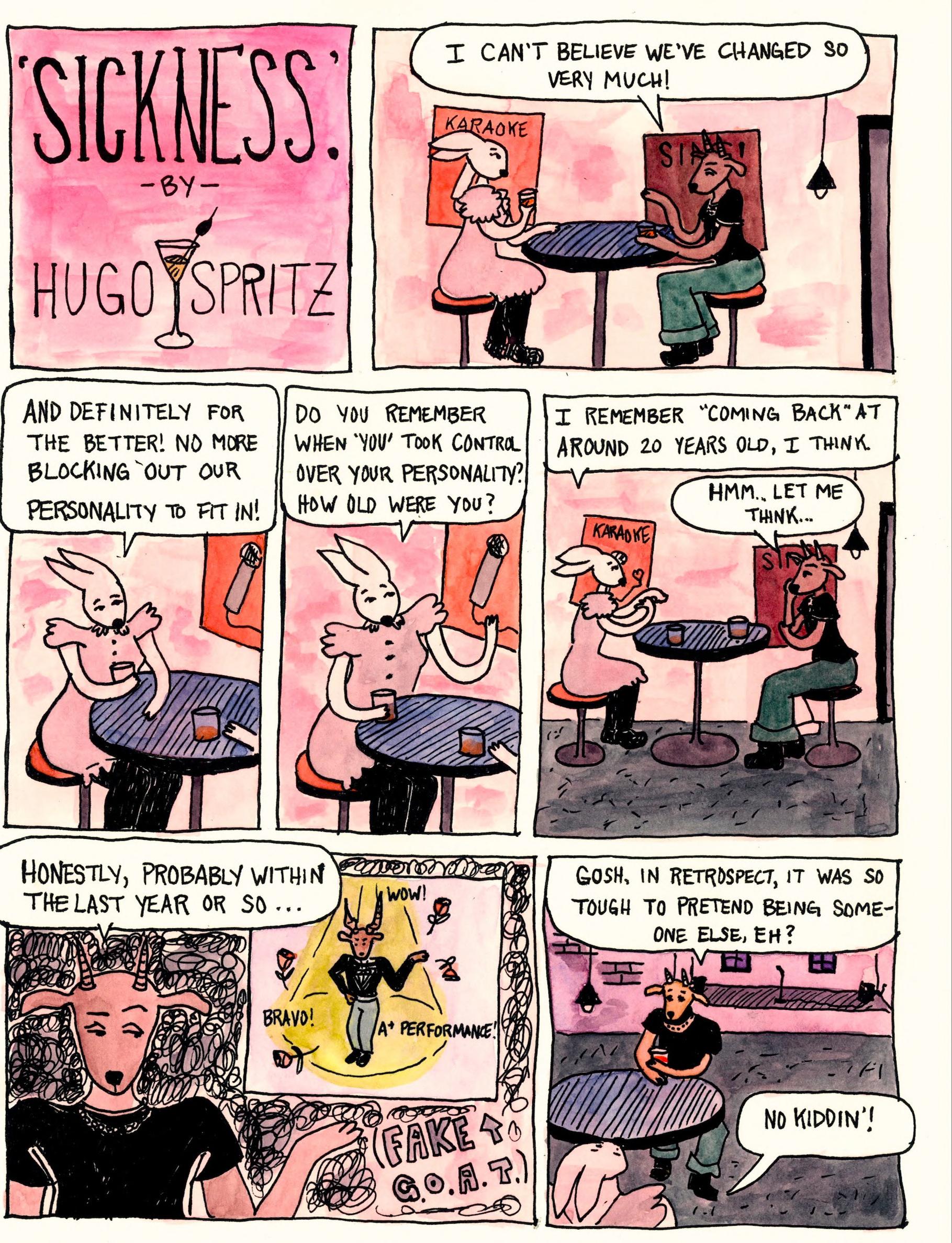
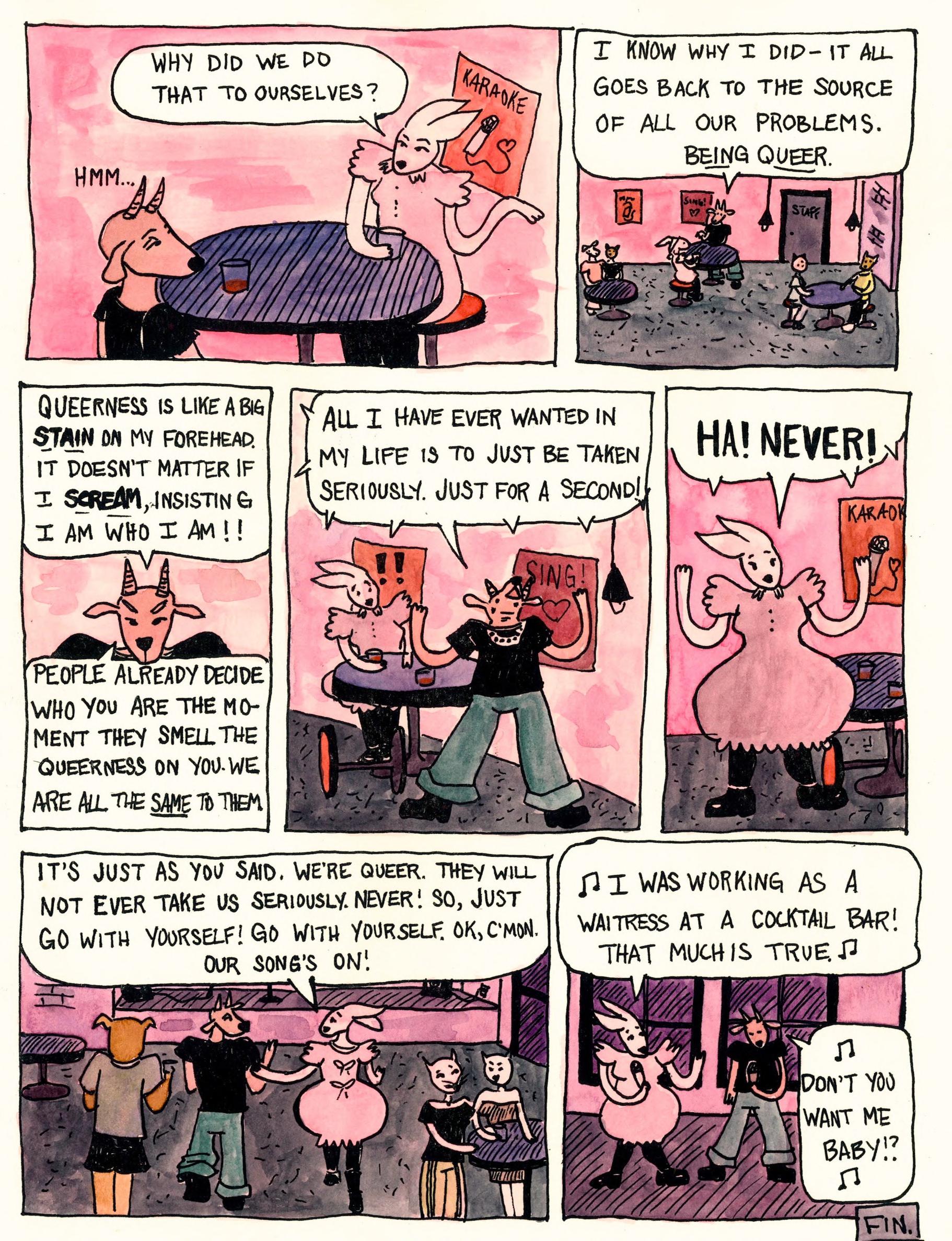
crYOnics
FREEZE TIME, EMBRACE FOREVER
Consider a world where death isn’t the end, but possibly a new beginning! Simply a cold pause between the now and waking up in an unknown, new timeline. Although this may sound far-fetched, this idea—cryonics—is being pursued today by those who believe the lines separating life and death aren’t as sharp as they appear. But as we come closer to making this reality, can we do so without challenging the ethics of what it means to let go?
Derived from the Greek word kyros, meaning cold, cryonics is the idea of preserving the human body at extremely low temperatures in order to halt decay. The goal is to preserve the body, or just the head for a discounted price, until science and technology advances enough to revive them.
While the concept of cryonics is currently hypothetical, the process would, in theory, look like this: after legal death is declared, the body is rapidly cooled to prevent cellular damage. Chemical solutions designed to prevent ice crystals, called Cryoprotectants, would replace bodily fluids to protect body tissue during freezing. Once prepared, the body is placed in liquid nitrogen storage at temperatures around -196 C, where it will remain as long as needed.
While cryogenics—the general study of preserving biological matter at low temperatures—is widely used in fields such as food preservation, fertility treatments, and organ transplants, the
application to whole-body preservation and revival remains an unproven territory. Will freezing the body be enough to retain the soul?
Currently, the field of cryogenics has both scientific promise and limitations. Companies such as the Cryonics Institute and the Alcor Life Extension foundation already offer cryopreservation services. Despite this, today’s technology cannot revive a human who has been cryopreserved. The freezing process, which can effectively halt decay, can also cause cellular damage, with no currently proven method to reverse this.
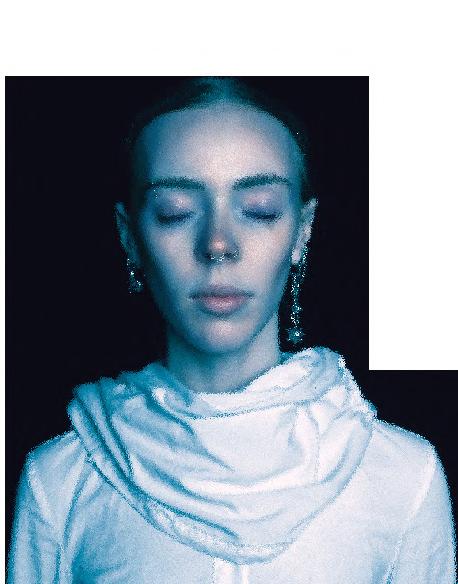
Research has shown promise in fields like medicine and agriculture. Scientists are currently working on ways to freeze organs for transplants, something that would revolutionize organ donation by eliminating time constraints. Similarly, advances in vitrification—a method of freezing without forming ice crystals— have brought researchers closer to solving the issue of cell damage. In the future, an individual diagnosed with a terminal illness may choose to be preserved, waiting for a future when cures are discovered and revival is possible.
As science and technology advances, and the idea of cryonics becomes closer to reality, we must ask ourselves: not just can we conquer death, but should we? Our answer to this will shape not only the future of cryonics, but the very nature of how we define life itself.
crYOnics
join us
skip death now

Alcor, or the Alcor Life Extension Foundation, is a nonprofit organization that specializes in cryonics located in Scottsdale, Arizona. This location was chosen for its future stability, away from natural disasters such as forest fires, earthquakes, or floods. It is also located adjacent to an international and private airport: this plays a vital role in receiving and preserving the body as quickly after death as possible.
Alcor currently has 1,443 members and 243 patients preserved on the premises. Matheryn Naovaratpong is the youngest patient, preserved at only two years old after passing from brain cancer. Her parents hope she will one day have another chance at life.

The cost of cryopreservation services is $200,000 for whole-body cryopreservation and $80,000 for neuro cryopreservation, or just the head. The idea is that future technology would be capable of rebuilding some sort of body or container as long as the brain is preserved.
Affording this treatment might seem out of reach for the common man, but naming Alcor as the beneficiary on life insurance policies can cover the costs postpartum. These costs cover the indefinite time period of freezing, but also set aside a large chunk to be returned after a patient is revived. At these price points, $125k or $25k is placed in a Patient Care Trust. While this makes Alcor more expensive than other options, knowing there will be funds to rebuild a new life in an unknown future is a comforting thought.
At Alcor, bodies are stored in large, vacuuminsulated tanks filled with liquid nitrogen at a temperature of -196°C. In these large tanks, four bodies are stored headless and feet-up around the perimeter. This design is to protect the most important aspects of the neurological system from thawing damage in case a loss of power occurs. The heads are stored separately inside a center column that can fit up to five per tank.
As we stand on the edge of scientific possibility, cryogenics invites us to reimagine the boundaries of life and death. It is a testament to humanity’s relentless hope and refusal to accept the finality of an ending. While the road ahead is filled with uncertainty, it is also rich with promise. For some, cryogenics is a leap of faith — a bet on a future where today’s impossibilities become tomorrow’s breakthroughs.
But at its heart, it is an act of love: love for life, for those we cherish, and for the belief that every story, no matter how finite it may seem, deserves the chance for a second chapter.
Credits: Credits: Rio Sokup, Oliver Braaten, Daniela Orozco, Daniela Senanayake, and Pierce Schlesinger

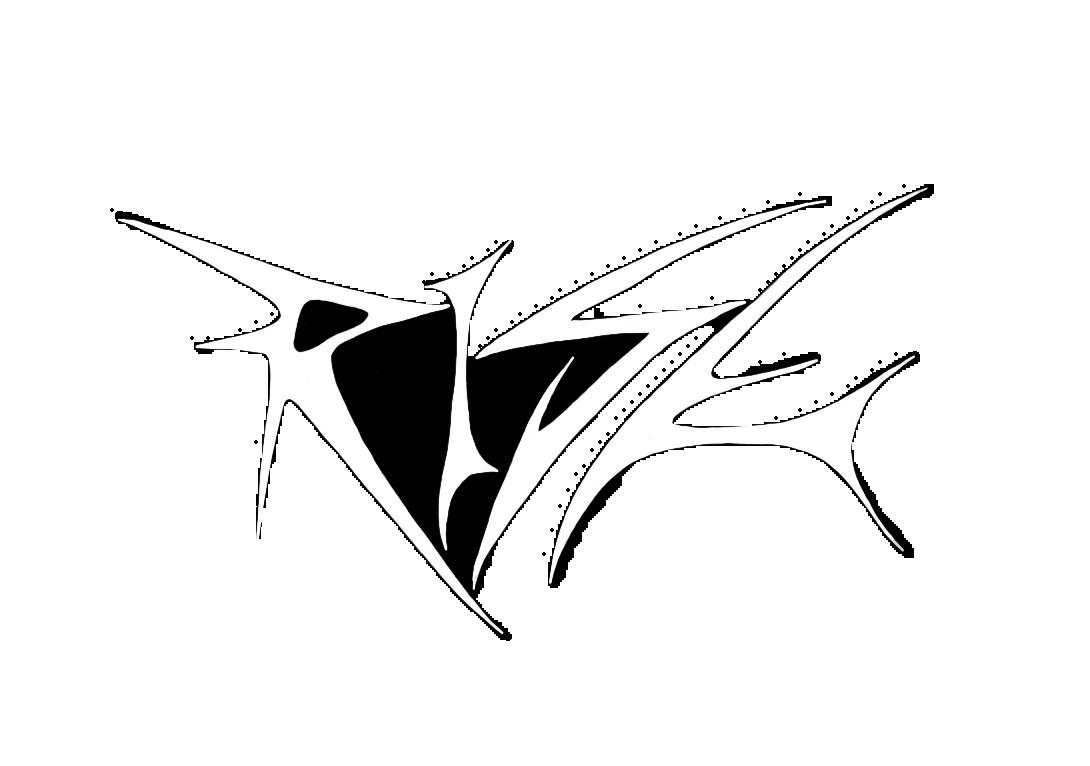

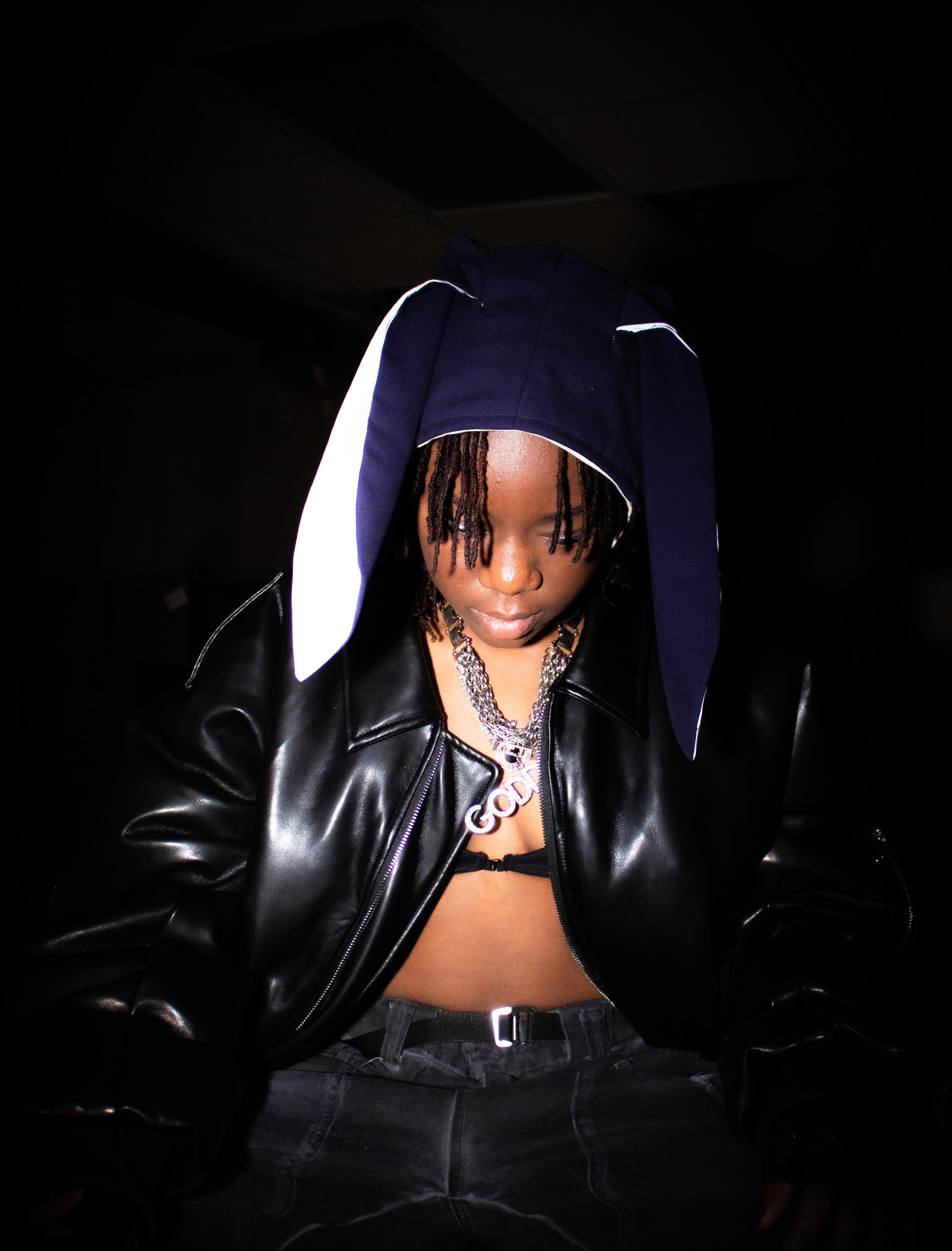
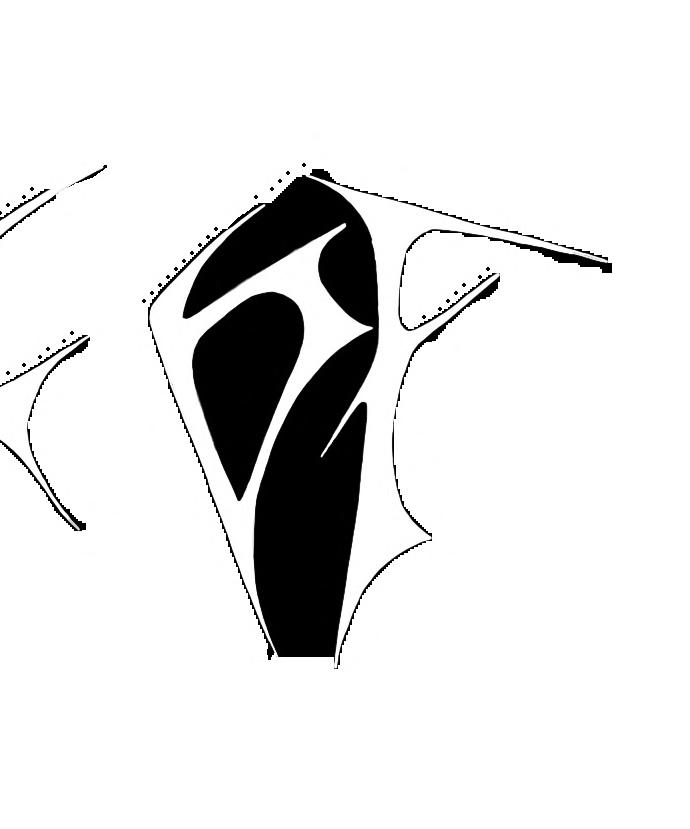
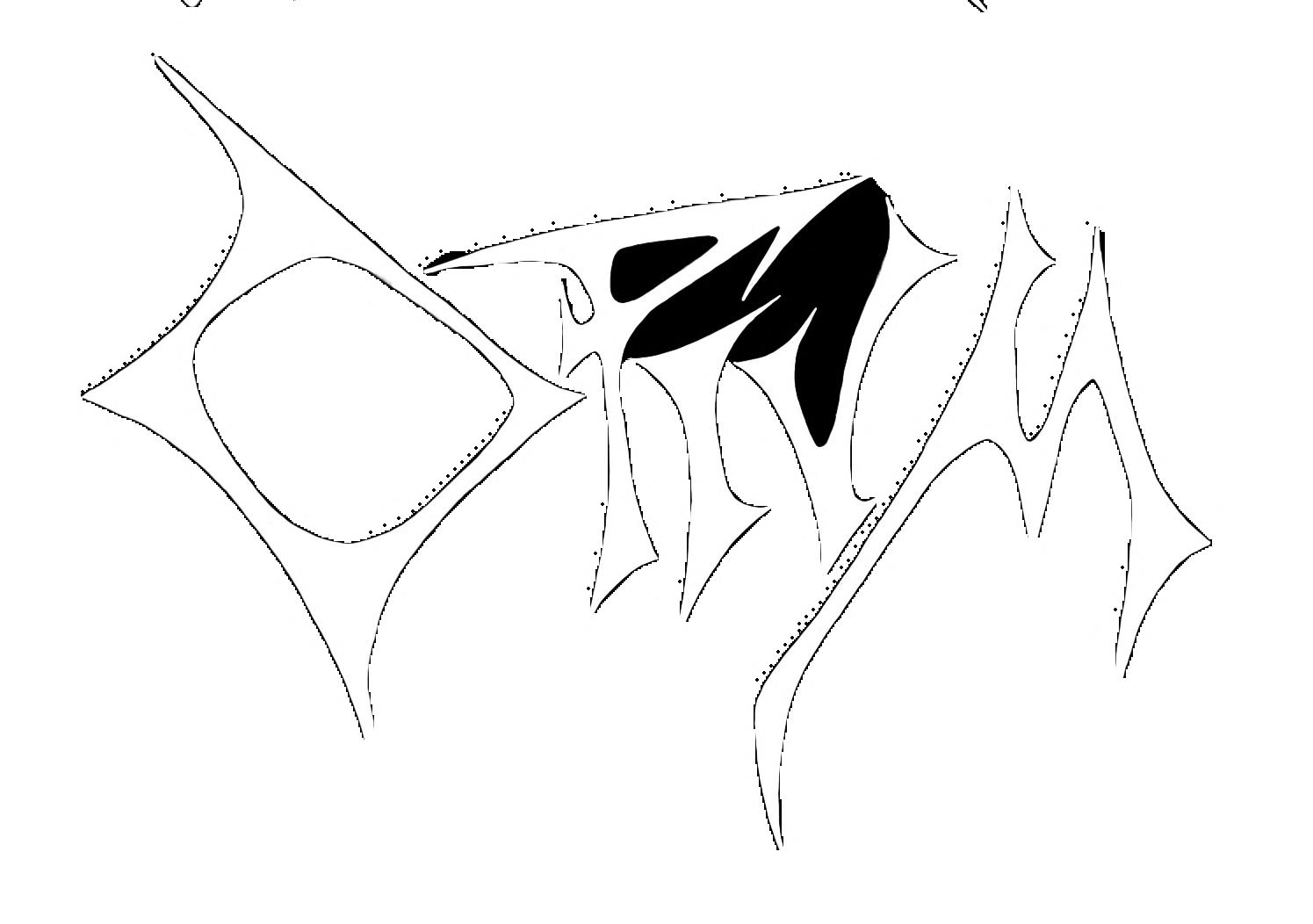
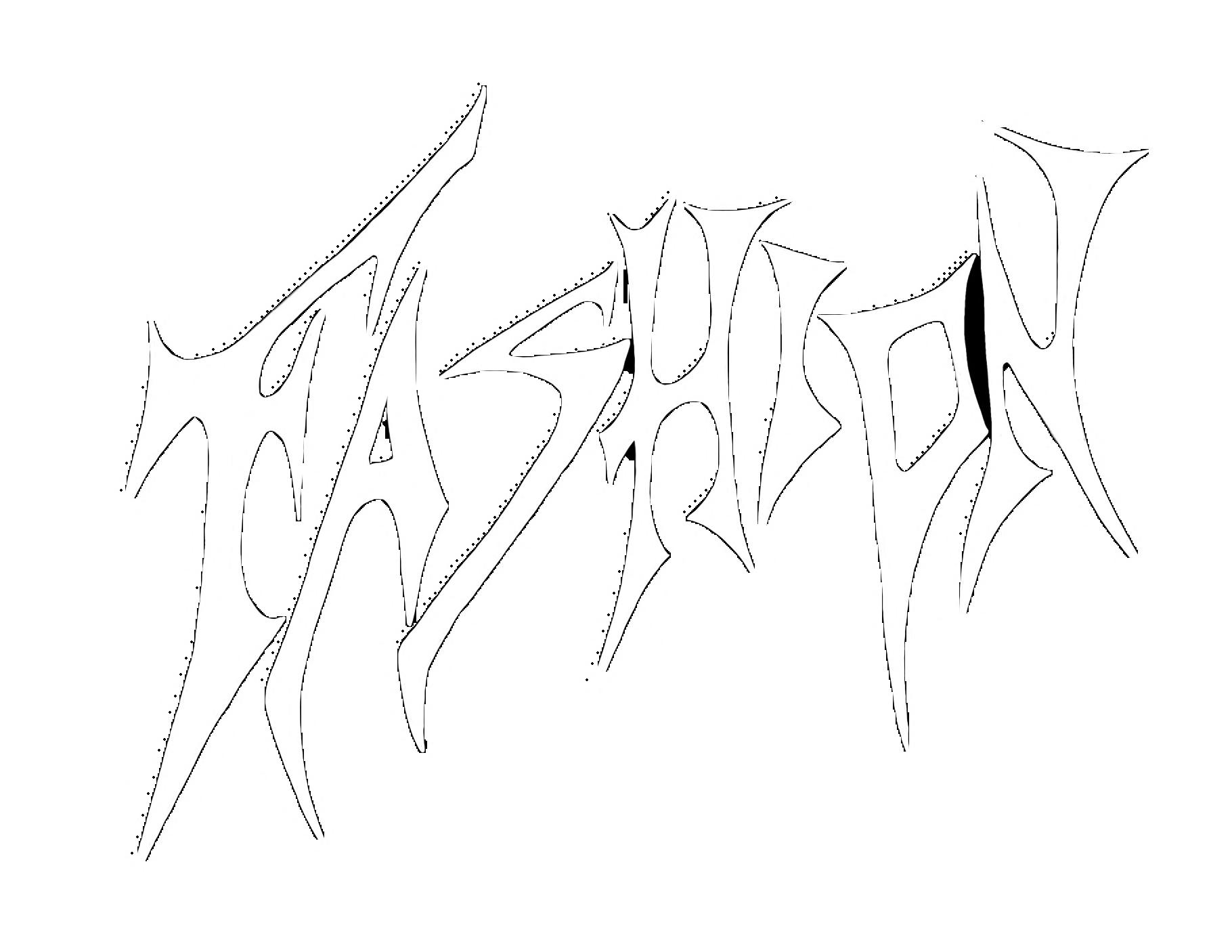
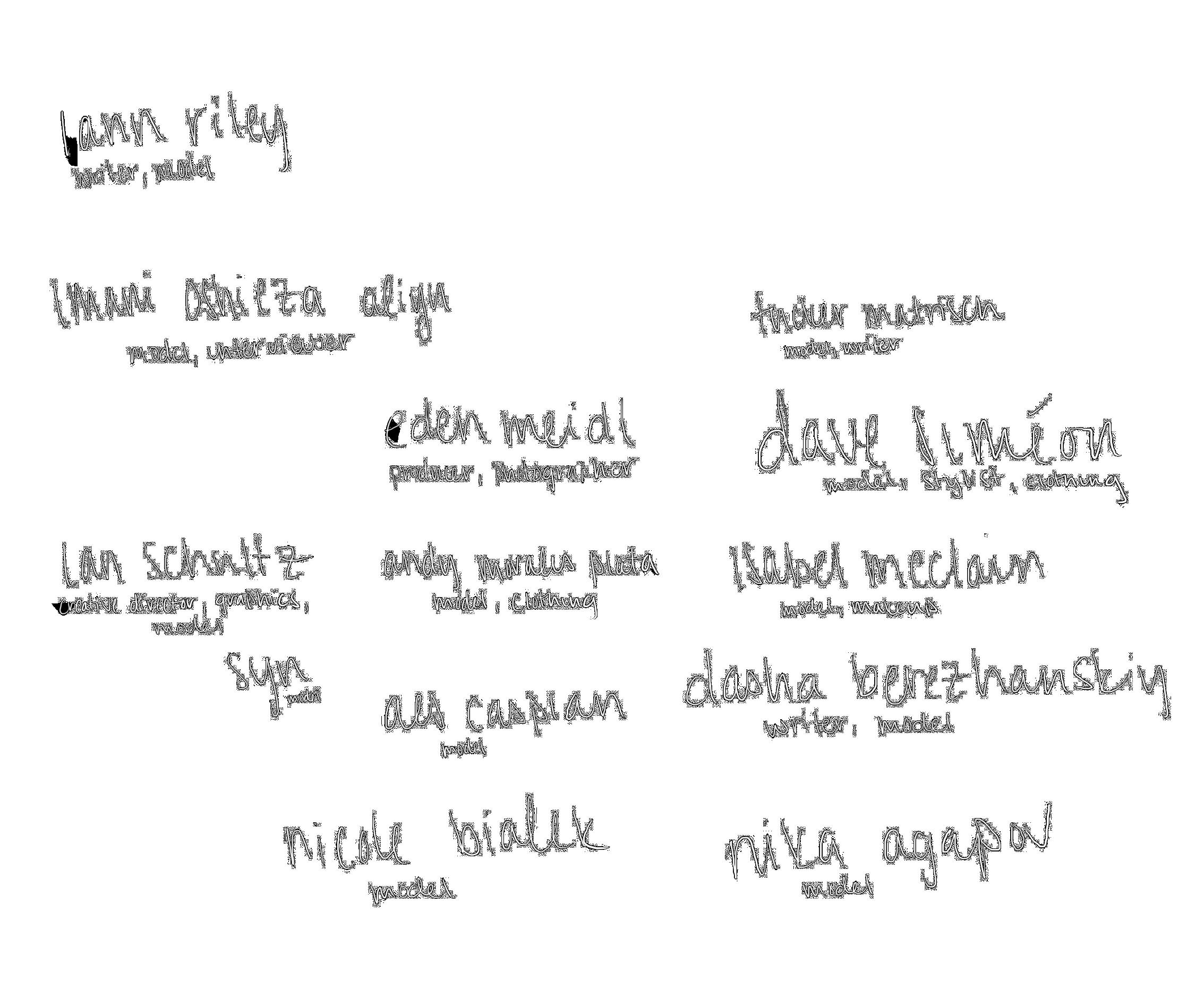
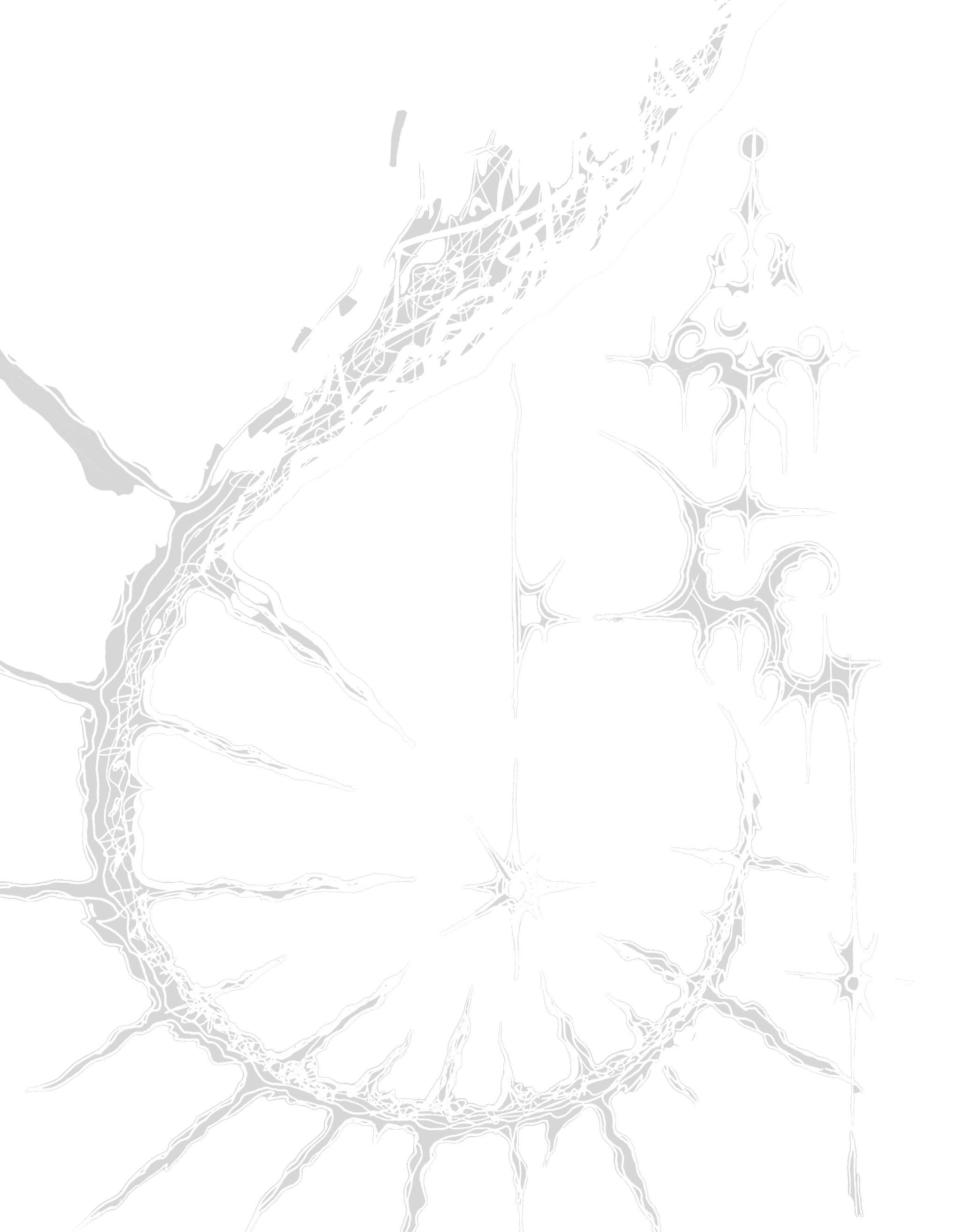
The visual language of the Opium aesthetic occupies a space of paradox. Darkness and light, horror and beauty, otherworldly and natural, chaos and order, contemporary and arcane. The aesthetic is wholly its own, but is founded on staple references that have ingrained themselves into our culture. By looking back and examining the artistic movements on which the Opium aesthetic is built, we can unravel and begin to comprehend the esoteric visual language of Opium and what it cares to tell us.
GOTHIC
References to the Gothic era are found both explicitly and subtly in the imagery of the Opium community. Album art, jewelry and clothing graphics often feature Christian symbols, crosses in particular. Members don crosses hanging both upside down and right side up, portraying a sense of ambiguity about the morality they possess. Do they define themselves as good or as evil? Or by playing with the cross, do they put themselves on a plane outside of traditional morality?
Opium imagery adopts the aesthetics of Gothic churches as well. Pointed arches, tall spires, long lines in the structure–essential aesthetic codes of Gothic churches–all hold a verticality conveying a connection to heaven. By using some of these visual cues in their art and imagery, Opium members create a setting of divinity around themselves. A popular photo in the community depicts Destroy Lonely posing outside of the Duomo di Milano, a Gothic church, enormous in size, with dark arches carved into its facade and countless spires of varying sizes adorning the roof. This colossus of a structure took nearly 600 years to construct and sits in the center of an expansive plaza built around it. By posing in front of it, Destroy Lonely assumes part of the power and grandeur in the Duomo’s essence, and by standing in front of its gates, placing himself outside of the church, he again poses the question of his divine morality.
The layered garments and accessories popularized through Opium fashion, each with a sparkling jewelry centerpiece, mirror the outfits of late Gothic era royalty. Luxurious one of a kind fabrics shaped into truly original forms accessorized with gemstones, furs, and necklaces described the everyday wardrobe of King Henry VIII and Queen Elizabeth I among other rulers. Their displays in fashion set themselves

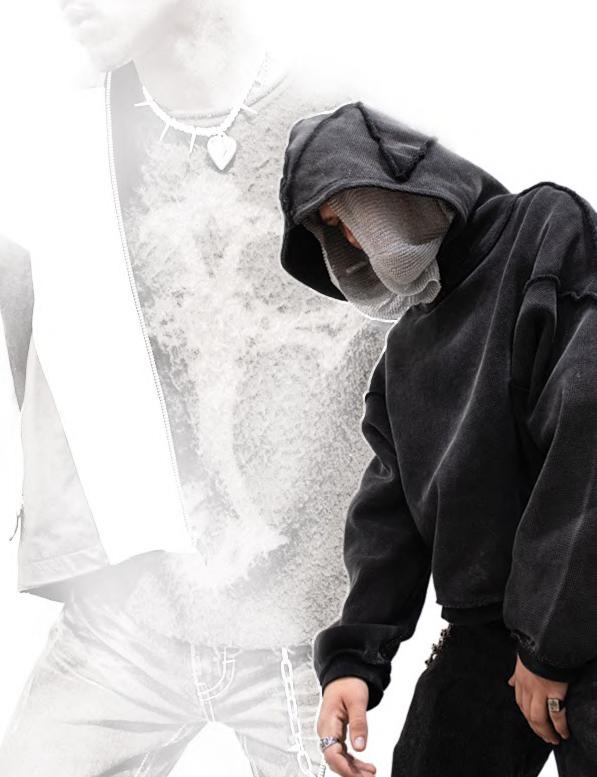

vastly apart from the common folk over which they ruled. Similarly, the designer and avant garde tastes of the Opium crowd sets themselves apart from the modern commoner. Clothing has a divine dividing property. Opium fashion choices suggest that we do not possess the same power as the wearer, and if anything, the wearer deserves worship. Destroy Lonely, Ken Carson, and especially Playboi Carti put themselves on an untouchable pedestal through their outfit choices, commanding a royal distance from their fans who have almost a religious devotion to them.
Inherent to the visual and auditory aesthetic of Opium is a spirit of rebellion and disruption. The music and the fashion departs so far from popular taste, disturbing the common individual.

PUNK
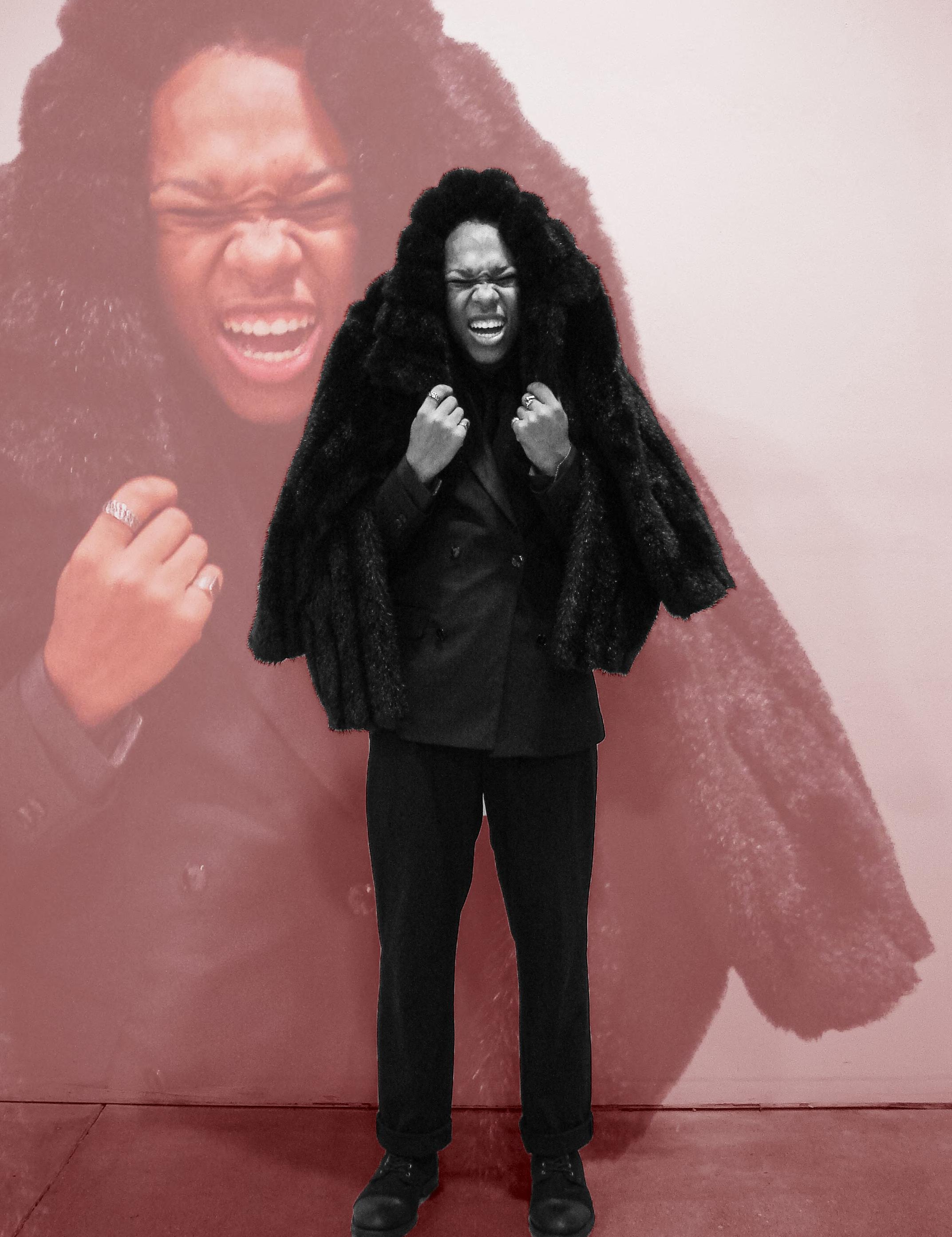
Opium holds a restlessness and defiance that spoke to the youth much similar to a music and fashion movement that became popularized about 50 years ago–that movement being punk.
Originating in London in the 1970s, a disillusioned youth culture started creating transgressive music and fashion embodying the everpresent frustration in the social, economic, and political state of British society.
Vivienne Westwood’s infamous 430 King’s Road shop spurred on this movement through the clothes she displayed there. Selling latex and other fetish gear inspired pieces as well as intentionally distressed and scrappily reworked pieces, she heavily influenced the styles being worn out on the streets. Never before punk were clothes intentionally distressed; never before punk were people getting face piercings in Europe and the United States; never before punk were people dying their hair bold colors and wearing mohawks and liberty spikes out on the streets. Punk was inherently aggressive and transgressive. The youth cared to have their frustrations heard in this new popular music and embodied on the streets with the clothes they themselves wore. Opium, in our age, continues on these traditions and furthers them in new directions. Opium takes all of these punk codes but
hair styles, and subversive, dark clothing, the Opium aesthetic brings to life an ever present lingering discomfort and demands us to look at it. They too embody this aggression in their visual aesthetic, but they also carry it with them on their records with in-your-face production and on stage with members running around, yelling, and getting the crowds fired up. Through reference to punk codes, Opium captures a sense of unrest and invites disruption.
AVANT GARDE
People embodying the Opium aesthetic seem to live in a time and space outside of our present world. The outfits make them seem supernatural or alien–they make them look like something beyond human. This otherworldly essence is largely owed to the unparalleled influence of one of Playboi Carti’s all time favorite designers: Rick Owens.
In the fashion world, Rick Owens stands alone in couture as a posterboy for the futuristic avant garde. He manages to balance simplicity with absolute originality, taking refined fabrics and textiles in monochromatic, earthy and fleshy color palettes and creating designs that simultaneously transform and accentuate the silhouette of the wearer. Brutalist concrete architecture, often referenced in Opium imagery and by Rick Owens himself, parallels the simplicity he captures. It is raw, unadorned, unwavering, and almost imposing. Rick Owens then shapes this palette of minimalism into pieces that inspire both feelings of revulsion and awe. He manages to create clothing that stands right on the fragile border between horror and beauty. The unsettling nature of his pieces act as a rebellion against the status quo, against our sense of order and our understanding of the world and aesthetics. Yet it still manages to find beauty and harmony in this all. By adopting the avant garde tastes of Rick Owens, the Opium aesthetic confronts our notions of beauty and our understanding of our world. Although, through maintaining some sense of aesthetic cohesion, Opium fashion keeps itself regarded as an art through this carefully orchestrated disorder.
By choosing avant garde pieces, wearers distort their bodies to a point of being unrecognizable, making themselves alien to our world. The wearer puts themselves above the common person and places themselves in a context that is truly esoteric. The wearer manages to go beyond human.
HIP HOP
As the Opium aesthetic indulges in the avant garde and reaches into the past for inspiration, it still remains rooted in hip hop culture and its essential ethos. Woven in among the avant garde pieces of Opium wearers are the essential staples of hip hop fashion. The Opium style is still built on top of the foundation of where Opium music comes from: the community of hip hop.
Founded in the mid-1970s in the Bronx, hip hop style grew alongside this new music scene with DJs spinning turntables and B-Boys and B-Girls break-dancing to this nascent sound. Rising out of these economically downturned Black neighborhoods in New York, the style was based around pieces that many people could get their hands on such as workwear (like Timberland boots) and casual wear (like t-shirts). Although, wearers often chose unconventional silhouettes or chose bold colors and graphics expressing themselves with unapologetic spirit. Hip hop fashion centers itself on individuality and on confidence. Creativity and personality makes an outfit even if the core pieces themselves are commonplace. Wearers elevate casual wear and workwear on the authentic runway of the streets. Being a style so rooted in connection to others, the fashion has taken shape and developed differently across the country and the world, helping define and connect these communities.
Workwear and casual wear pieces remain staples in the Opium fashion community, but they also adapt to the popular aesthetic language within. By consistently keeping classic hip hop fashion staples in the aesthetic, Opium retains a feeling of authenticity. The aesthetic proudly hints at its musical and fashion roots, maintaining a feeling of being grounded in the community as it ventures far
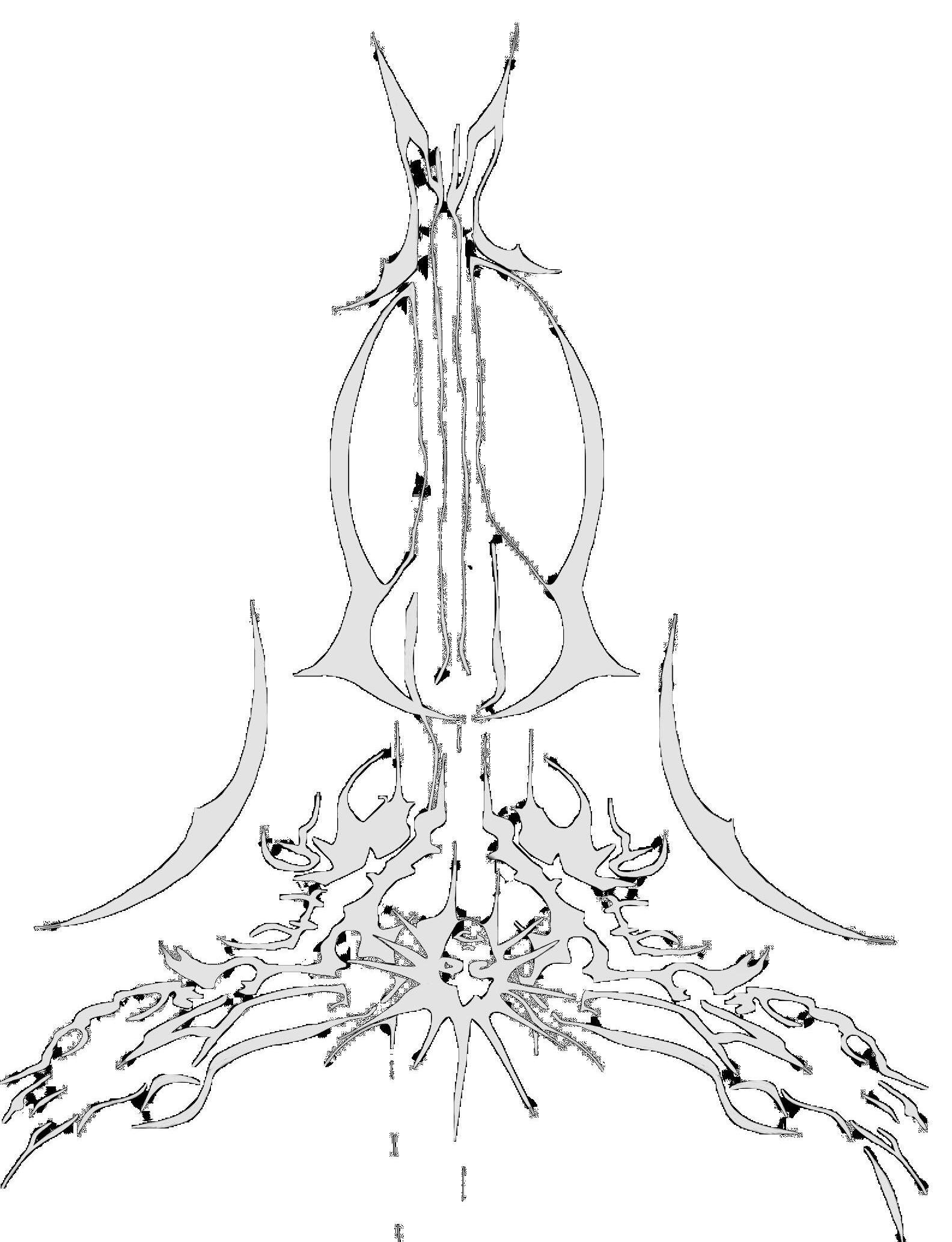

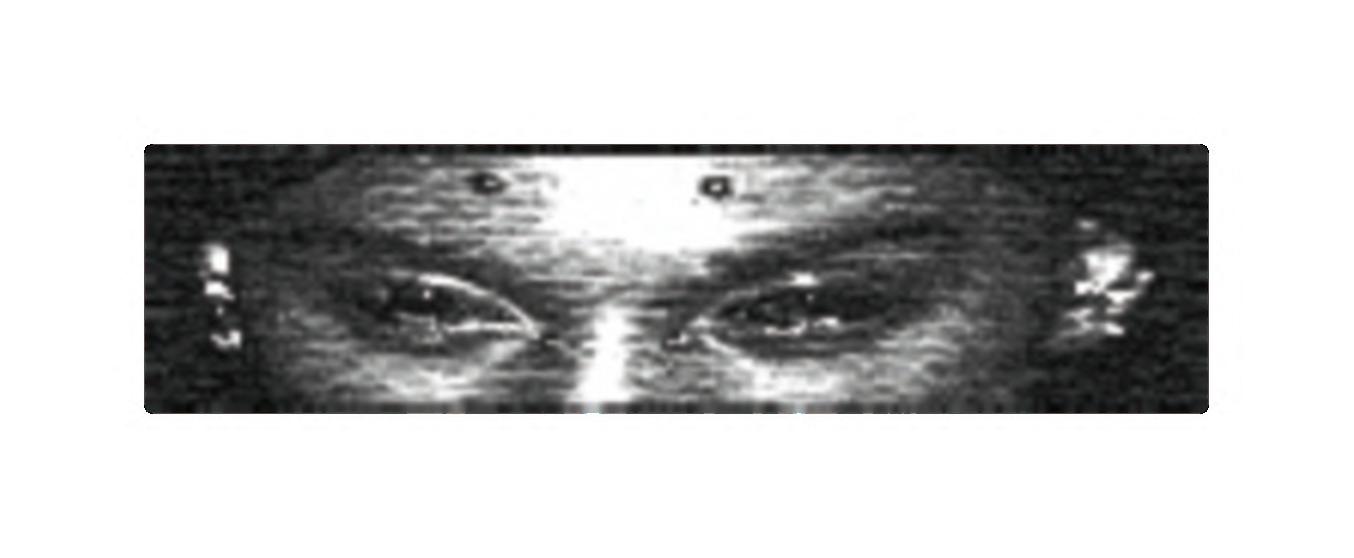

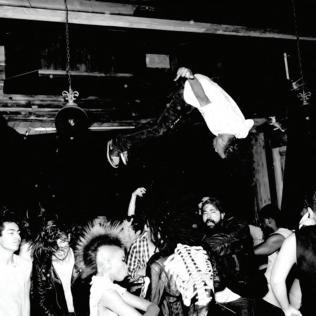
Playboi Carti releases his second studio album “Die Lit” primarily produced by Pi’erre Bourne, debuting at number 3 on the U.S. Billboard 200.
Playboi Carti announces his second studio album, Whole Lotta Red, beginning the project in late 2018. Fans leaking Carti’s music through hacking becomes regular.
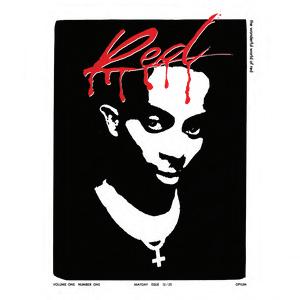
Playboi Carti (Jordan Carter) signs to A.W.G.E. in Harlem, NY after previously working with them from Atlanta, GA.
Playboi Carti walks in Virgil Abloh's, a UW-Madison alumnus, rst men's wear collection for Louis Vuitton during Paris Men's Fashion Week.
Playboi Carti goes on “Neon Tour”.
2017 2018
Playboi Carti releases debut self-titled album.
Playboi Carti named one of XXL's "2017 Freshman Class." An annual list of up-and-coming artists published by XXL magazine.
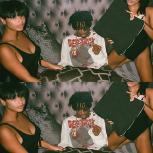
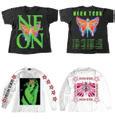
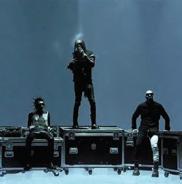

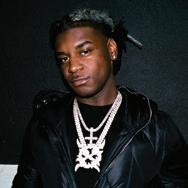
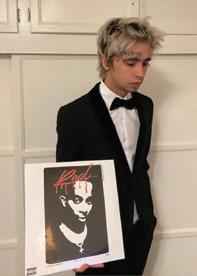
Record label and rap collective “Opium” is founded by Playboi Carti, based in Atlanta, Georgia.
Carti reaches out to rapper Ken Carson with connections to Atlanta-based producers TM88 and Lil88, Ken signs to Opium.
Playboi Carti meets fellow creative and lmmaker Joy Divizn, who is critical in building the Opium aesthetic.

Playboi Carti broke a period of silence by releasing the single “@ MEH” “Whole Lotta Red” releases December 25 debuting at number 1 on the U.S. Billboard 200. This was Carti's rst chart-topping album. Kanye West was executive producer of the album.

Playboi Carti contacts fellow creative Mitch Modes. This connection leads to them building a relationship that furthers the opium aesthetic.
Playboi Carti meets fellow skater and creative Burbery Erry through Instagram direct message who plays a key role in crafting the opium aesthetic.
Playboi Carti headlines Cyberwurld 2021, a virtual concert experience, on New Year’s Eve. Burberry Erry and Mitch Modes are performance collaborators.
2019 2020
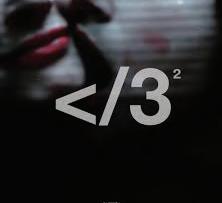
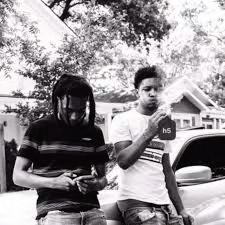
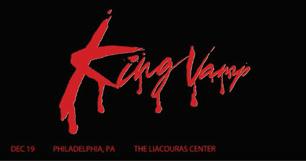
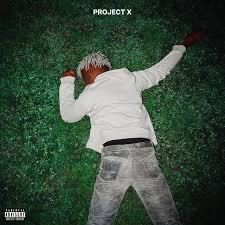
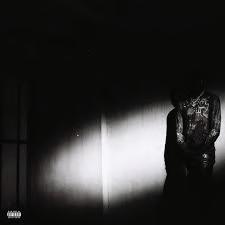

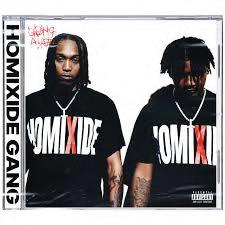
2021 2022
Rapper Destroy Lonely signs to Opium after his track “Oh Yeah” gets Carti’s attention.
Homixide Gang's single “SSN” leads to them signing with Opium. Homixide Beno and Homixide Meechie are Homixide Gang.
Playboi Carti goes on the “King Vamp Tour” with Ken Carson as the opener.
Ken Carson releases his debut studio album “Project X”.



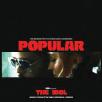


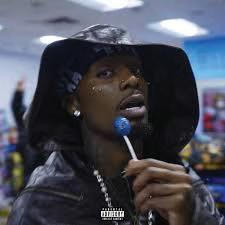


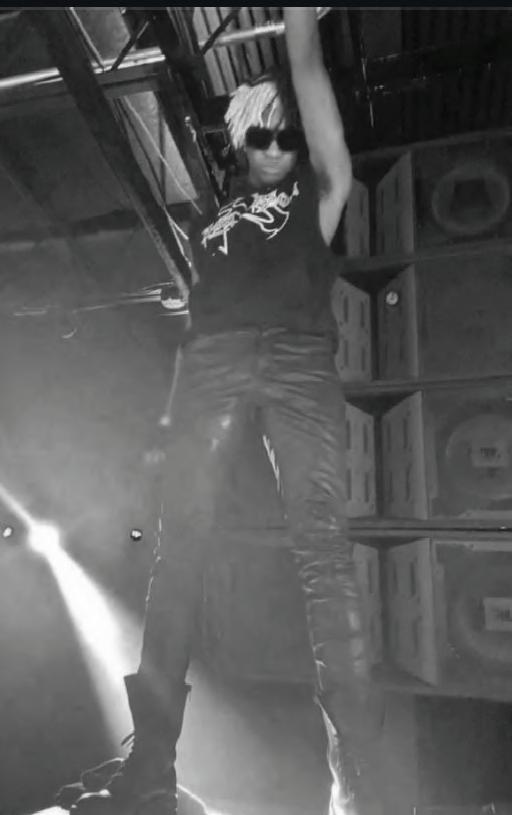

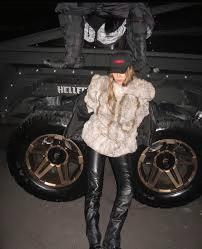



2021 Logo Update
Playboi Carti is present at Kanye West's Donda 2 performance on February 22.
Destroy Lonely releases his debut mixtape “No Stylist” on August 12.
Ken Carson releases “X” his second studio album on July 8. Homixide Gang releases “Homixide Lifestyle” in November. The duo's debut album with Opium.



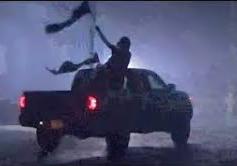

Playboi Carti releases “BACKR00MS” and “EVILJ0RDAN” as Instagram-singles through his secondary account. Carti makes a guest appearance during Travis Scott's performance at the 66th Annual Grammy Awards.





Playboi Carti is featured on the track “Carnival” in February, part of the collaborative album Vultures 1 with Kanye West and Ty Dolla Sign. The song is nominated for Best Rap Song at the 2024 GRAMMYs.
In March, Playboi Carti releases his single “KETAMINE” via his secondary Instagram account. He also collaborates with Future and Metro Boomin on the track “Type Shit” and teams up with Camila Cabello for the song “I Luv It”
2023 2024
Homixide Gang releases second studio album “Snot or Not” in April.
Destroy Lonely releases his debut album, “If Looks Could Kill” on May 5. A short lm based on the album is also released.
The song “Popular” by the Weekend featuring Playboi Carti and Madonna releases on June 2.
Playboi Carti headlines the Rolling Loud Miami festival on July 21 - one of his most memorable performances.
Ken Carson releases his highly anticipated album “A Great Chaos”.
Playboi Carti starts working with creative @sexisdeath, a well known cyber-sigilism tattoo artist and stylist in uencing his current style.
Homixide Gang releases the album “5TH AMNDMNT” in October.
Playboi Carti is featured on the track "Fein" from Travis Scott's album Utopia.
Playboi Carti releases the songs “Di erent Day”, “2024”, and “H00DBYAIR” via his secondary Instagram account in December. These songs are part of a series of announcements for his alleged upcoming album, “I Am Music”.

2023-Present Logo Update
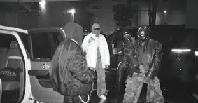




Summer 2024
Homixide Gang releases the album “i5u5we5”.
Playboi Carti headlines the 2024 Summer Smash festival on June 15. During his set, he debutes 10 songs, including the new song “H00DBYAIR”. He also has the whole Opium rap collective up on stage during the performance.
Ken Carson goes on his well anticipated “Chaos Tour”.

August 2024
Destroy Lonely releases his second studio album “Love Lasts Forever”, blending themes of dark aesthetics, gritty "dirt" culture and motocross in uence.
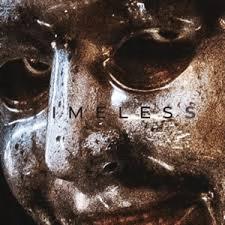

October 2024
Playboi Carti and the Weeknd collaborate on the song “Timeless” Producers such as Mike Dean, Pharrell Williams, and Ojivolta are a part of this track.
Destroy Lonely models for the Spring 2025 show for Vetements at Paris Fashion Week.
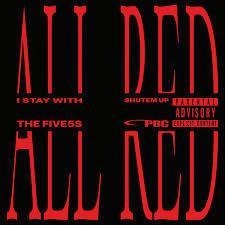
September 2024
Playboi Carti performs in São Paulo, Brazil at The Weeknd's one-night-only concert at Estádio Morumbi, where they premiere their single “Timeless.”
Playboi Carti releases “All Red”, marking his rst solo streaming release since 2020.
November 2024
Opium goes to Complex Con.
Playboi Carti releases “PLAY THIS” on his secondary Instagram account.
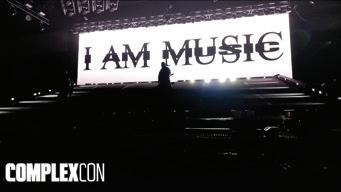
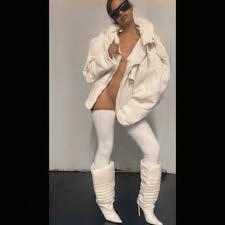
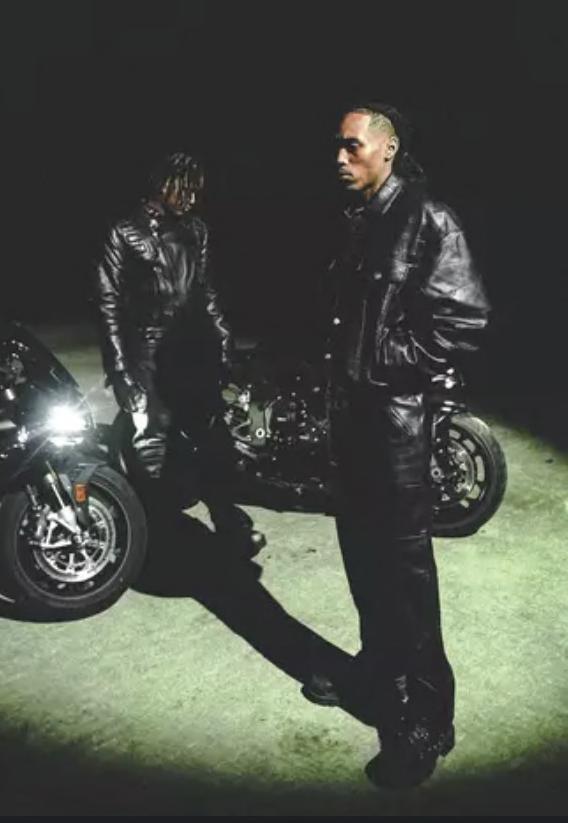
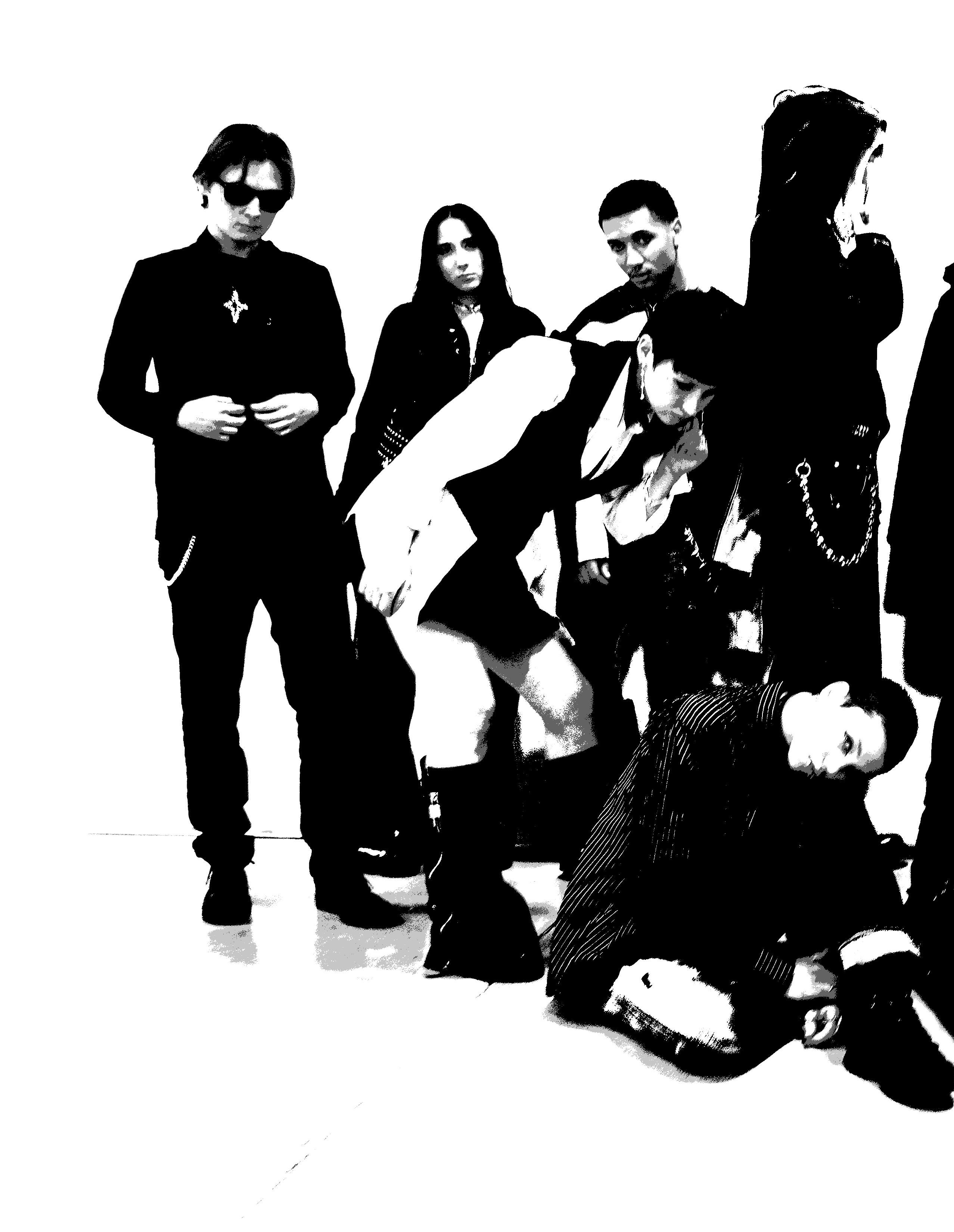
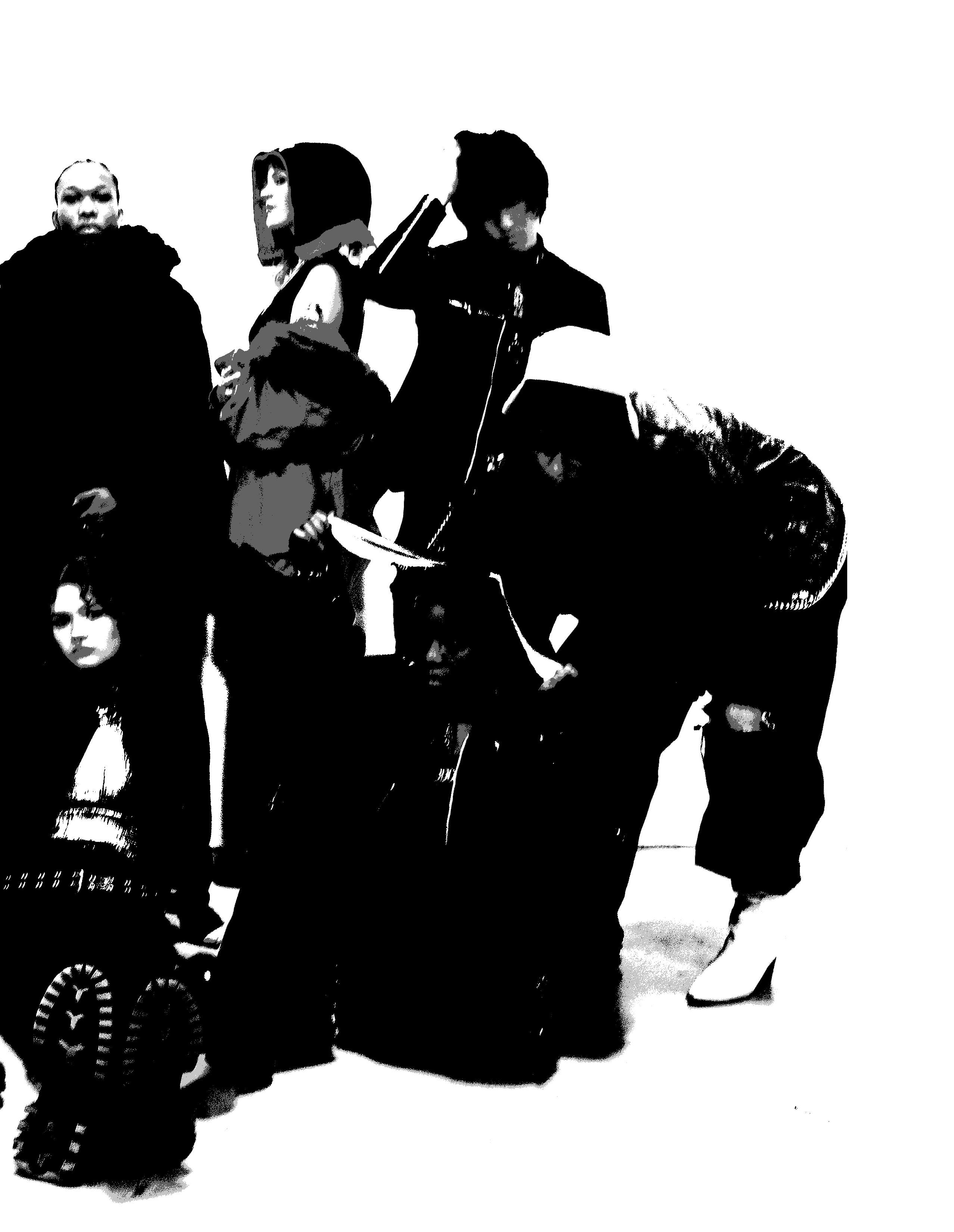
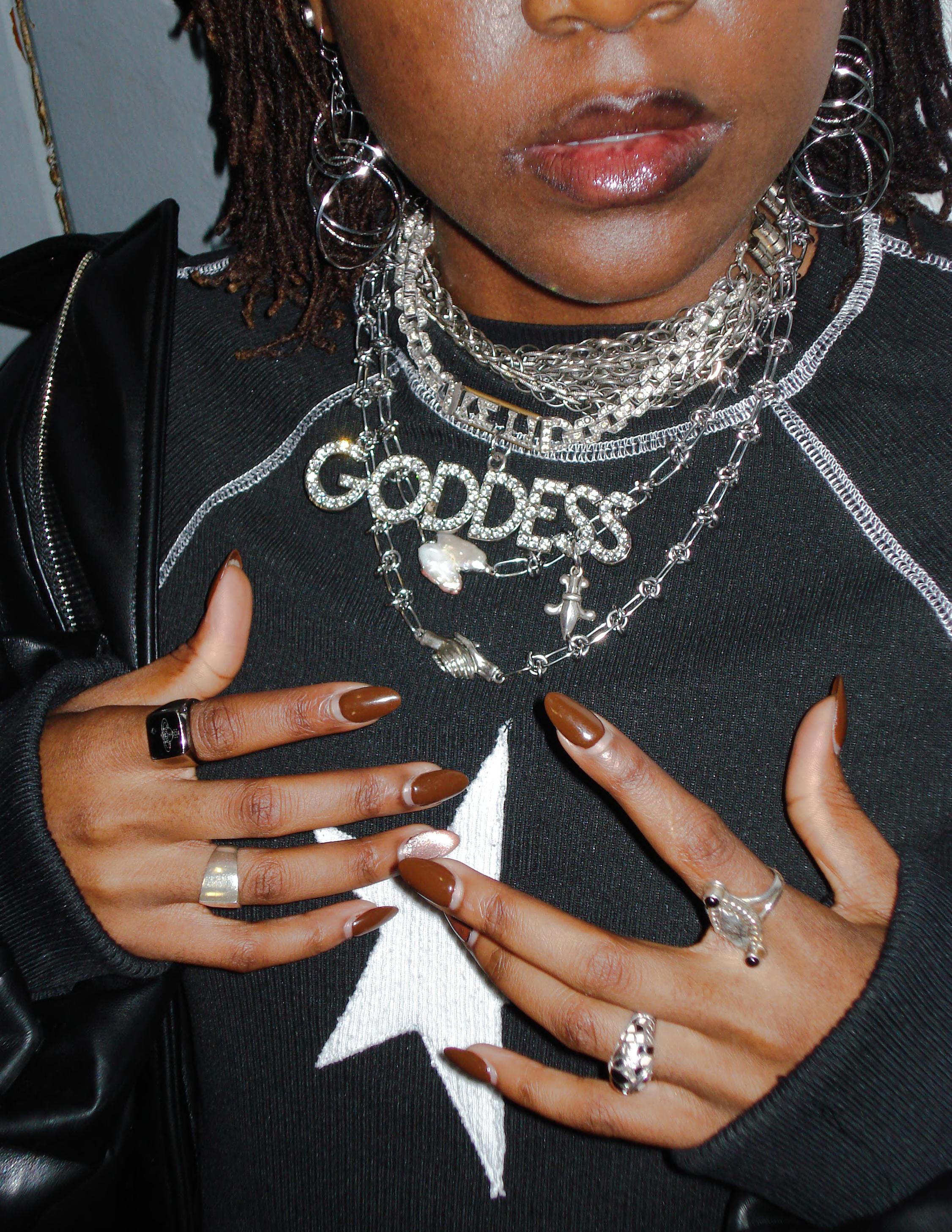
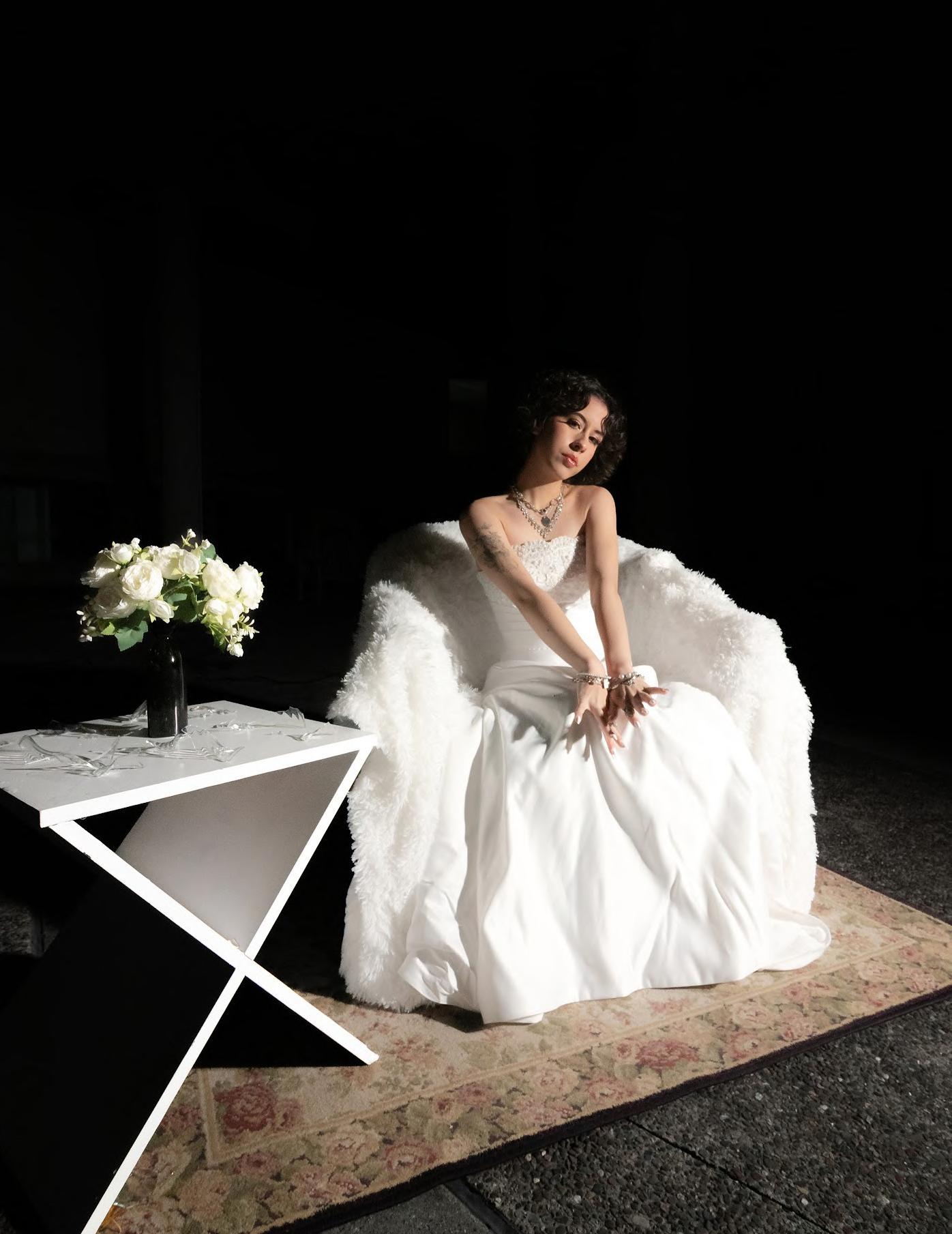
Perfect Swan
all in a days work
Written by Mirabella Villanueva, Ashlin Driscoll, Hailey Yang
Photographed by Kai Heverly and Ashlin Driscoll
Arranged by Erin McDonagh
The pool beckons every eye to watch, every ear to listen. She lowers herself in.
Like an eruption in the night, a symphony around her, every creature brimming with curiosity. Her wings begin to soar across the water, swirling the fog around her as if enrobed in liquid silk.
Each splash, each movement, droplets of the water delicately landing on her feathers, scintillating with moonlight. Diamonds covering her.
From ripples to waves, the pond is now a mighty ocean, heaving and pulling with the storm of her performance against its will.
The creatures, frozen with entrancement, back slowly into the brush, the lush of the reeds suddenly appears duller.
But no, she isn’t done, to her this is just the beginning.
Only now her feathers are drowning in the mist, the fog no longer swirls but consumes.
The isolation so thick it could be cut.
Delicate form now shifted to aggravation, feathers flying, now covering the surface of the pond. No ear can bear to listen, and no eye can bear to watch.
Orion’s Belt now crooked in the sky, and the Moon can’t help but cover her face at the presence of what has unfolded. No observers are left, the reeds now wilted. The spotlight dimmed, her dance must end.
The Earth sighs, the symphony breathing its last breath through the gaps in the trees.
The swan returns to her home.
“Till tomorrow again,” she says in reply, one last drop of the pond rolling down her neck before she lies herself to sleep. The reeds are much more lonesome now.
The pond much less full.
The moon less bright.
And although there will come a day where the moon’s shine dims completely,
The swan takes that chance. Each night.
Just to enjoy her dance another time.
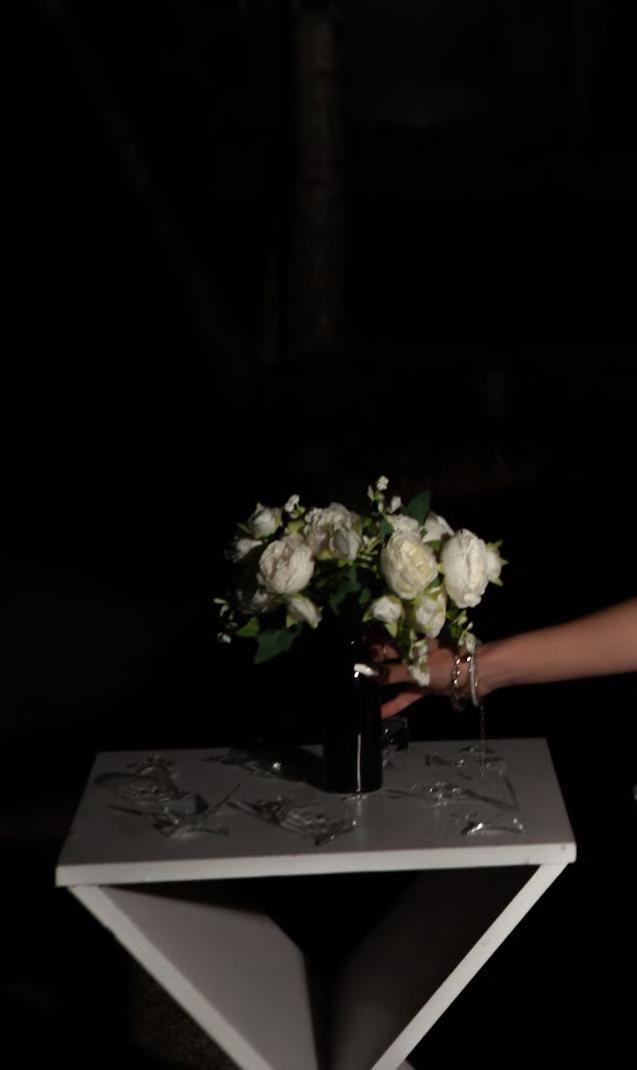

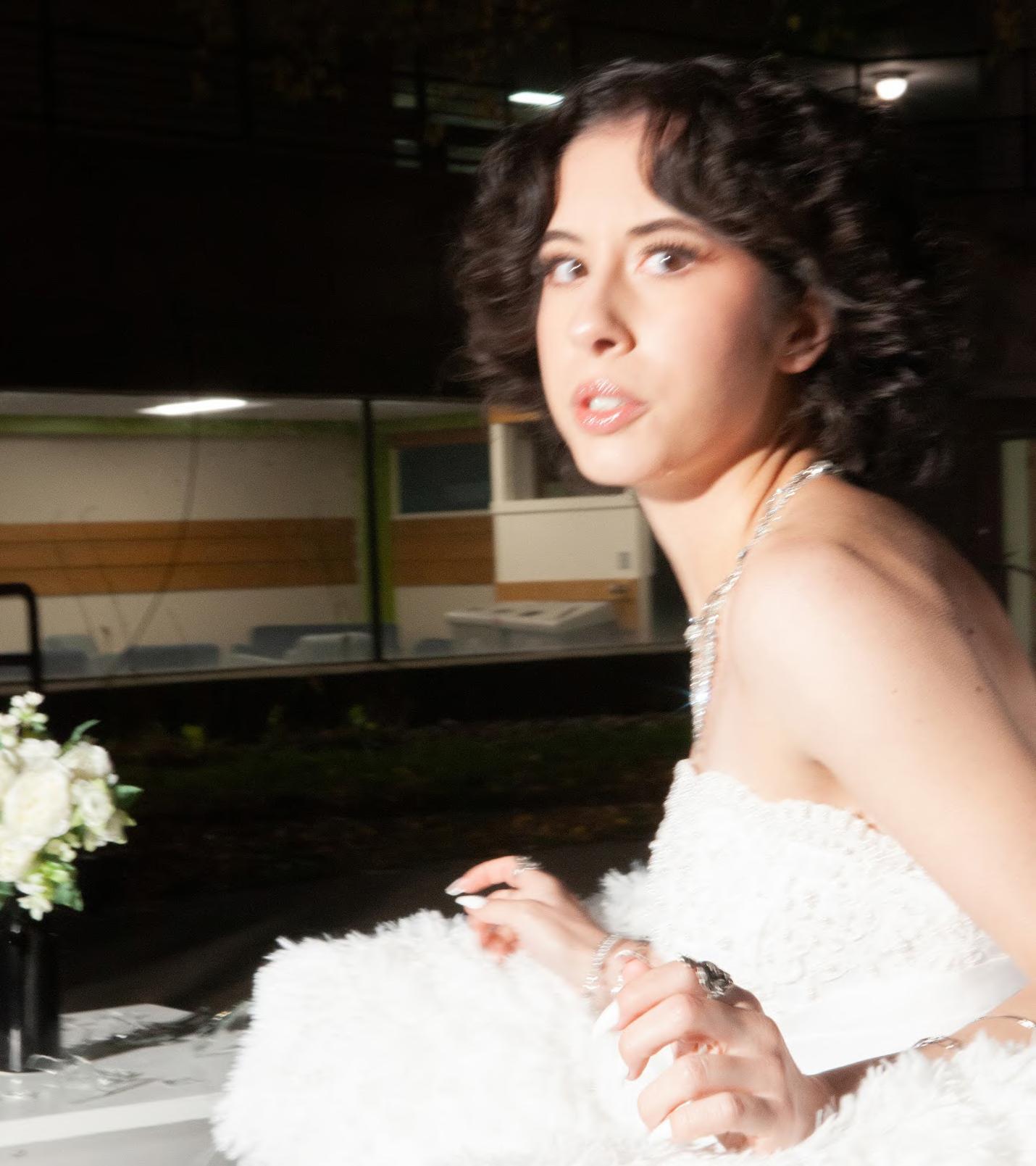
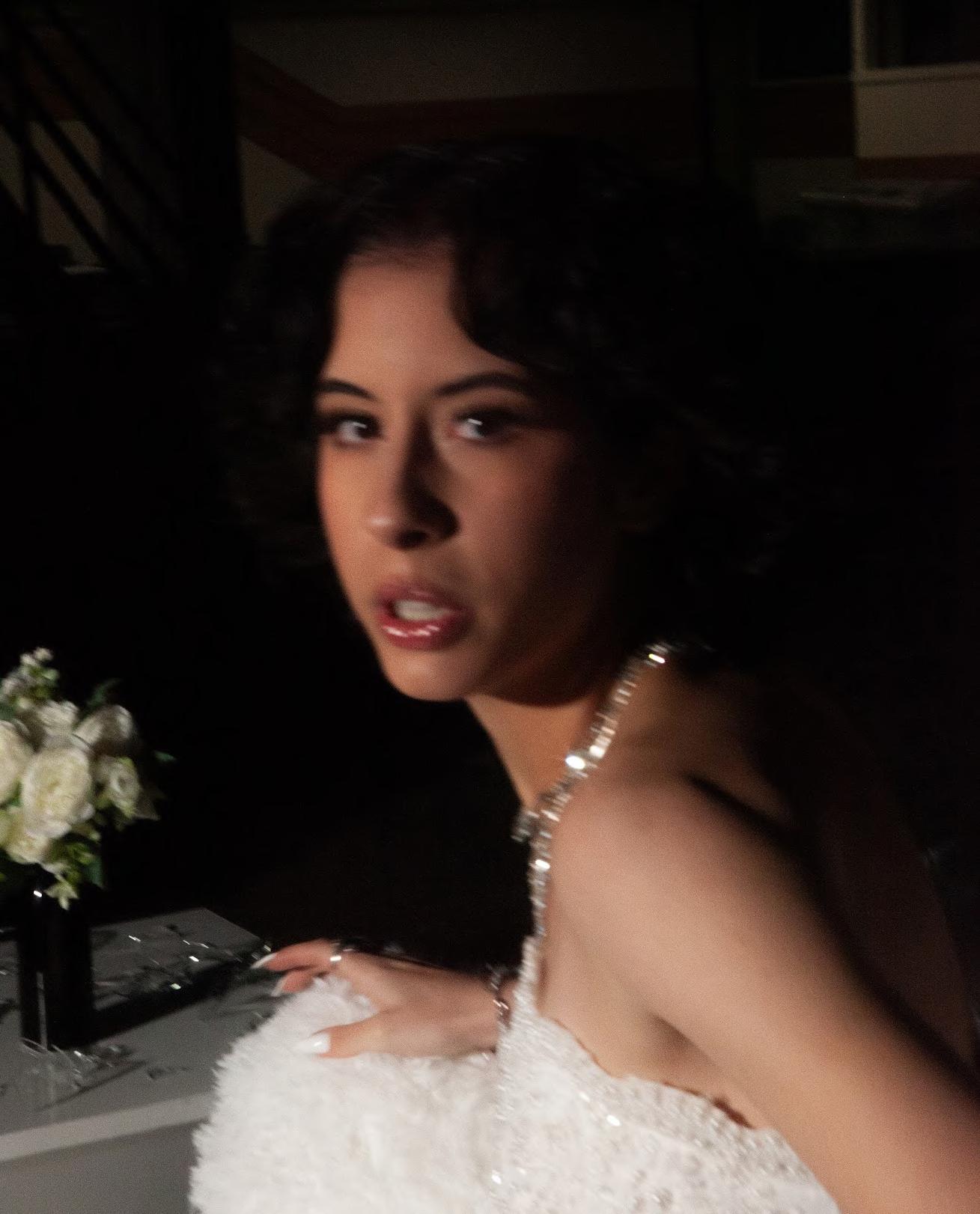
8 am: Wake up. Check phone. Check Instagram.
No new followers?
8:10 am: Brush teeth and wash face. But avoid looking into the mirror for too long.
8:30 am: Eat breakfast
Actually, skip breakfast. The dress needs to fit perfectly.
8:35 am: Put on makeup
Work in threes: Three pats of blush on each cheek. 3 coats of mascara. 3 dabs of concealer- only on the left side though. All my blemishes are on the left side.
9:00 am: Email the photographer. Remind him not to get any photos on my left side tonight.
That’s not asking too much, right?
9:30 am: Pick up the dress from the dry cleaners

9:40 am: Pick up another pack of cigarettes
9:50 am: Check Email
Why haven’t I been getting as many bookings?
10:00 am: Call mom
She calms my nerves on photoshoot days. 12 pm: Buy the flowers for the photoshoot
Everything needs to look perfect.
2 pm: Try on Dress
I can hardly recognize myself.
4:30 pm: Drive to the venue
Everything will turn out fine.
4:50 pm: Set up before crew arrives
Everything will turn out fine.

5:30pm: Kindly remind photographer about left side
He’ll make me look beautiful
5:45 pm: Photoshoot
Is everything turning out fine?
7:00 pm: Resume photoshoot
I thought I told them not to get my left side.
8:00 pm: End Photoshoot
8:10 pm: Clean up after crew
It’s freezing.
8:50 pm: Go home

9:10 pm: Scroll through Instagram
Still no new followers?
3 am: Fall asleep end.
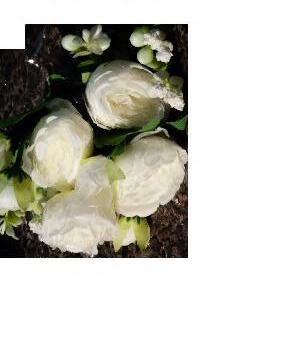
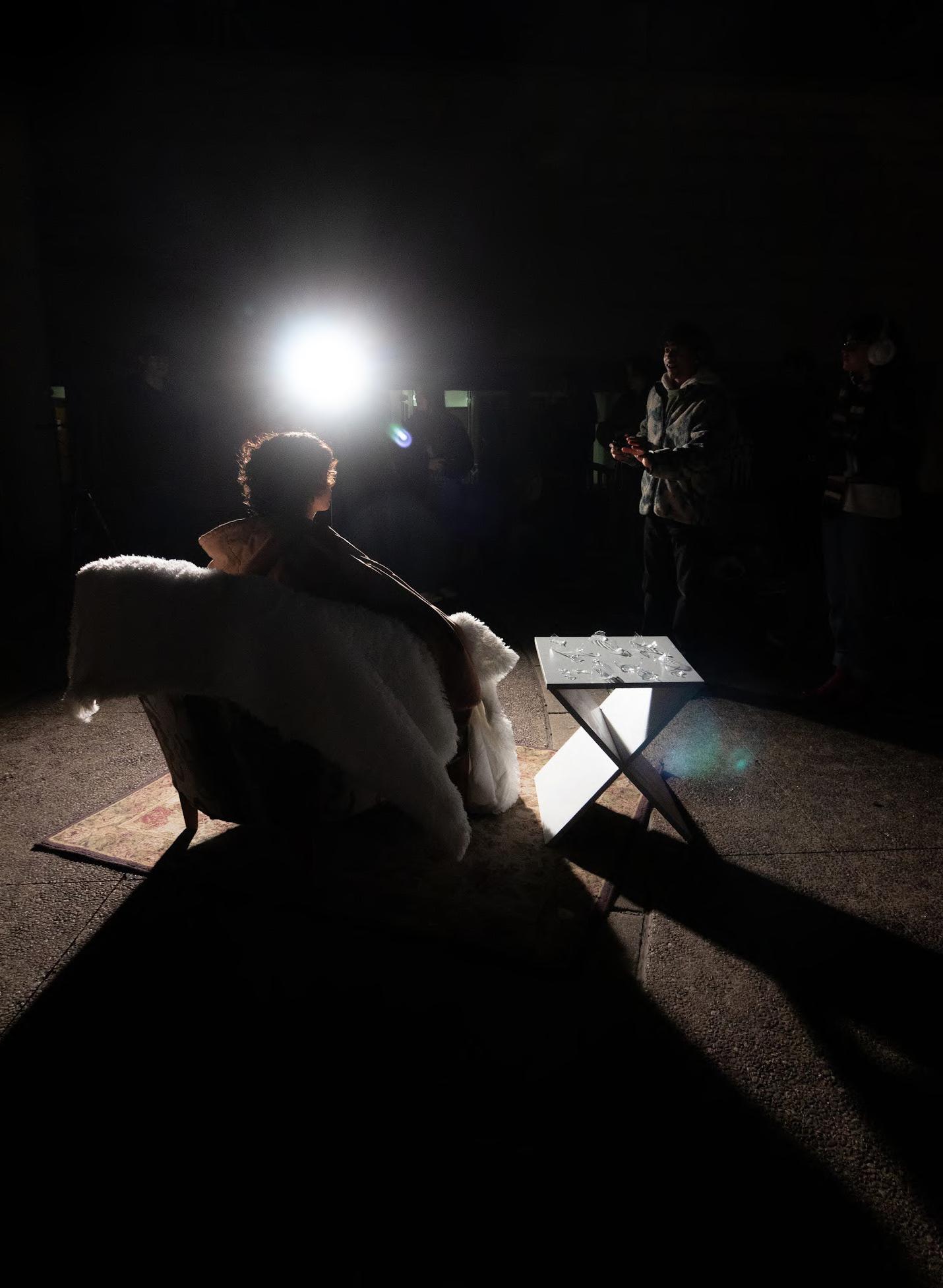
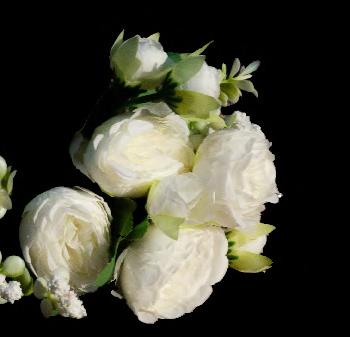

She enjoys simple pleasures.
Dabbing blush to her cheeks with careful strokes, draping herself with fabrics that catch the light, decorating her wrist with the gentle clink of jewelry. It’s a ritual—her own kind of magic.
She surrounds herself with artists. Photographers who know her best angles, stylists who could transform her into something new, lighting specialists who could reflect her glow and draw attention away from misplaced shadows.
It was intoxicating, this world of creation—like a little game.
How far could she push her own limits? How many eyes could she draw to her orbit?
How much more attention could she garner?

Somewhere along the way, the game changed. It became a performance for which there was no real stage or audience. There was no one to applaud or break the silence. There was no enjoyment to be found at the end of the day. Each night ended the same and she was left with a hollow shell.
No warmth to red her cheeks, no companions to spark genuine laughter, no light aside from the glow of her screen; lit with shallow compliments and imitations of love.
She wipes away the layers of defense the shimmers, the gloss, the mask. And there she is alone with the quiet ache of an emptiness she cannot disguise a void so numbing she could not even cry.
The perfect swan.
